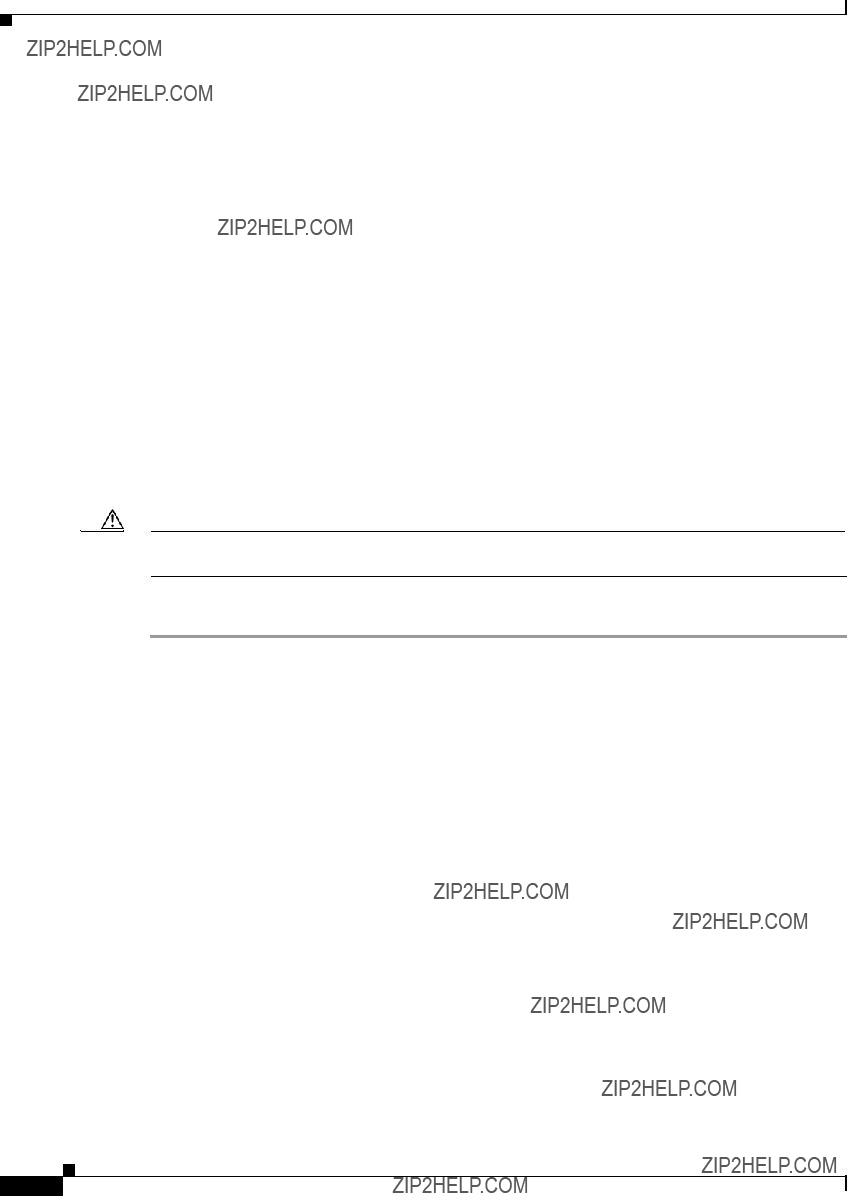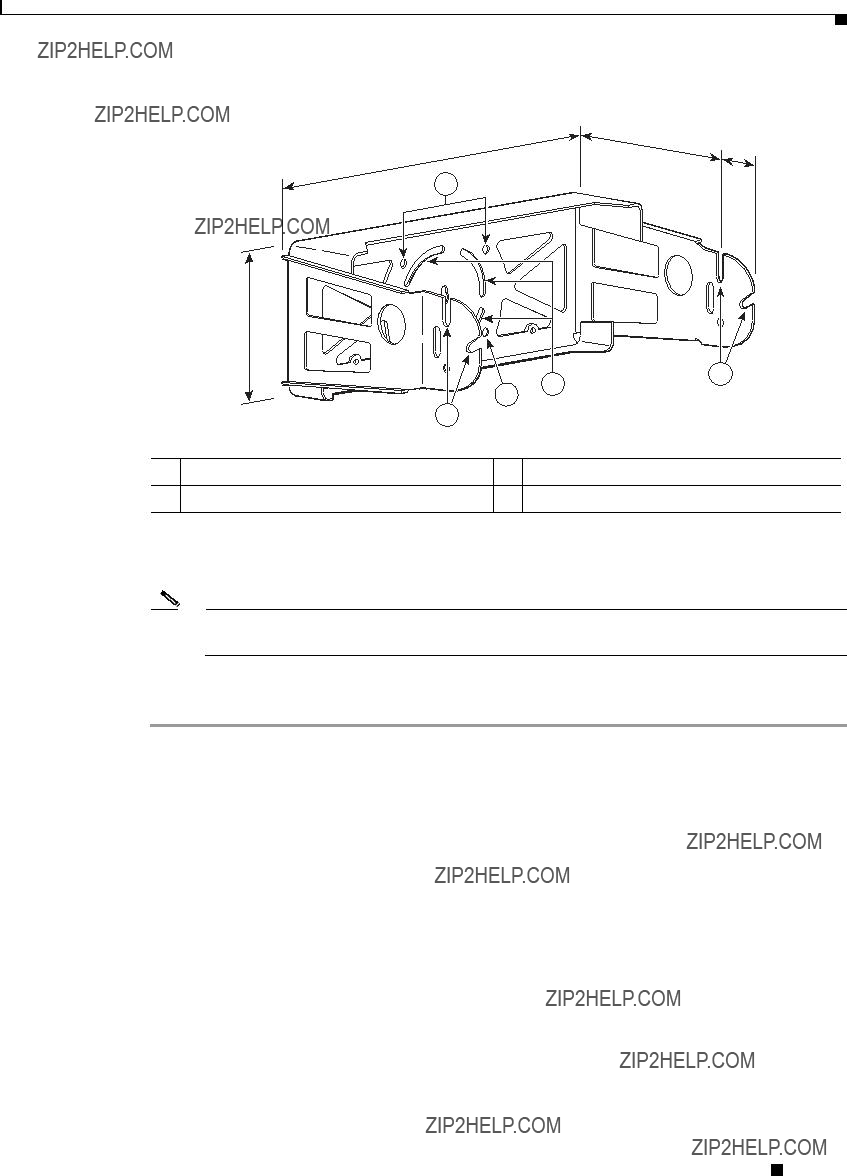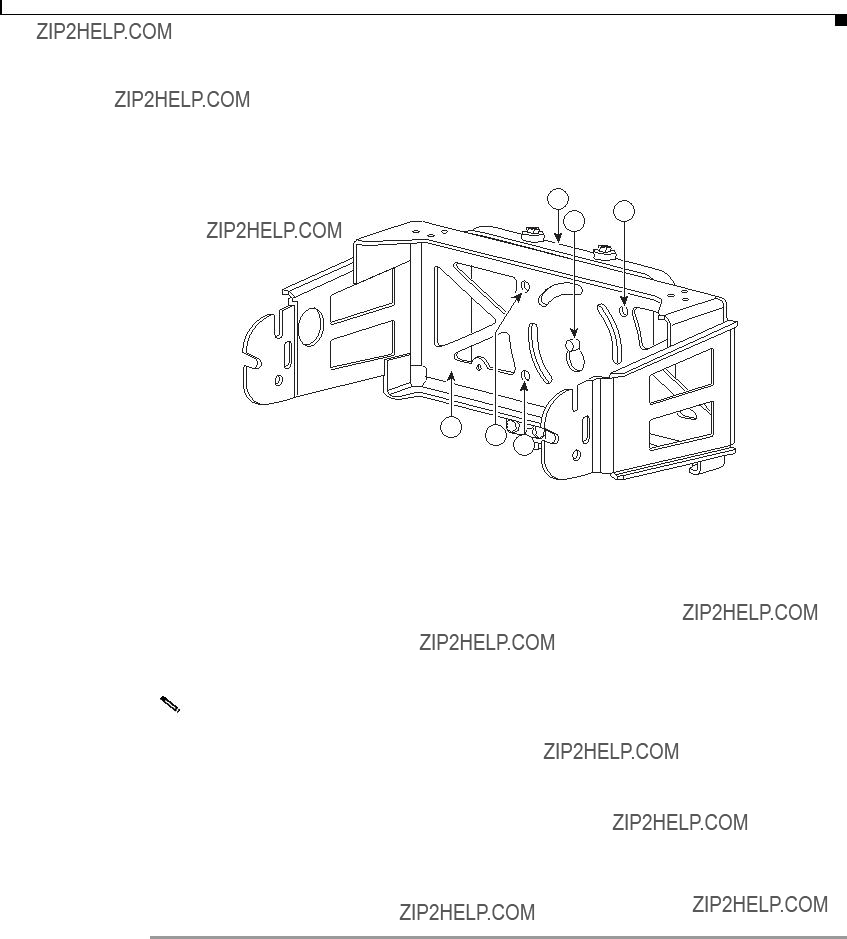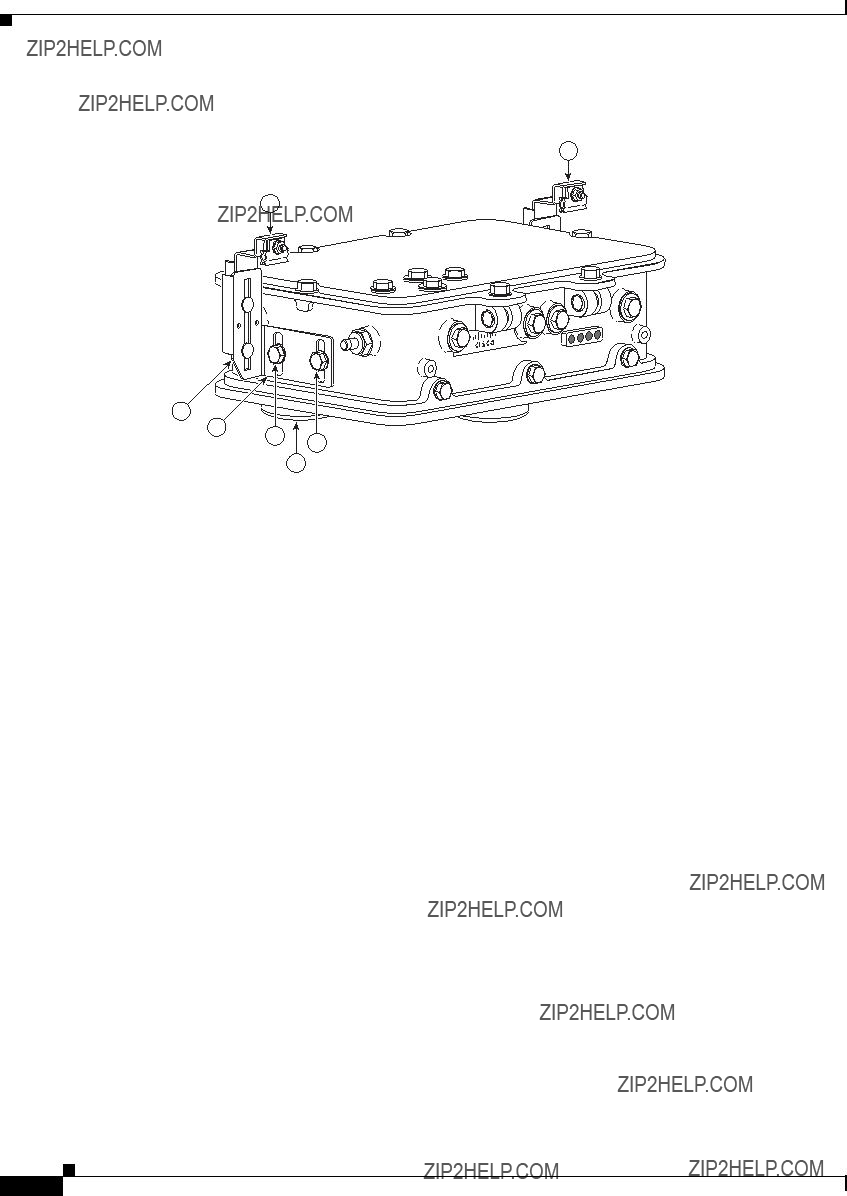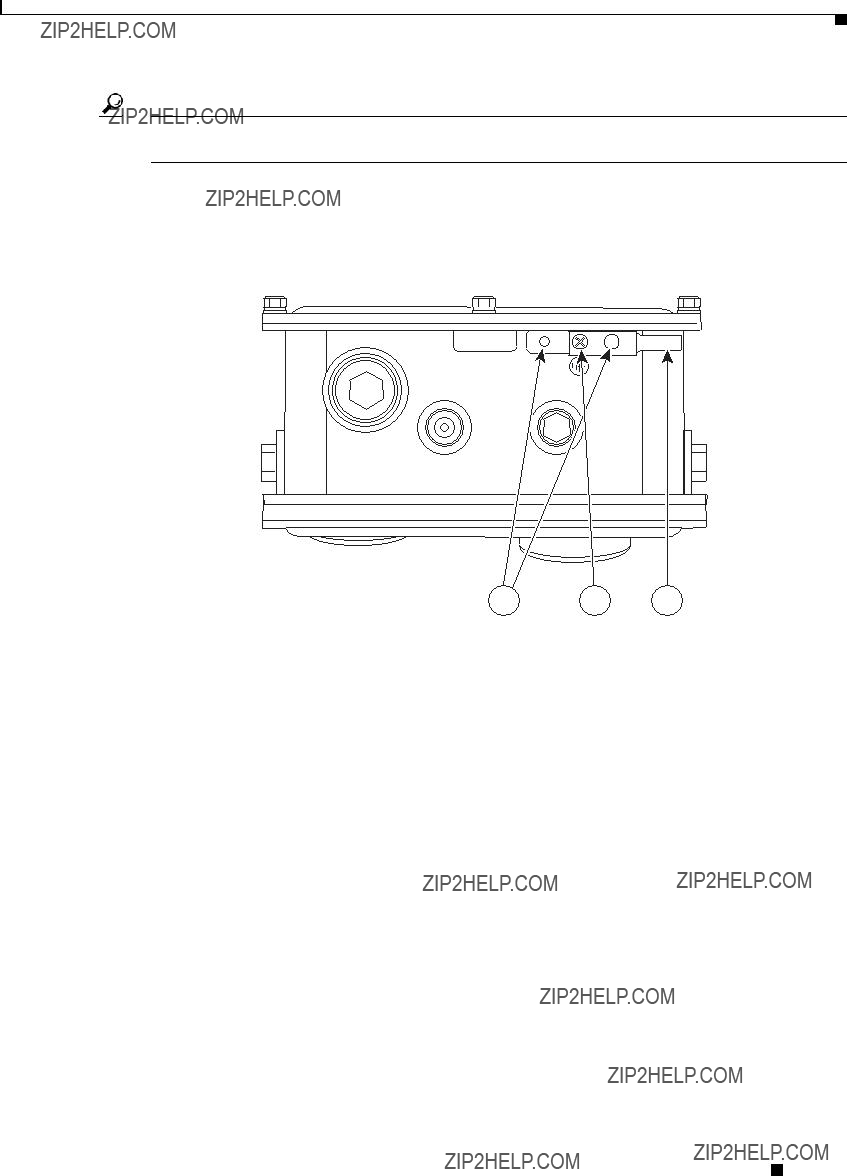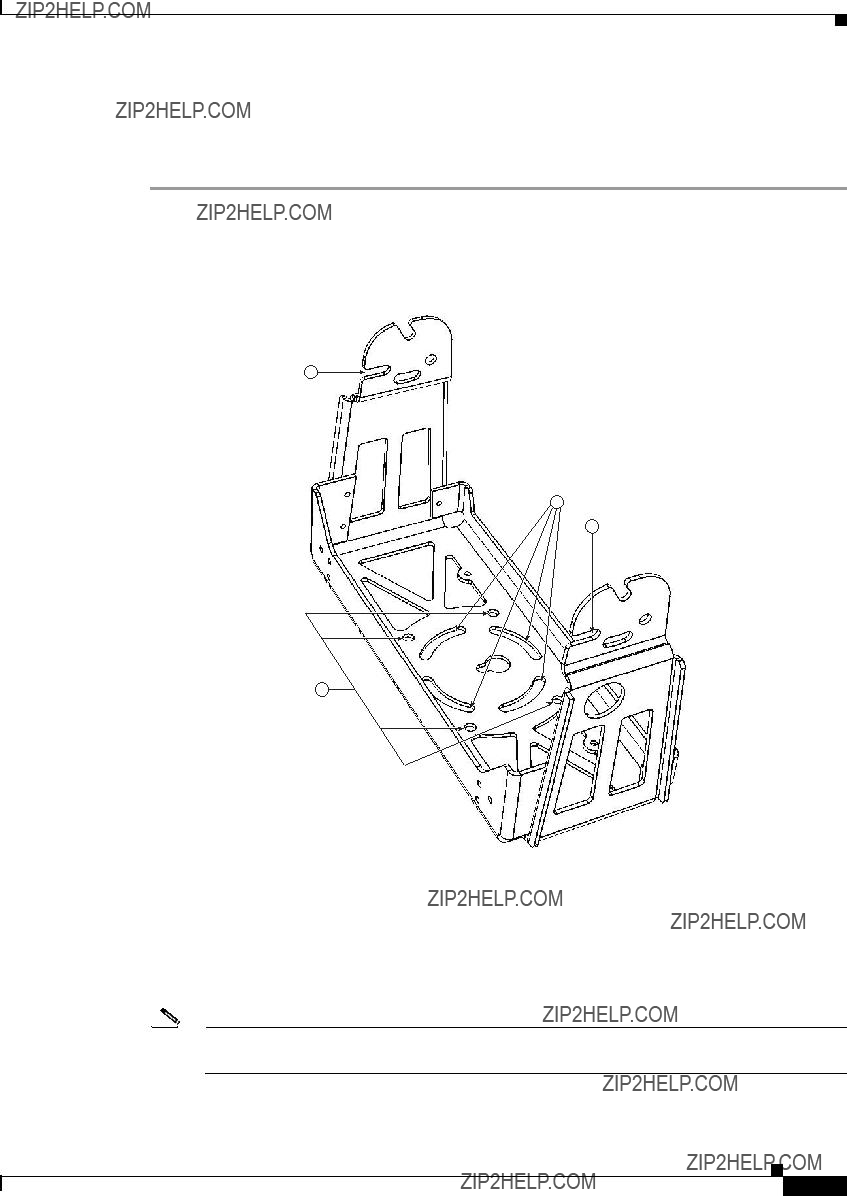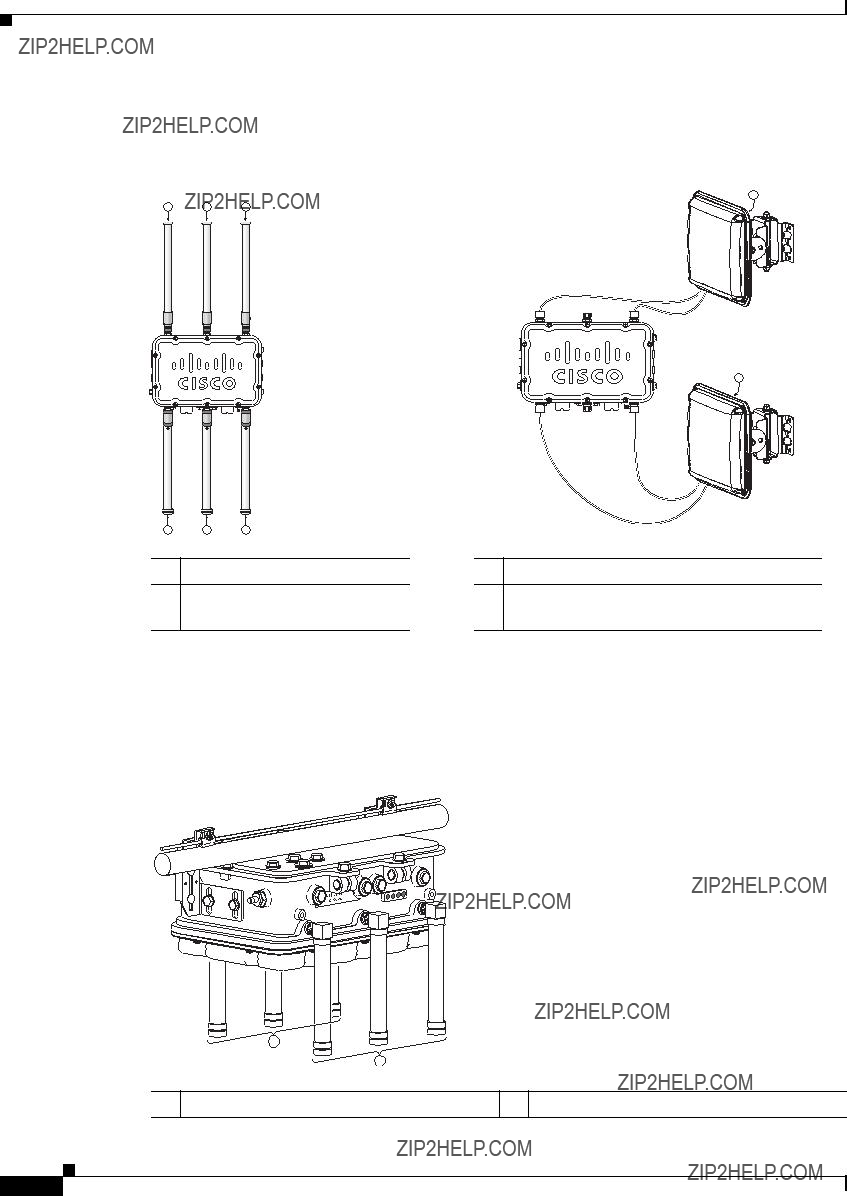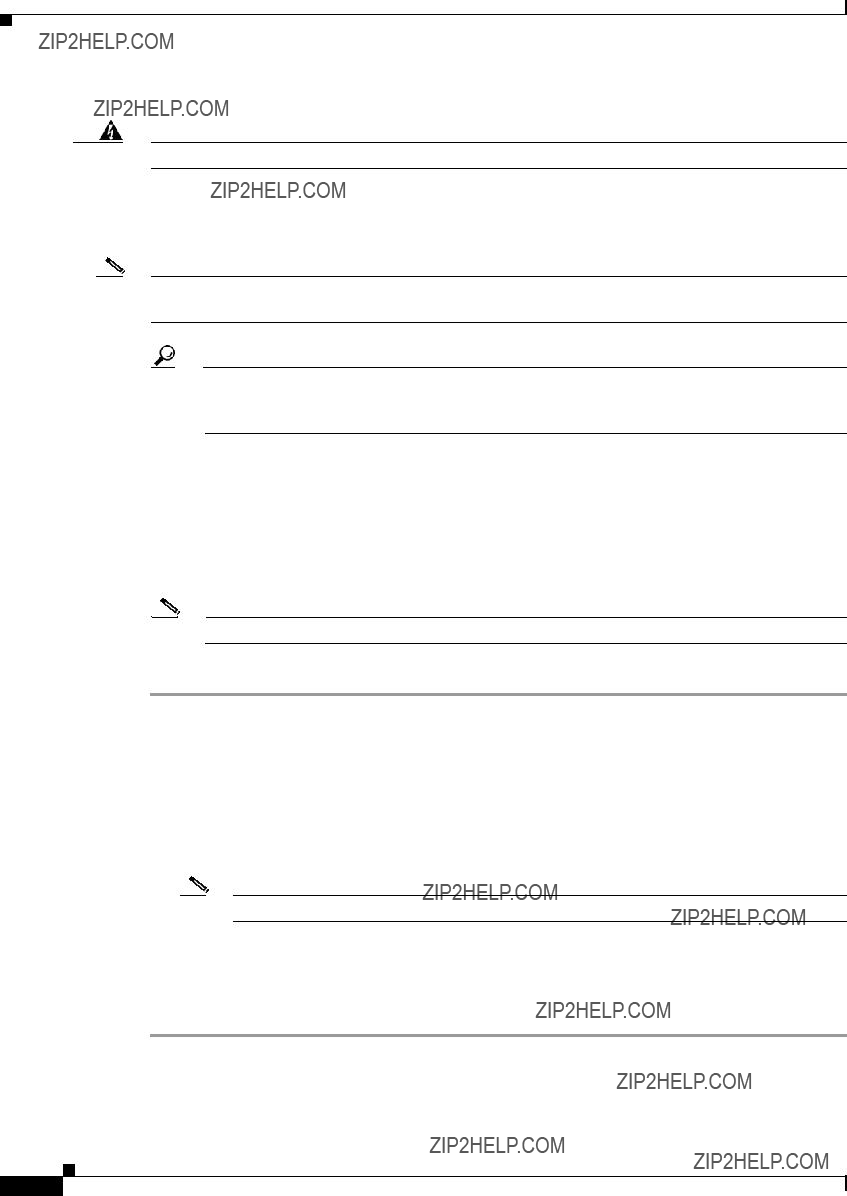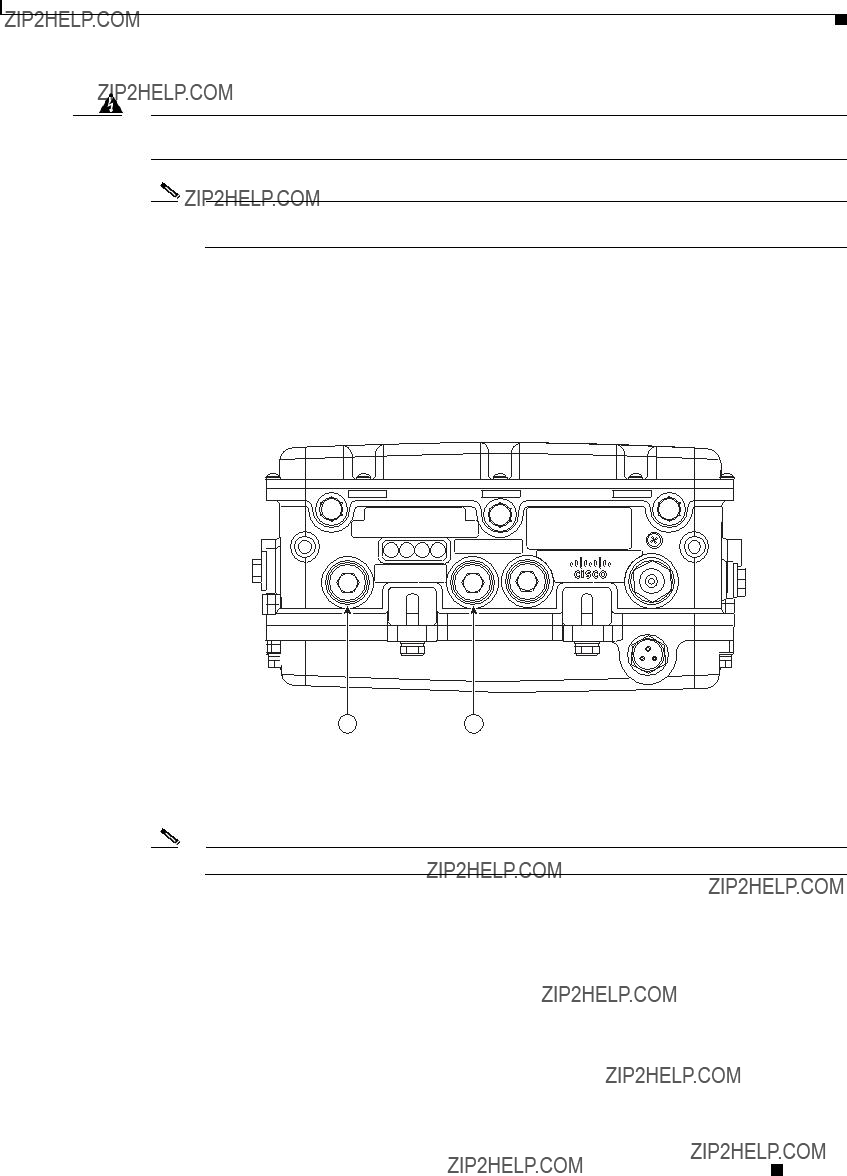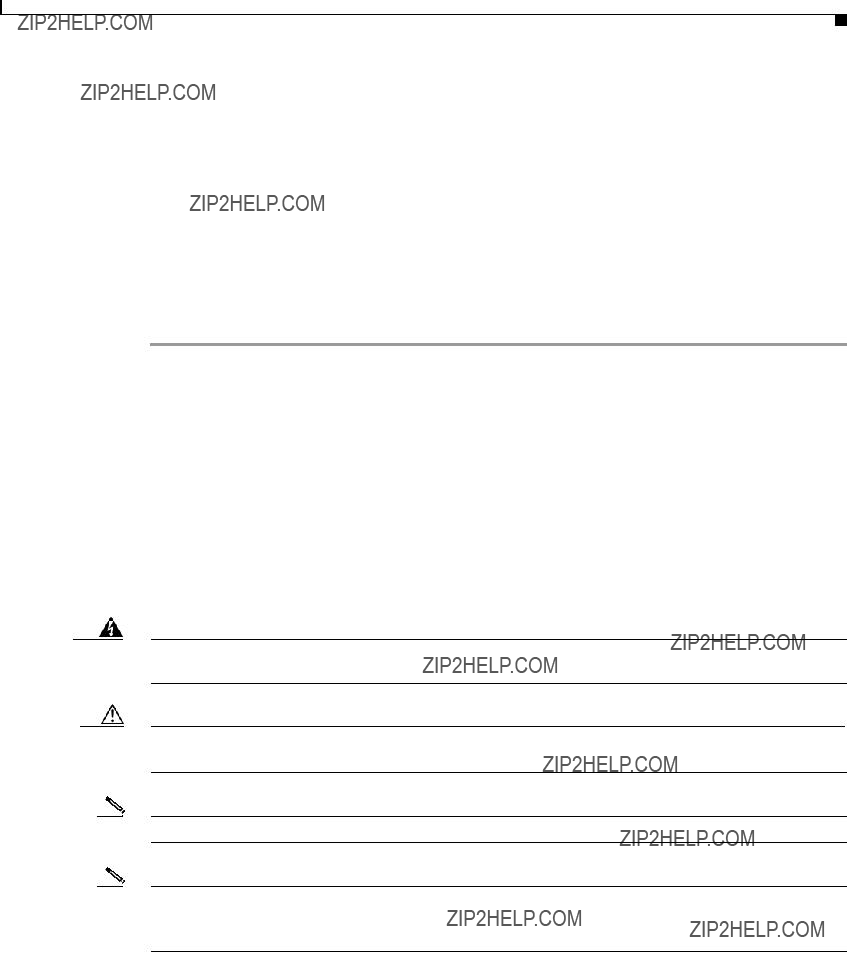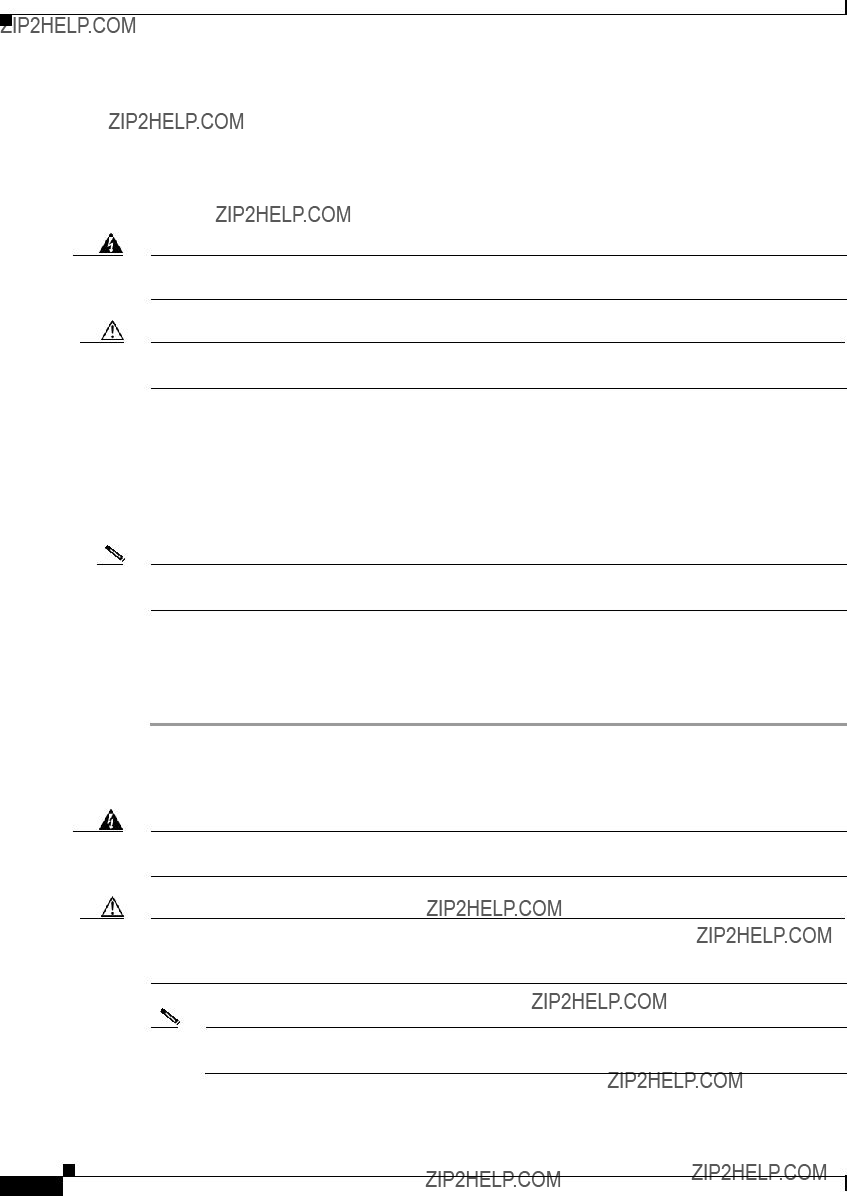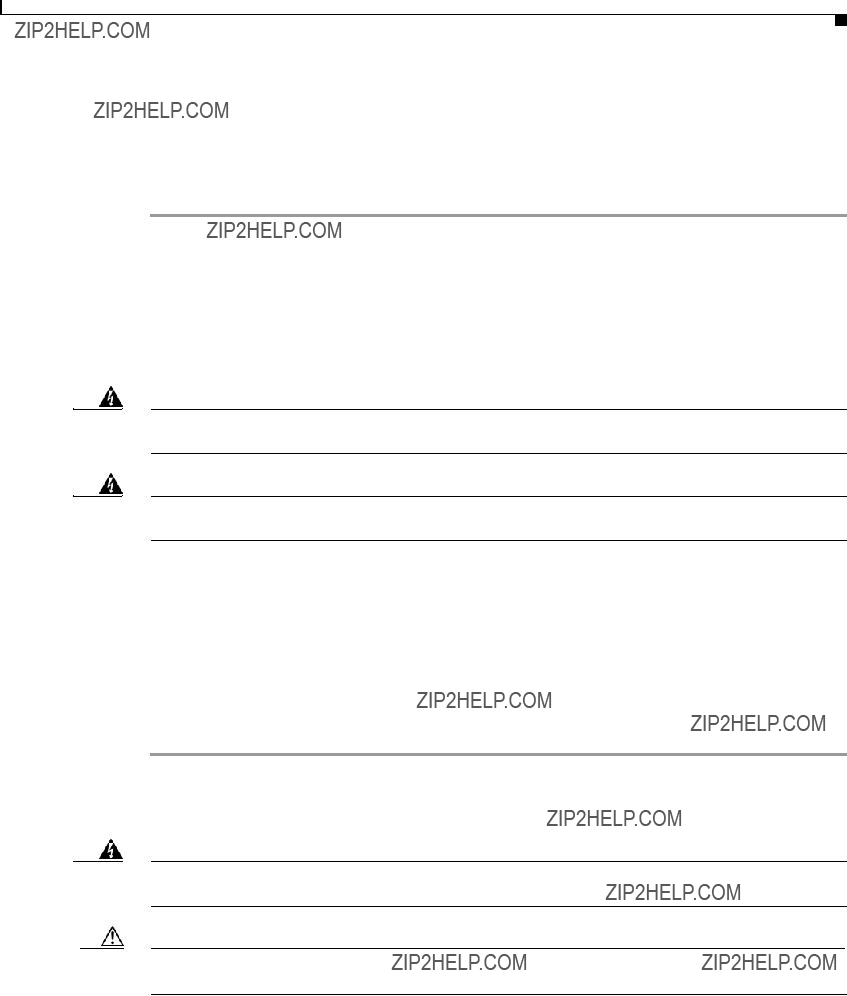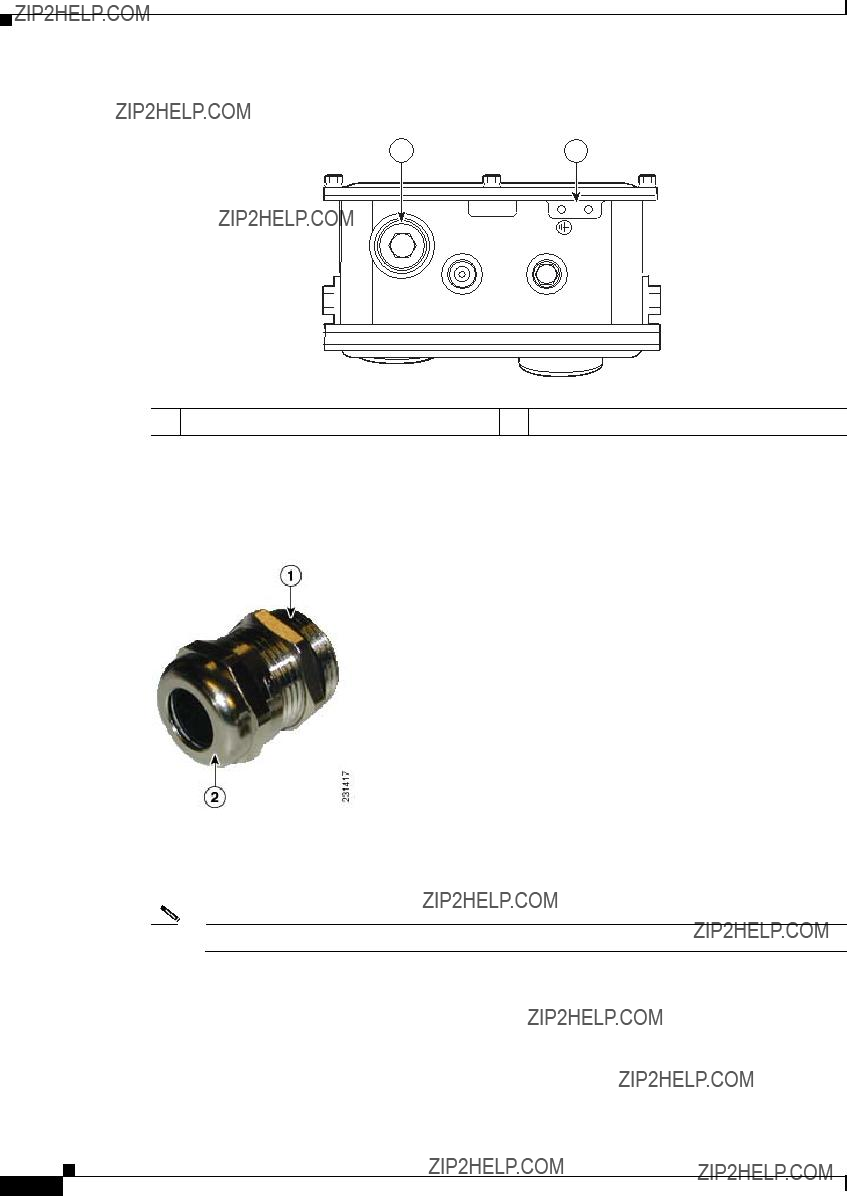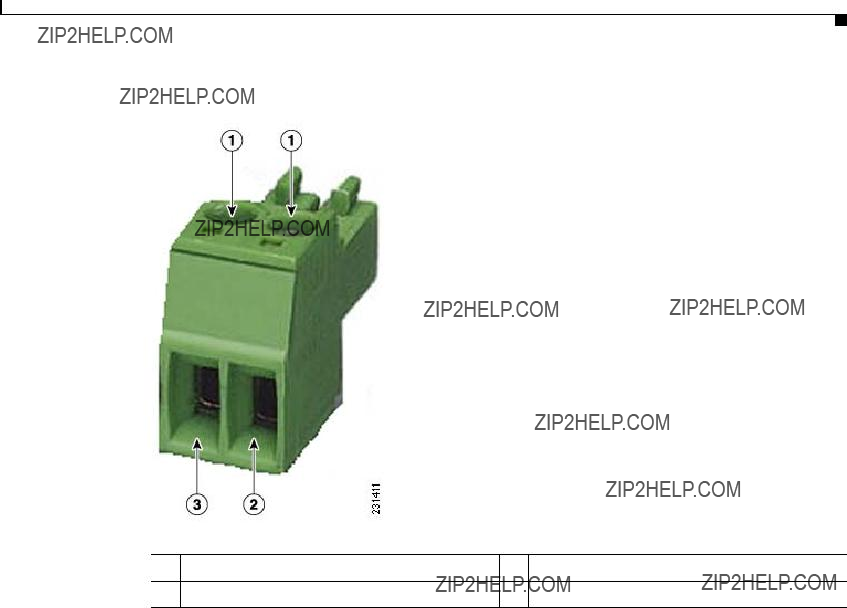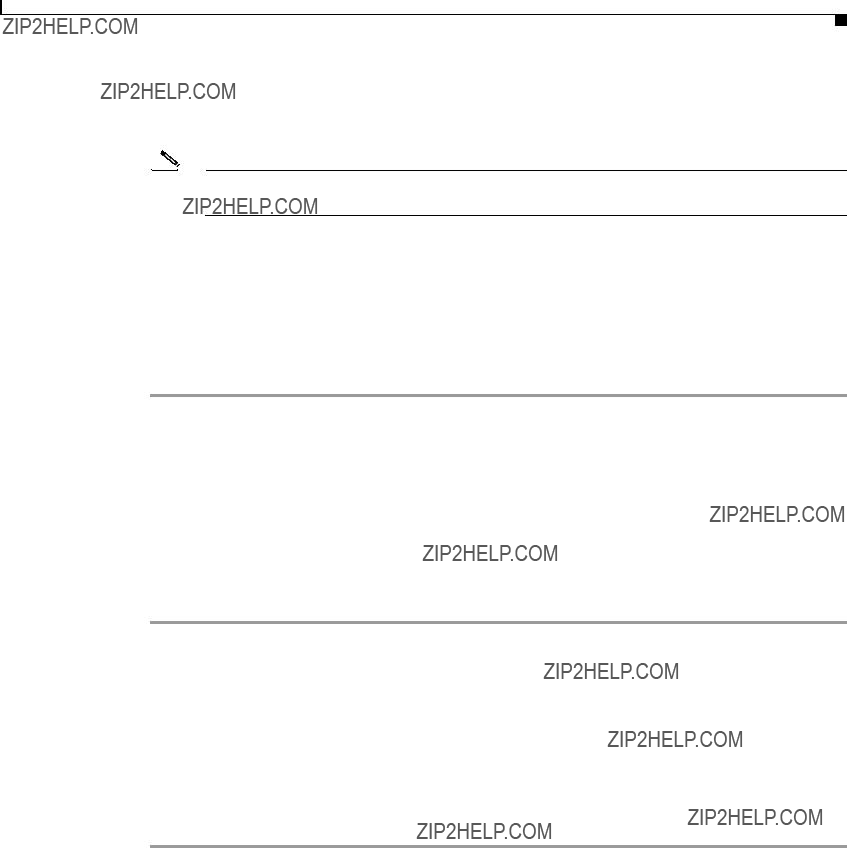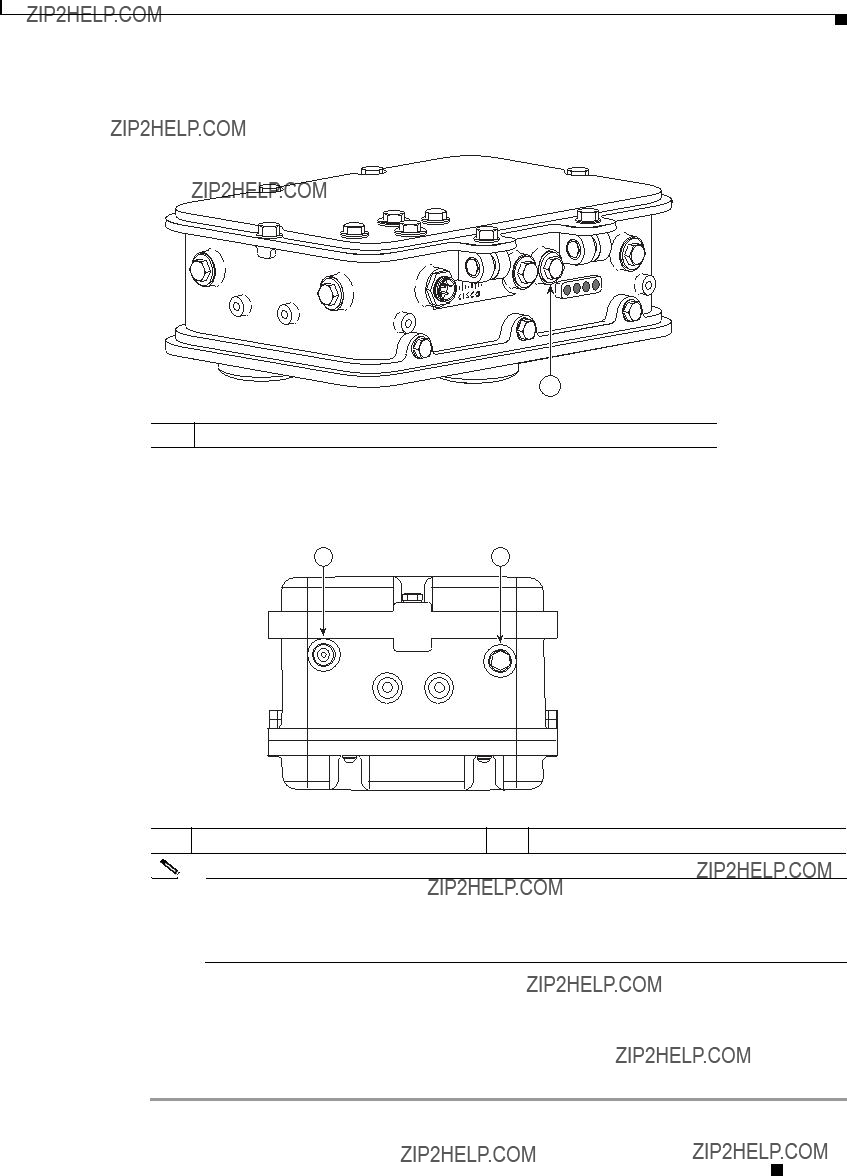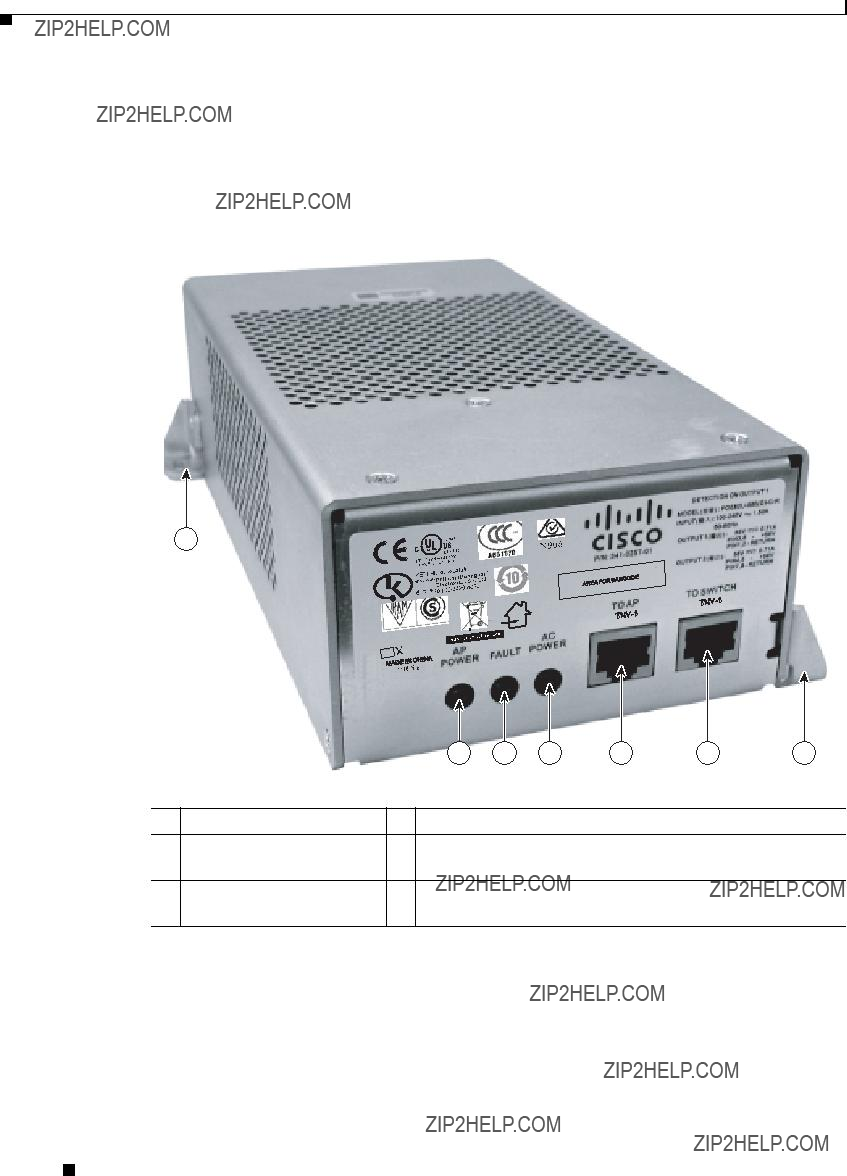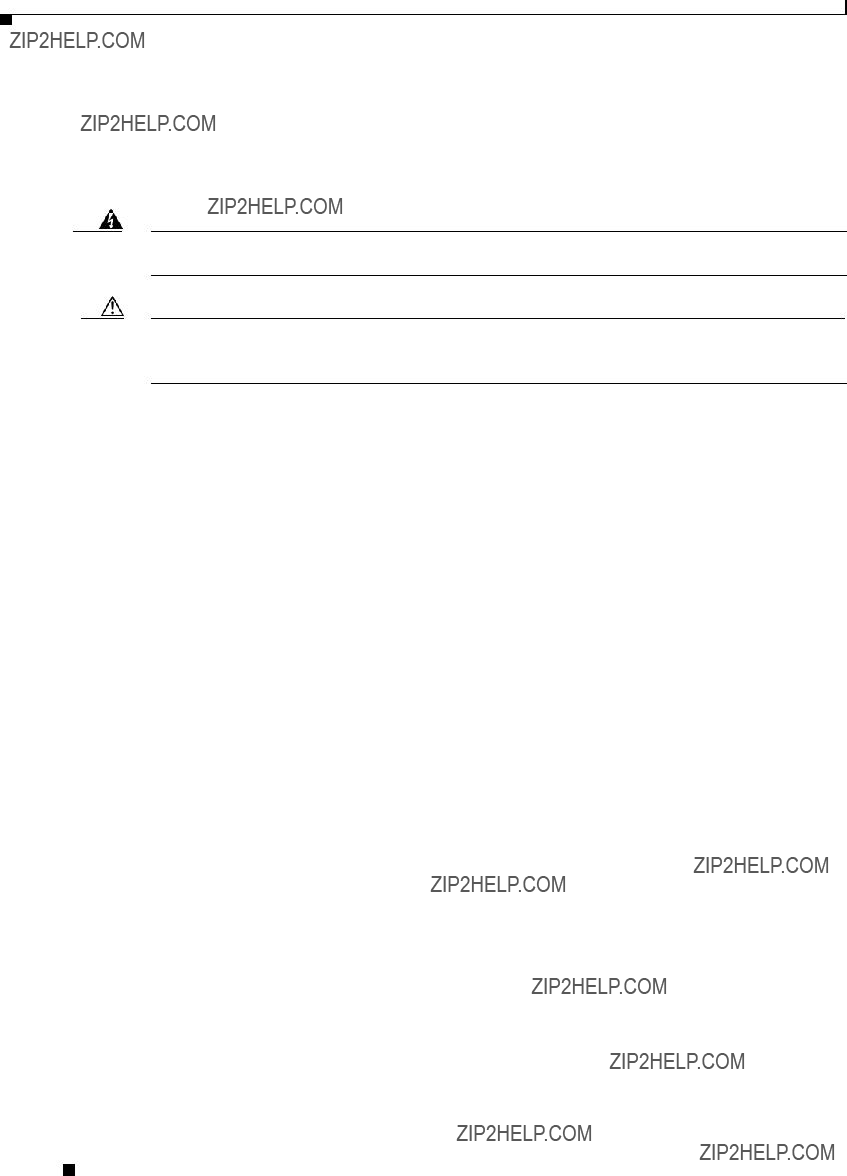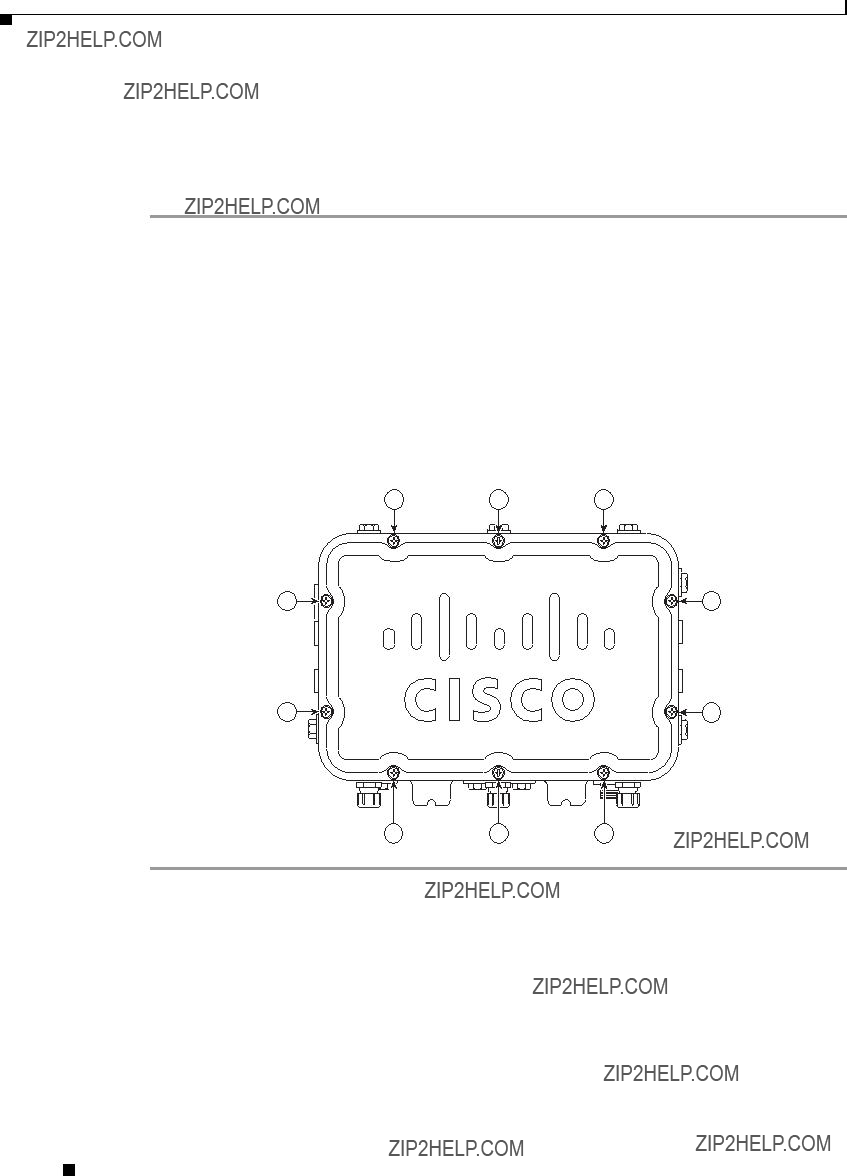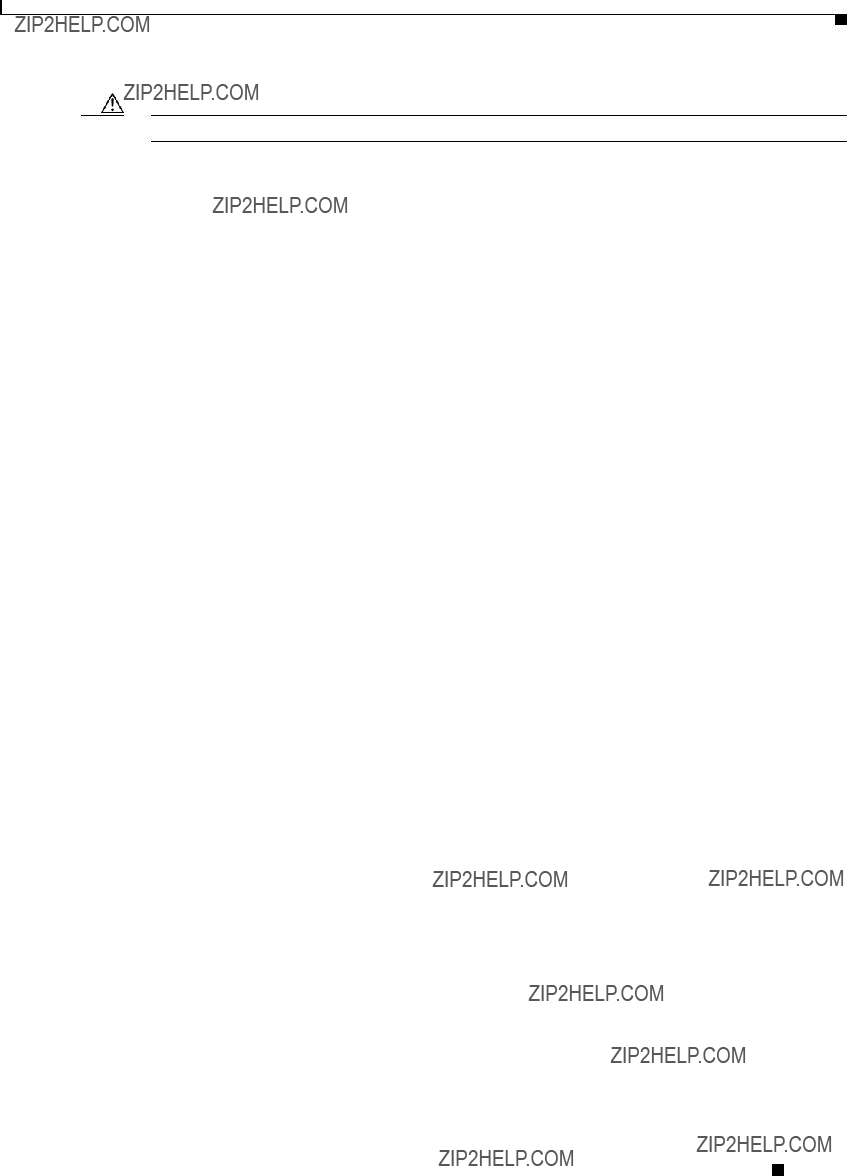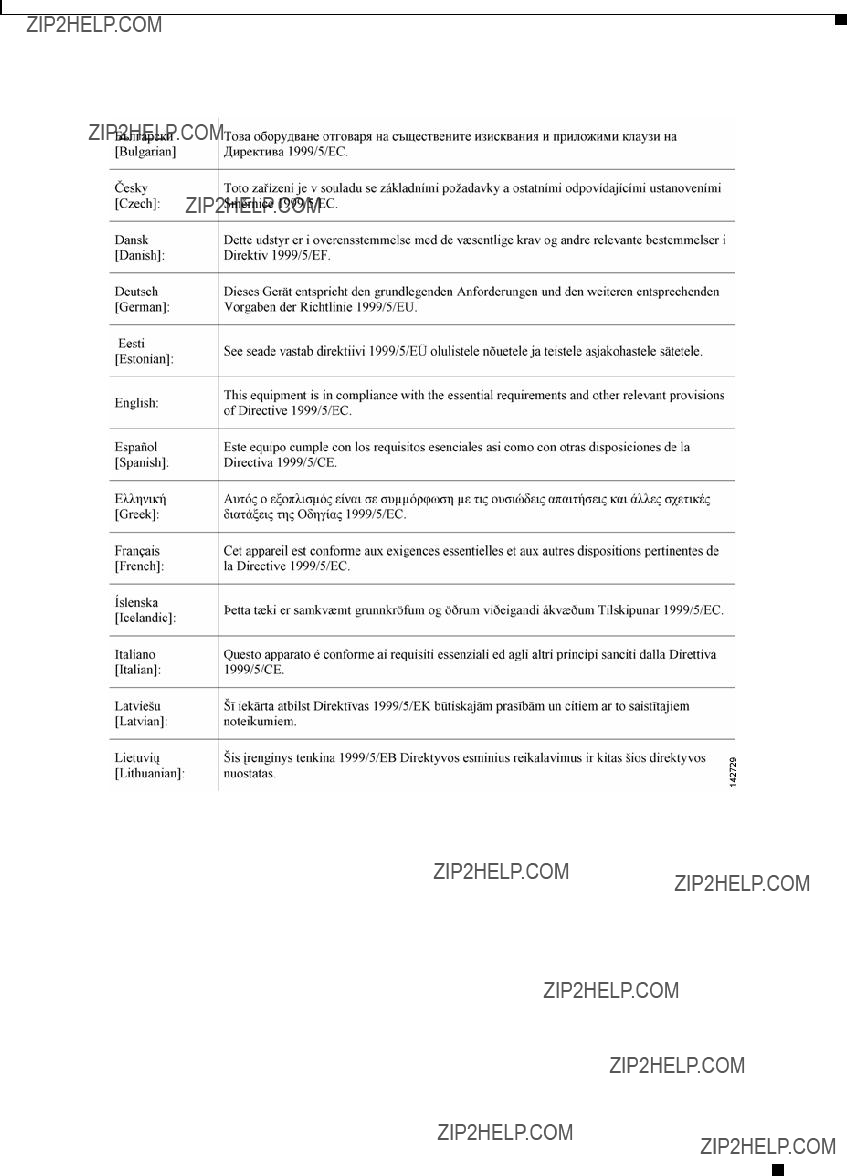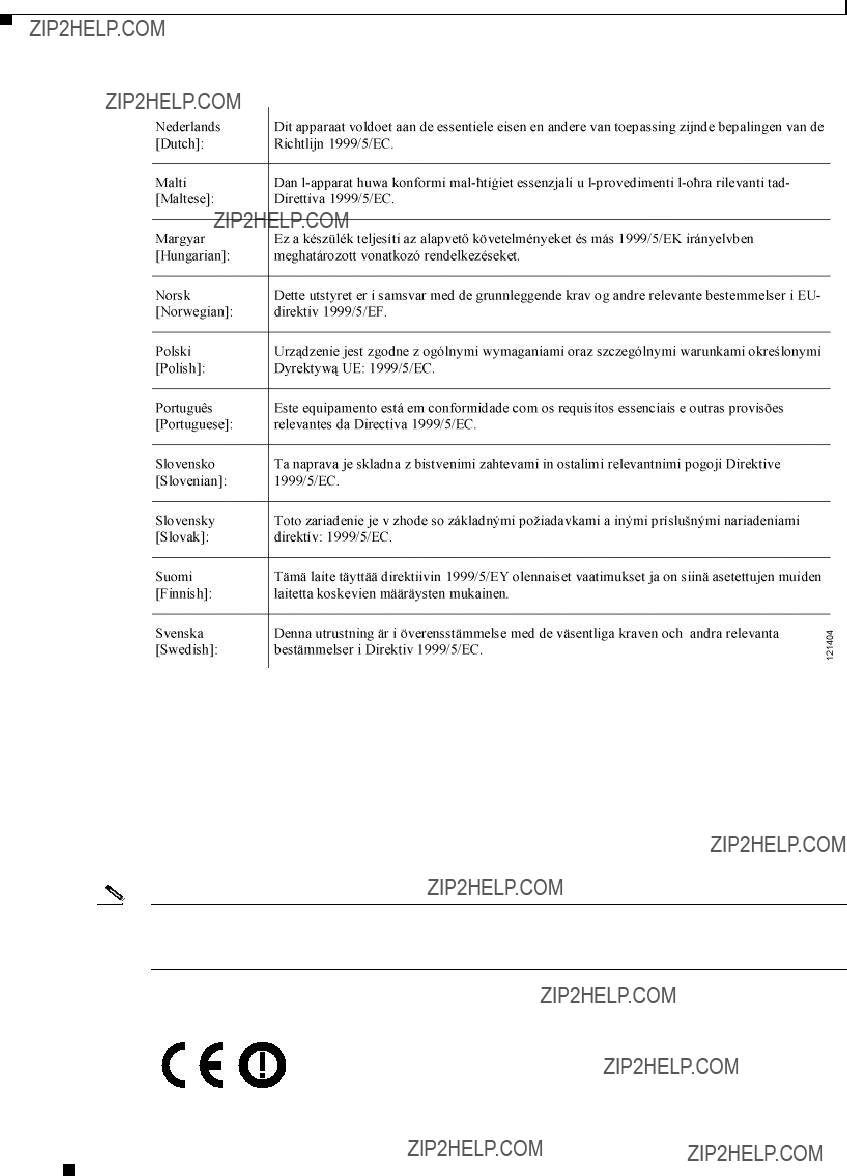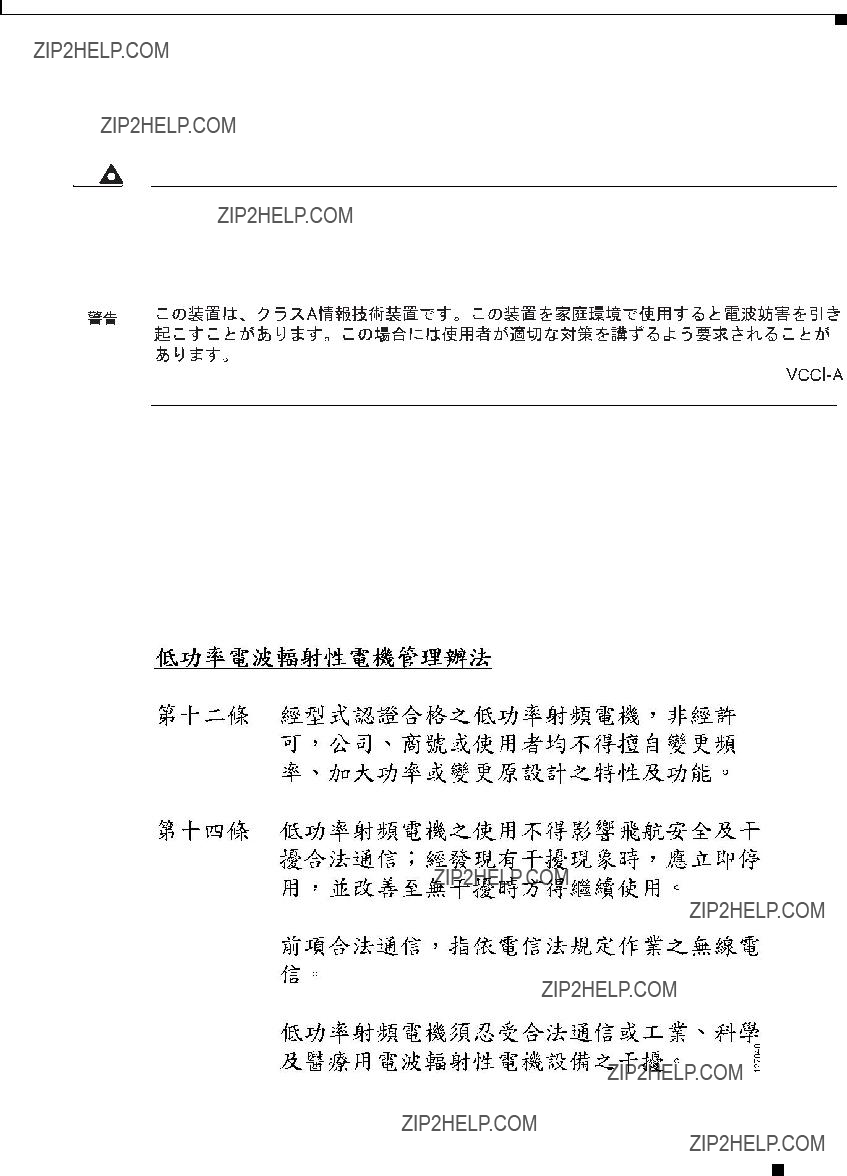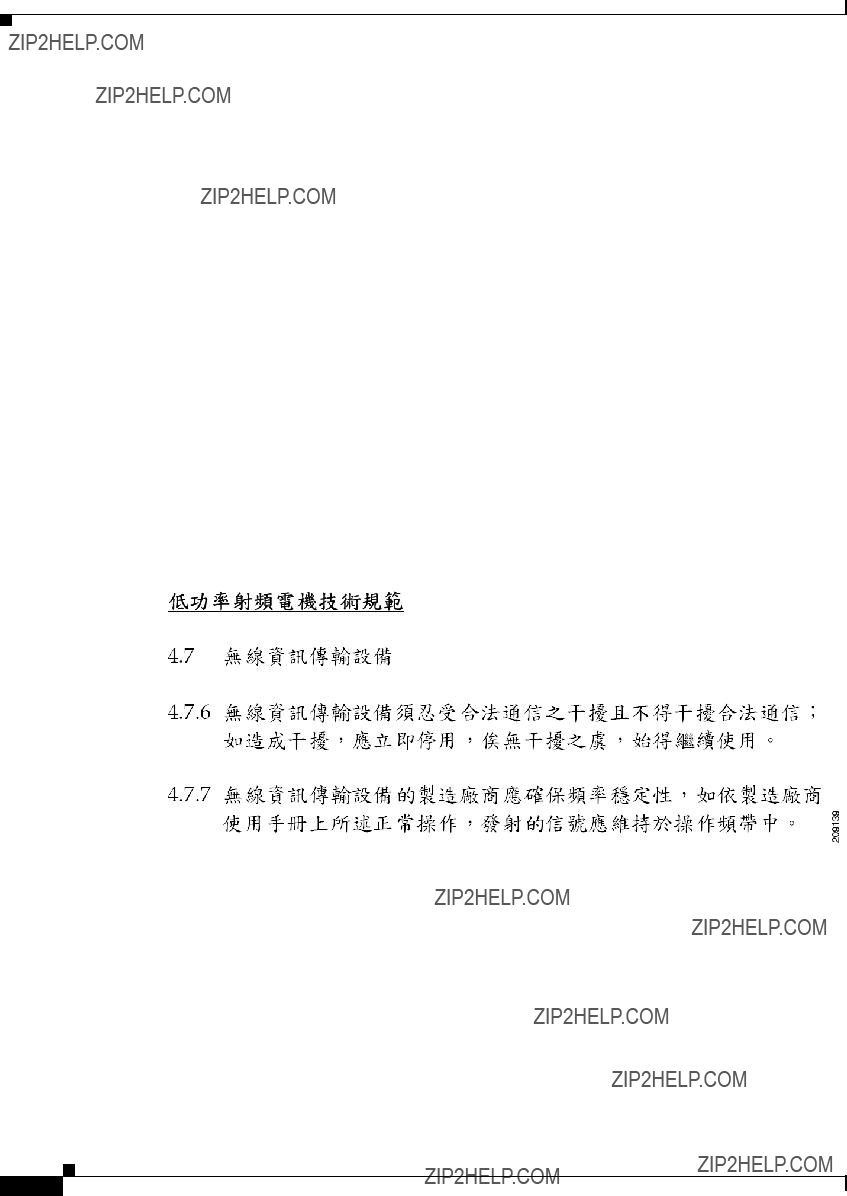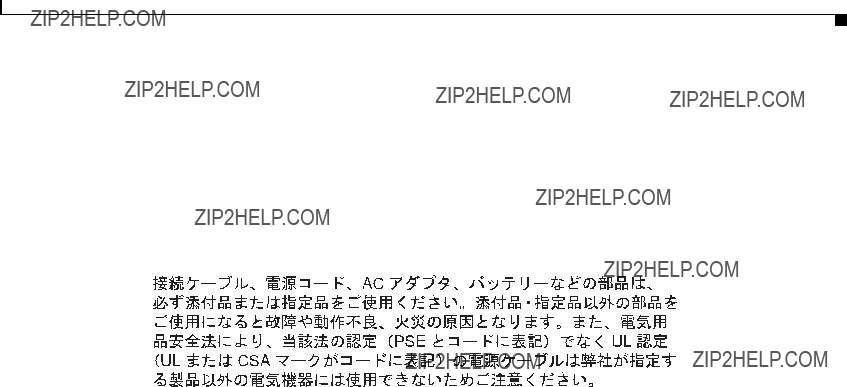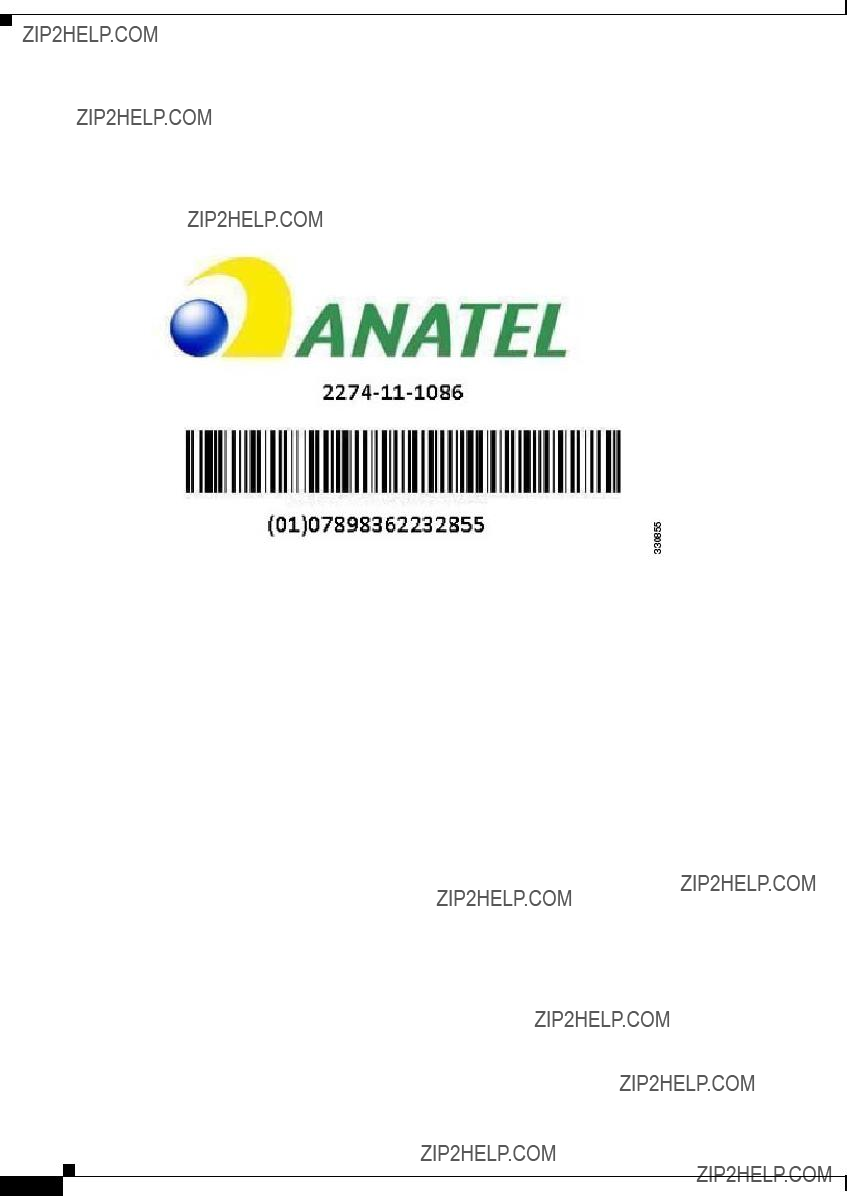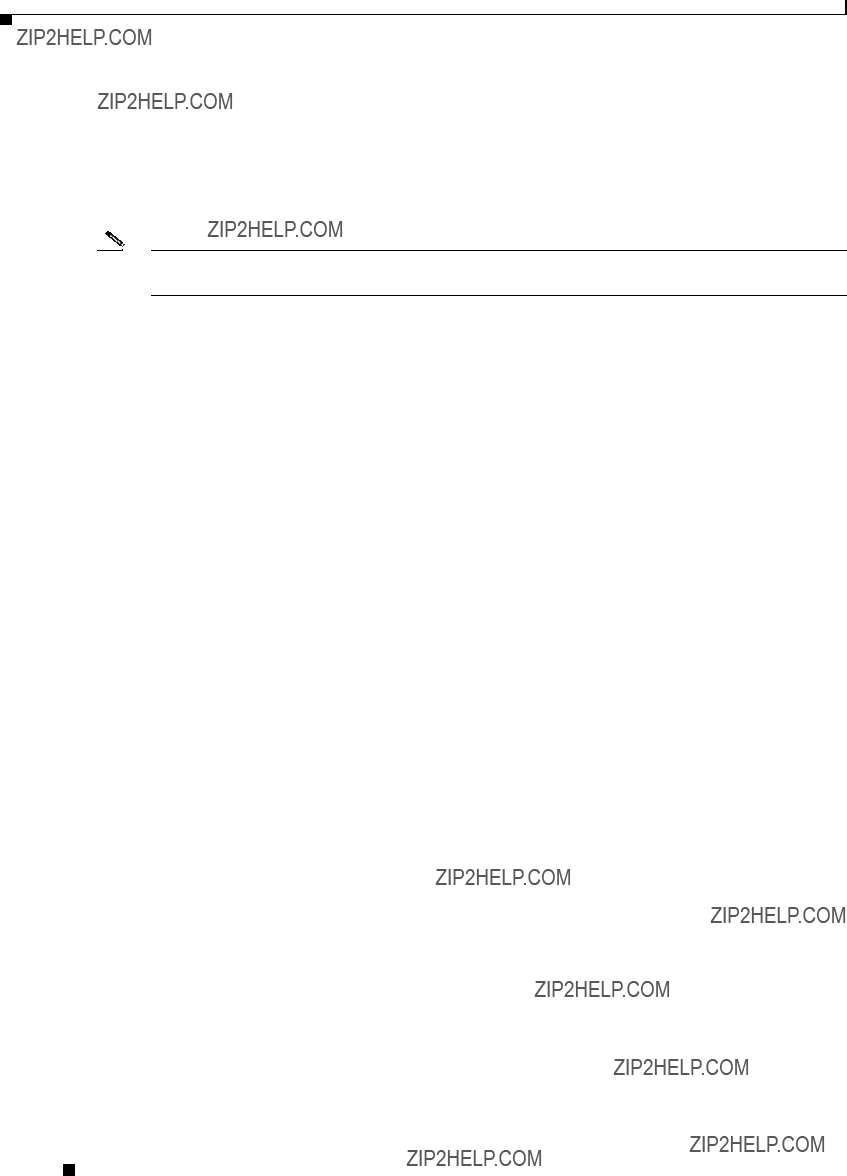Cisco Aironet 1550 Series Outdoor Mesh Access Point Hardware Installation Guide
April 2011
Revised February 20, 2013
Americas Headquarters
Cisco Systems, Inc. 170 West Tasman Drive
San Jose, CA 95134-1706
USA http://www.cisco.com Tel: 408 526-4000
800 553-NETS (6387) Fax: 408 527-0883
Text Part Number: OL-24247-01
THE SPECIFICATIONS AND INFORMATION REGARDING THE PRODUCTS IN THIS MANUAL ARE SUBJECT TO CHANGE WITHOUT NOTICE. ALL
STATEMENTS, INFORMATION, AND RECOMMENDATIONS IN THIS MANUAL ARE BELIEVED TO BE ACCURATE BUT ARE PRESENTED WITHOUT
WARRANTY OF ANY KIND, EXPRESS OR IMPLIED. USERS MUST TAKE FULL RESPONSIBILITY FOR THEIR APPLICATION OF ANY PRODUCTS.
THE SOFTWARE LICENSE AND LIMITED WARRANTY FOR THE ACCOMPANYING PRODUCT ARE SET FORTH IN THE INFORMATION PACKET THAT
SHIPPED WITH THE PRODUCT AND ARE INCORPORATED HEREIN BY THIS REFERENCE. IF YOU ARE UNABLE TO LOCATE THE SOFTWARE LICENSE
OR LIMITED WARRANTY, CONTACT YOUR CISCO REPRESENTATIVE FOR A COPY.
The following information is for FCC compliance of Class A devices: This equipment has been tested and found to comply with the limits for a Class A digital device, pursuant to part 15 of the FCC rules. These limits are designed to provide reasonable protection against harmful interference when the equipment is operated in a commercial environment. This equipment generates, uses, and can radiate radio-frequency energy and, if not installed and used in accordance with the instruction manual, may cause harmful interference to radio communications. Operation of this equipment in a residential area is likely to cause harmful interference, in which case users will be required to correct the interference at their own expense.
The following information is for FCC compliance of Class B devices: The equipment described in this manual generates and may radiate radio-frequency energy. If it is not installed in accordance with Cisco???s installation instructions, it may cause interference with radio and television reception. This equipment has been tested and found to comply with the limits for a Class B digital device in accordance with the specifications in part 15 of the FCC rules. These specifications are designed to provide reasonable protection against such interference in a residential installation. However, there is no guarantee that interference will not occur in a particular installation.
Modifying the equipment without Cisco???s written authorization may result in the equipment no longer complying with FCC requirements for Class A or Class B digital devices. In that event, your right to use the equipment may be limited by FCC regulations, and you may be required to correct any interference to radio or television communications at your own expense.
You can determine whether your equipment is causing interference by turning it off. If the interference stops, it was probably caused by the Cisco equipment or one of its peripheral devices. If the equipment causes interference to radio or television reception, try to correct the interference by using one or more of the following measures:
???Turn the television or radio antenna until the interference stops.
???Move the equipment to one side or the other of the television or radio.
???Move the equipment farther away from the television or radio.
???Plug the equipment into an outlet that is on a different circuit from the television or radio. (That is, make certain the equipment and the television or radio are on circuits controlled by different circuit breakers or fuses.)
Modifications to this product not authorized by Cisco Systems, Inc. could void the FCC approval and negate your authority to operate the product.
The Cisco implementation of TCP header compression is an adaptation of a program developed by the University of California, Berkeley (UCB) as part of UCB???s public domain version of the UNIX operating system. All rights reserved. Copyright ?? 1981, Regents of the University of California.
NOTWITHSTANDING ANY OTHER WARRANTY HEREIN, ALL DOCUMENT FILES AND SOFTWARE OF THESE SUPPLIERS ARE PROVIDED ???AS IS??? WITH
ALL FAULTS. CISCO AND THE ABOVE-NAMED SUPPLIERS DISCLAIM ALL WARRANTIES, EXPRESSED OR IMPLIED, INCLUDING, WITHOUT
LIMITATION, THOSE OF MERCHANTABILITY, FITNESS FOR A PARTICULAR PURPOSE AND NONINFRINGEMENT OR ARISING FROM A COURSE OF
DEALING, USAGE, OR TRADE PRACTICE.
IN NO EVENT SHALL CISCO OR ITS SUPPLIERS BE LIABLE FOR ANY INDIRECT, SPECIAL, CONSEQUENTIAL, OR INCIDENTAL DAMAGES, INCLUDING,
WITHOUT LIMITATION, LOST PROFITS OR LOSS OR DAMAGE TO DATA ARISING OUT OF THE USE OR INABILITY TO USE THIS MANUAL, EVEN IF CISCO
OR ITS SUPPLIERS HAVE BEEN ADVISED OF THE POSSIBILITY OF SUCH DAMAGES.
Any Internet Protocol (IP) addresses used in this document are not intended to be actual addresses. Any examples, command display output, and figures included in the document are shown for illustrative purposes only. Any use of actual IP addresses in illustrative content is unintentional and coincidental.
Cisco Aironet 1550 Series Outdoor Mesh Access Point Hardware Installation Guide
?? 2013 Cisco Systems, Inc. All rights reserved.
Contents
G L O S S A R Y
Cisco Aironet 1550 Series Outdoor Mesh Acces Point Hardware Installation Guide
Contents
Cisco Aironet 1550 Series Outdoor Mesh Acces Point Hardware Installation Guide
Preface
This section describes the objectives, audience, organization, and conventions of the Cisco Aironet 1550 Series Outdoor Mesh Access Point Hardware Installation Guide.
Objectives
This publication explains the steps for installing the Cisco Aironet 1550 Series Outdoor Mesh Access Point (called the access point in this document). The access point is available in model 1552.
The 1552 model is a dual-radio platform that supports dual-band (2.4- and 5-GHz) operation.
Audience
This publication is for the person installing and configuring an access point for the first time. The installer should be familiar with network structures, terms, and concepts.
Warning Only trained and qualified personnel should be allowed to install, replace, or service this equipment.
Statement 1030
Warning This equipment must be installed in restricted access locations in Norway, Finland, and Sweden. Only trained and qualified personnel are allowed to install, replace, or service this equipment as instructed in this installation guide.
Cisco Aironet 1550 Series Outdoor Mesh Access Point Hardware Installation Guide
Running H/F 3
Running H/F 2
Organization
This guide contains the following sections:
Conventions
This publication uses the following conventions:
Running H/F 3
Running H/F 2
Notes use the following conventions:
Note Means reader take note. Notes contain helpful suggestions or references to materials not contained in this manual.
Cautions use the following conventions:
Caution Means reader be careful. In this situation, you might do something that could result in equipment damage or loss of data.
Warnings use the following conventions:
Warning IMPORTANT SAFETY INSTRUCTIONS
This warning symbol means danger. You are in a situation that could cause bodily injury. Before you work on any equipment, be aware of the hazards involved with electrical circuitry and be familiar with standard practices for preventing accidents. Use the statement number provided at the end of each warning to locate its translation in the translated safety warnings that accompanied this device. Statement 1071
SAVE THESE INSTRUCTIONS
Waarschuwing BELANGRIJKE VEILIGHEIDSINSTRUCTIES
Dit waarschuwingssymbool betekent gevaar. U verkeert in een situatie die lichamelijk letsel kan veroorzaken. Voordat u aan enige apparatuur gaat werken, dient u zich bewust te zijn van de bij elektrische schakelingen betrokken risico's en dient u op de hoogte te zijn van de standaard praktijken om ongelukken te voorkomen. Gebruik het nummer van de verklaring onderaan de waarschuwing als u een vertaling van de waarschuwing die bij het apparaat wordt geleverd, wilt raadplegen.
BEWAAR DEZE INSTRUCTIES
Cisco Aironet 1550 Series Outdoor Mesh Access Point Hardware Installation Guide
Running H/F 3
Running H/F 2
Varoitus T??RKEIT?? TURVALLISUUSOHJEITA
T??m?? varoitusmerkki merkitsee vaaraa. Tilanne voi aiheuttaa ruumiillisia vammoja. Ennen kuin k??sittelet laitteistoa, huomioi s??hk??piirien k??sittelemiseen liittyv??t riskit ja tutustu onnettomuuksien yleisiin ehk??isytapoihin. Turvallisuusvaroitusten k????nn??kset l??ytyv??t laitteen mukana toimitettujen k????nnettyjen turvallisuusvaroitusten joukosta varoitusten lopussa n??kyvien lausuntonumeroiden avulla.
S??ILYT?? N??M?? OHJEET
Attention IMPORTANTES INFORMATIONS DE S??CURIT??
Ce symbole d'avertissement indique un danger. Vous vous trouvez dans une situation pouvant entra??ner des blessures ou des dommages corporels. Avant de travailler sur un ??quipement, soyez conscient des dangers li??s aux circuits ??lectriques et familiarisez-vous avec les proc??dures couramment utilis??es pour ??viter les accidents. Pour prendre connaissance des traductions des avertissements figurant dans les consignes de s??curit?? traduites qui accompagnent cet appareil, r??f??rez-vous au num??ro de l'instruction situ?? ?? la fin de chaque avertissement.
CONSERVEZ CES INFORMATIONS
Warnung WICHTIGE SICHERHEITSHINWEISE
Dieses Warnsymbol bedeutet Gefahr. Sie befinden sich in einer Situation, die zu Verletzungen f??hren kann. Machen Sie sich vor der Arbeit mit Ger??ten mit den Gefahren elektrischer Schaltungen und den ??blichen Verfahren zur Vorbeugung vor Unf??llen vertraut. Suchen Sie mit der am Ende jeder Warnung angegebenen Anweisungsnummer nach der jeweiligen ??bersetzung in den ??bersetzten Sicherheitshinweisen, die zusammen mit diesem Ger??t ausgeliefert wurden.
BEWAHREN SIE DIESE HINWEISE GUT AUF.
Avvertenza IMPORTANTI ISTRUZIONI SULLA SICUREZZA
Questo simbolo di avvertenza indica un pericolo. La situazione potrebbe causare infortuni alle persone. Prima di intervenire su qualsiasi apparecchiatura, occorre essere al corrente dei pericoli relativi ai circuiti elettrici e conoscere le procedure standard per la prevenzione di incidenti. Utilizzare il numero di istruzione presente alla fine di ciascuna avvertenza per individuare le traduzioni delle avvertenze riportate in questo documento.
CONSERVARE QUESTE ISTRUZIONI
Advarsel VIKTIGE SIKKERHETSINSTRUKSJONER
Dette advarselssymbolet betyr fare. Du er i en situasjon som kan f??re til skade p?? person. F??r du begynner ?? arbeide med noe av utstyret, m?? du v??re oppmerksom p?? farene forbundet med elektriske kretser, og kjenne til standardprosedyrer for ?? forhindre ulykker. Bruk nummeret i slutten av hver advarsel for ?? finne oversettelsen i de oversatte sikkerhetsadvarslene som fulgte med denne enheten.
TA VARE P?? DISSE INSTRUKSJONENE
Cisco Aironet 1550 Series Outdoor Mesh Access Point Hardware Installation Guide
Running H/F 3
Running H/F 2
Aviso INSTRU????ES IMPORTANTES DE SEGURAN??A
Este s??mbolo de aviso significa perigo. Voc?? est?? em uma situa????o que poder?? ser causadora de les??es corporais. Antes de iniciar a utiliza????o de qualquer equipamento, tenha conhecimento dos perigos envolvidos no manuseio de circuitos el??tricos e familiarize-se com as pr??ticas habituais de preven????o de acidentes. Utilize o n??mero da instru????o fornecido ao final de cada aviso para localizar sua tradu????o nos avisos de seguran??a traduzidos que acompanham este dispositivo.
GUARDE ESTAS INSTRU????ES
??Advertencia! INSTRUCCIONES IMPORTANTES DE SEGURIDAD
Este s??mbolo de aviso indica peligro. Existe riesgo para su integridad f??sica. Antes de manipular cualquier equipo, considere los riesgos de la corriente el??ctrica y familiar??cese con los procedimientos est??ndar de prevenci??n de accidentes. Al final de cada advertencia encontrar?? el n??mero que le ayudar?? a encontrar el texto traducido en el apartado de traducciones que acompa??a a este dispositivo.
GUARDE ESTAS INSTRUCCIONES
Varning! VIKTIGA S??KERHETSANVISNINGAR
Denna varningssignal signalerar fara. Du befinner dig i en situation som kan leda till personskada. Innan du utf??r arbete p?? n??gon utrustning m??ste du vara medveten om farorna med elkretsar och k??nna till vanliga f??rfaranden f??r att f??rebygga olyckor. Anv??nd det nummer som finns i slutet av varje varning f??r att hitta dess ??vers??ttning i de ??versatta s??kerhetsvarningar som medf??ljer denna anordning.
SPARA DESSA ANVISNINGAR
Figyelem
Cisco Aironet 1550 Series Outdoor Mesh Access Point Hardware Installation Guide
Running H/F 3
Running H/F 2
Aviso INSTRU????ES IMPORTANTES DE SEGURAN??A
Este s??mbolo de aviso significa perigo. Voc?? se encontra em uma situa????o em que h?? risco de les??es corporais. Antes de trabalhar com qualquer equipamento, esteja ciente dos riscos que envolvem os circuitos el??tricos e familiarize-se com as pr??ticas padr??o de preven????o de acidentes. Use o n??mero da declara????o fornecido ao final de cada aviso para localizar sua tradu????o nos avisos de seguran??a traduzidos que acompanham o dispositivo.
GUARDE ESTAS INSTRU????ES
Advarsel VIGTIGE SIKKERHEDSANVISNINGER
Dette advarselssymbol betyder fare. Du befinder dig i en situation med risiko for legemesbeskadigelse. F??r du begynder arbejde p?? udstyr, skal du v??re opm??rksom p?? de involverede risici, der er ved elektriske kredsl??b, og du skal s??tte dig ind i standardprocedurer til undg??else af ulykker. Brug erkl??ringsnummeret efter hver advarsel for at finde overs??ttelsen i de oversatte advarsler, der fulgte med denne enhed.
GEM DISSE ANVISNINGER
Cisco Aironet 1550 Series Outdoor Mesh Access Point Hardware Installation Guide
Running H/F 3
Running H/F 2
Cisco Aironet 1550 Series Outdoor Mesh Access Point Hardware Installation Guide
Running H/F 3
Running H/F 2
Related Documents
These documents provide complete information about the access point:
??? Release Notes for Cisco Wireless LAN Controllers and Lightweight Access Points
???Quick Start Guide: Cisco Aironet 1550 Series Lightweight Outdoor Mesh Access Points
???Cisco Wireless LAN Controller Configuration Guide
???Cisco Aironet 1550 Series Outdoor Mesh Access Point Power Injector Installation Instructions
???Cisco Aironet 1550 Series for Hazardous Locations Installation Guide
Click this link to browse to the Cisco Wireless documentation home page:
http://www.cisco.com/en/US/products/hw/wireless/index.html
To browse to the access point documentation, click Cisco Aironet 1550 Series listed under ???Outdoor Wireless.??? The documentation can be accessed from the Support box.
To browse to the Cisco Wireless LAN Controller documentation, click Standalone Controllers listed under ???Wireless LAN Controllers.??? The documentation can be accessed from the Support box.
Finding the Product Serial Number
The access point serial number is on the bottom of the access point (refer to Figure 1).
Cisco Aironet 1550 Series Outdoor Mesh Access Point Hardware Installation Guide
Running H/F 3
Running H/F 2
SN: NNNNNNNNN
231547, 781-00536-01 A0
SN: NNNNNNNNN
The access point serial number label contains the following information:
???Model number, such as AIR-CAP1552E-x-K9.
???Serial number, such as WCN0636279B (11 alphanumeric digits).
???Access point MAC address, for example 68BDABF54600 (12 hexadecimal digits). It is located under the serial number.
???Cable modem (CM) MAC address for cable configuration, such as 54D46F17377A (12 hexadecimal digits). The CM MAC address is only available on the access point cable configuration. It is located to the right of the MAC address.
You need your product serial number when requesting support from the Cisco Technical Assistance Center.
Obtaining Documentation, Support, and Security Guidelines
For information on obtaining documentation and support, providing documentation feedback, security guidelines, and recommended aliases and general Cisco documents, see the monthly What???s New in Cisco Product Documentation, which also lists all new and revised Cisco technical documentation, at:
http://www.cisco.com/en/US/docs/general/whatsnew/whatsnew.html
To view all new wireless documentation, click on Wireless.
Cisco Aironet 1550 Series Outdoor Mesh Access Point Hardware Installation Guide
Running H/F 3
Running H/F 2
Cisco Aironet 1550 Series Outdoor Mesh Access Point Hardware Installation Guide
C H A P T E R 1
Overview
The Cisco Aironet 1550 Series Outdoor Mesh Access Point (hereafter called the access point or AP) is a modularized wireless outdoor access point designed for use in a mesh network. The access point also supports wireless client access, point-to-point bridging, point-to-multipoint bridging, and point-to-multipoint mesh wireless connectivity.
About the 1552 Access Point
The 1552 access point supports two radios (2.4-GHz and 5-GHz) and provides client access without the need for a license. The 5-GHz radios are primarily used for backhaul operations to reach a wired network and the 2.4-GHz radio is used for wireless clients. Depending on the radio, the access point can support 1 to 300 Mb/s data rates (for specific data rates, refer to Appendix D, ???Access Point Specifications???).
The 1552 access point supports the modularity of the 1520 series and allows flexibility in radio configuration. In addition to full interoperability with 802.11n clients, the 1552 access point interoperates with legacy clients and offers enhanced backhaul performance. The 1552 access point can also be configured with an integrated DOCSIS 3.0/Euro DOCSIS 3.0 cable modem.
The access point is a standalone unit that can be cable strand or tower mounted. The access point can also operate as a relay node for other access points not directly connected to a wired network. Intelligent wireless routing is provided by the patented Adaptive Wireless Path Protocol (AWPP). This enables each access point to identify its neighbors and intelligently choose the optimal path to the wired network by calculating the cost of each path in terms of signal strength and the number of hops required to get to a controller.
The access point is configured, monitored, and operated through a Cisco wireless LAN controller (hereafter called a controller) as described in the Cisco Wireless LAN Controller Configuration Guide. The Cisco Wireless Mesh Access Points, Design and Deployment Guide, Release 7.3 describes how to plan and initially configure the Cisco mesh network, which supports wireless point-to-point, point-to-multipoint, and mesh deployments. The controllers use a browser-based management system, a command-line interface (CLI), or the Cisco Prime Infrastructure (PI) network management system to manage the controller and the associated access points. The access point supports hardware-based advanced encryption standard (AES) encryption between wireless nodes to provide end-to-end security.
This chapter provides information on the following topics:
???Hardware Models, page 1-2
???Hardware Features, page 1-5
???Network Deployment Examples, page 1-25
Cisco Aironet 1550 Series Outdoor Mesh Access Point Hardware Installation Guide
Chapter 1 Overview
Hardware Models
Hardware Models
The model numbers (or part numbers) and configuration for the Cisco Aironet 1552 Outdoor Mesh Access Points are described in Table 1-1. A detailed list of components supported by each 1552 access point model is shown in Table 1-2.
The Cisco Aironet 1552 Series access points includes two additional models, 1552S and 1552H, that are specifically intended for deployment in hazardous locations. For information on these models, refer to the Cisco Aironet 1550 Series for Hazardous Locations Installation Guide.
For a detailed description of the declarations of conformity and regulatory information for the 1552 access points refer to Appendix B, ???Declarations of Conformity and Regulatory Information.???
Table 1-1 1552 Access Point Model Numbers and Descriptions
Cisco Aironet 1550 Series Outdoor Mesh Access Point Hardware Installation Guide
Chapter 1 Overview
Hardware Models
Table 1-1 1552 Access Point Model Numbers and Descriptions (continued)
Cisco Aironet 1550 Series Outdoor Mesh Access Point Hardware Installation Guide
Chapter 1 Overview
Hardware Models
1.When a 1552E/EU is powered with PoE, the PoE-Out port is not active.
2, PoE-In is not 802.3af; it does not work with a PoE 802.3af-capable Ethernet switch. It requires the dedicated Power Injector (AIR-PWRINJ1500-2=).
Regulatory Domains
The ???-x??? in the 1552 model numbers represent the domain. For example, in AIR-CAP1552C-x-K9, the -x represents a regulatory domain for a specific country.
For specific regulatory domains supported by each 1552 access point model, refer to the Wireless LAN Compliance Status at:
http://www.cisco.com/en/US/prod/collateral/wireless/ps5679/ps5861/product_data_sheet0900aecd805 37b6a.html
To locate the 1552 access point models, click on 802.11abgn Mesh Access Points.
Cisco Aironet 1550 Series Outdoor Mesh Access Point Hardware Installation Guide
Chapter 1 Overview
Hardware Features
Hardware Features
This section describes the hardware features of the 1552 access point models. The following hardware features are described in this section:
???Connectors, page 1-5
???Antenna Port Locations, page 1-11
???Multiple Radio Operation, page 1-12
???Antenna Configurations, page 1-13
???Multiple Power Sources, page 1-21
???Cable Modem (POC), page 1-22
???Ethernet (PoE) Ports, page 1-22
???Fiber Option, page 1-23
???Metal Enclosure, page 1-24
???Optional Hardware, page 1-24
Connectors
Figure 1-1 through Figure 1-9 show the access point connectors for all models. Figure 1-10 and Figure 1-11 show the external antenna Type-N connectors.
Note The illustrations in this document show all available connections for the access point. Unused connections are capped with a connector plug to ensure the watertight integrity of the access point. Liquid-tight adapters are provided for connector openings, which can be installed before or after deploying the access point.
Cisco Aironet 1550 Series Outdoor Mesh Access Point Hardware Installation Guide
Chapter 1 Overview
Hardware Features
1552E/1552EU Connectors
Note Antenna ports 1, 2, and 3 are not shown in Figure 1-1. These ports are located on the top of the access point.
Cisco Aironet 1550 Series Outdoor Mesh Access Point Hardware Installation Guide
Chapter 1 Overview
Hardware Features
345675
2 Antenna port 2
Cisco Aironet 1550 Series Outdoor Mesh Access Point Hardware Installation Guide
Chapter 1 Overview
Hardware Features
1552I Connectors
Figure 1-4
Access Point Model AIR-CAP1552I-x-K9 Bottom Connectors
1552C/1552CU Connectors
Figure 1-5 Access Point Model AIR-CAP1552C-x-K9 Bottom/Side Connectors
331577
Cisco Aironet 1550 Series Outdoor Mesh Access Point Hardware Installation Guide
Chapter 1 Overview
Hardware Features
Figure 1-6 Access Point Model AIR-CAP-1552CU-x-K9 Bottom/Side Connectors
345703
Figure 1-7 Access Point Model AIR-CAP1552CU-x-K9 Top Connectors
345837
2 Antenna port 2
Cisco Aironet 1550 Series Outdoor Mesh Access Point Hardware Installation Guide
Chapter 1 Overview
Hardware Features
Figure 1-8 F-Connector Adapter (Splitter) Components (AIR-CAP1552C-x-K9 and
AIR-CAP1552CU-x-K9)
255265
2
1
3
1 Shunt is a 20 amp fuse.
Connectors for All Models
Figure 1-9 Access Point DC Power Connector and Ground Lug (All Models)
Chapter 1 Overview
Hardware Features
Antenna Port Locations
Figure 1-10 shows the antenna port locations for model AIR-CAP1552E-x-K9. The ports used depend on the optional antennas ordered.
Figure 1-10 External Antenna Port Locations for Access Point Models AIR-CAP1552E-x-K9
Chapter 1 Overview
Hardware Features
Figure 1-11 shows the antenna port locations for models AIR-CAP1552CU-x-K9 and
AIR-CAP1552EU-x-K9. The ports used depend on the optional antennas ordered.
Figure 1-11 External Antenna Port Locations for Access Point Models AIR-CAP1552CU-x-K9 and AIR-CAP1552EU-x-K9
Multiple Radio Operation
The 1552 access point supports simultaneous dual-radio operation using a 2.4-GHz 802.11b/g/n multiple input/multiple output (MIMO) radio and a 5-GHz 802.11a/n MIMO radio. The 2.4 GHz radio supports channels 1 to 11 in US, 1 to 13 in Europe, and 1 to 13 in Japan. It has two transmitters with a maximum total output power of 25 dBm for 802.11b/g/n operation. Output power is configurable to 5 levels. It has three receivers that enable maximum-ratio combining (MRC).
The 5-GHz radio operates in the UNII-2 band (5.25 ??? 5.35 GHz), UNII-2 Extended/ETSI band (5.47 ??? 5.725 GHz), upper ISM band (5.725 ??? 5.850 GHz), and the Extended India Band (5.85 ??? 5.875 GHz). It has two transmitters with a maximum total output power of 26 dBm for UNII-2 and Extended/ETSI bands. The total maximum output power for the upper ISM band is 28 dBm. Output power is configurable for 5 power levels in 3 dB steps. The three receivers enables maximum-ratio combining (MRC).
Chapter 1 Overview
Hardware Features
Antenna Configurations
The 1552 access point supports a variety of antennas designed for outdoor use with radios operating in the 2.4-GHz and 5-GHz frequency bands. In addition to an integrated antenna array, the 1552 supports the external antennas listed in the following sections.
Two mounting configurations are available, the cable strand mount and the pole mount (refer to ???Mounting the Access Point??? section on page 2-14.)
Using an optional antenna mounting bracket kit, the directional antennas AIR-ANT2413P2M-N and AIR-ANT5114P2M-N can be mounted directly on an access point in a strand mount or pole mount environment. The antenna bracket kit contains four bracket sections and fasteners that you can assemble in multiple configurations to position and aim the directional antenna in a range of positions. For more information on mounting the antenna with the optional mounting bracket, refer to Installing Directional-Antenna Mounting Kits on Cisco 1550 Series Outdoor Mesh Access Points.
The AIR-CAP1552E-x-K9 model must always be operated with the three external antennas attached. Figure 1-10 shows the antenna port locations for model 1552E.
Low Profile Dual-Band 2.4/5-GHz Omni Antenna Array
The Low Profile Dual-Band 2.4/5 GHz Omni Antenna Array has the following basic features:
???Contains an array of three dual-band omni antennas???The three omni antennas are contained within this single radome, which greatly reduces the antenna???s visual footprint and reduces the possibility of snagging the antenna on the cable bundle, the RF cable, or test cables.
???Operates over both 2.4 GHz and 5 GHz bands???Each of the three omni antennas is a dual-band antenna, covering both the 2.4???2.5 GHz band, and the 5.2???5.9 GHz bands.
???Gain of about 2 dBi at 2.4 GHz, 4 dBi at 5 GHz.
???Cisco Light Gray weatherproof radome for outdoor operation.
Figure 1-12 shows an integrated low-profile dual-band (2.4 GHz and 5 GHz) 3-element array antenna built-in only on models AIR-CAP1552I-x-K9 and AIR-CAP1552C-x-K9.
Chapter 1 Overview
Hardware Features
Figure 1-12 Cisco Aironet Low Profile Dual-Band 2.4/5 GHz Omni Antenna Array- Built-in Only on Models AIR-CAP1552I-x-K9 and AIR-CAP1552C-x-K9
Cisco Aironet Dual-Band Omnidirectional Antenna (AIR-ANT2547V-N)
The Dual-Band Omnidirectional Antenna, referred to as a ???stick??? antenna, is designed for outdoor use with Cisco Aironet Outdoor Access Points with radios operating in the 2.4-GHz and 5-GHz frequency bands (Figure 1-13). Basic operating features of the antenna are:
???Omnidirectional colinear array
???Operates in the 2.4 GHz and 5 GHz frequency bands
???Gain:
???2400???2483 MHz ??? 4-dBi
???5250???5875 MHz ??? 7-dBi
The antenna is designed to create an omnidirectional broadcast pattern. To achieve this pattern, mount the access point clear of any obstructions to the sides of the radiating element.
For detailed information on this antenna, refer to the Cisco Aironet Dual-Band Omnidirectional Antenna (AIR-ANT2547V-N) document. Follow all safety precautions when installing the antennas. For information on safety, refer to ???Safety Precautions??? section on page 2-41.
Chapter 1 Overview
Hardware Features
Figure 1-13 Cisco Aironet Dual-Band Omnidirectional Antenna - Installed Only on Model AIR-CAP1552E-x-K9
Cisco Aironet 2.4-GHz/5-GHz 8-dBi Directional Antenna (AIR-ANT2588P3M-N)
The Cisco Aironet 2.4-GHz/5-GHz 8-dBi Directional Antenna is designed for outdoor use with Cisco Aironet Outdoor Access Points with radios operating in both the 2.4-GHz and 5-GHz frequency bands. This antenna has 8-dBi gain in both bands.
For detailed information on this antenna, refer to the Cisco Aironet 2.4-GHz/5-GHz 8-dBi Directional Antenna (AIR-ANT2588P3M-N) document. Follow all safety precautions when installing the antennas, for information on safety, refer to ???Safety Precautions??? section on page 2-41.
Chapter 1 Overview
Hardware Features
Figure 1-14 Cisco Aironet 2.4-GHz/5-GHz 8-dBi Directional Antenna - Installed Only on Model AIR-CAP1552E-x-K9
334574
Cisco Aironet 5-GHz 14-dBi 2-Port Directional Antenna (AIR-ANT5114P2M-N)
The Cisco Aironet 5-GHz 14-dBi 2-Port Directional Antenna is designed for outdoor use with Cisco Aironet Outdoor Access Points with radios operating in the 5-GHz frequency band. This antenna has 14-dBi in the 5-GHz band.
This antenna can be installed using the optional directional-antenna mounting kit AIR-CCAMK-1, which allows the antenna to be mounted on the access point and positioned in multiple configurations. For more information, refer to Installing Directional-Antenna Mounting Kits on Cisco 1550 Series Outdoor Mesh Access Points.
For detailed information on this antenna, refer to the Cisco Aironet 5-GHz 14-dBi Directional Antenna (AIR-ANT5114P2M-N) document. Follow all safety precautions when installing the antennas, for information on safety, refer to ???Safety Precautions??? section on page 2-41.
Chapter 1 Overview
Hardware Features
Figure 1-15 Cisco Aironet 5-GHz 14-dBi Directional Antenna - Installed Only on Models
AIR-CAP1552EU-x-K9 and AIR-CAP1552CU-x-K9
334576
Cisco Aironet 2.4-GHz 13-dBi 2-Port Directional Antenna (AIR-ANT2413P2M-N
The Cisco Aironet 2.4-GHz 13-dBi 2-Port Directional Antenna is designed for outdoor use with Cisco Aironet Outdoor Access Points with radios operating in the 2.4-GHz frequency band. This antenna has 13-dBi gain in the 2.4-GHz frequency band.
This antenna can be installed using the optional directional-antenna mounting kit AIR-CCAMK-1, which allows the antenna to be mounted on the access point and positioned in multiple configurations. For more information, refer to Installing Directional-Antenna Mounting Kits on Cisco 1550 Series Outdoor Mesh Access Points.
For detailed information on this antenna, refer to the Cisco Aironet 2.4-GHz 13-dBi Directional Antenna (AIR-ANT2413P2M-N) document. Follow all safety precautions when installing the antennas, for information on safety, refer to ???Safety Precautions??? section on page 2-41.
Figure 1-16 Cisco Aironet 2.4-GHz 13-dBi Directional Antenna - Installed Only on Models AIR-CAP1552EU-x-K9 and AIR-CAP1552CU-x-K9
Chapter 1 Overview
Hardware Features
Cisco Aironet 2.4-GHz 2-dBi Omnidirectional Antenna (AIR-ANT2420V-N)
The Cisco Aironet 2.4-GHz 2-dBi Omnidirectional Antenna is designed for outdoor use with Cisco Aironet Outdoor Access Points with radios operating in the 2.4-GHz frequency band. Basic operating features of the antenna are:
???Operates in the 2.4-GHz frequency band
???Gain: 2 dBi
???Right-angle antenna primarily intended for strand (side) mounting
Follow all safety precautions when installing the antennas, for information on safety, refer to ???Safety Precautions??? section on page 2-41.
Figure 1-17 Cisco Aironet 2.4-GHz 2-dBi Omnidirectional Antenna - Installed Only on Models AIR-CAP1552EU-x-K9 and AIR-CAP1552CU-x-K9


 345666
345666
Cisco Aironet 2.4-GHz 5-dBi Omnidirectional Antenna (AIR-ANT2450V-N)
The Cisco Aironet 2.4-GHz 5-dBi Omnidirectional Antenna is designed for outdoor use with Cisco Aironet Outdoor Access Points with radios operating in the 2.4-GHz frequency band. This antenna has 5-dBi gain in the 2.4-GHz frequency band.
For detailed information on this antenna, refer to the bilingual document Cisco Aironet 5-dBi Omnidirectional Antenna (AIR-ANT2450V-N)-French. Follow all safety precautions when installing the antennas, for information on safety, refer to ???Safety Precautions??? section on page 2-41.
Chapter 1 Overview
Hardware Features
Figure 1-18 Cisco Aironet 2.4-GHz 5-dBi Omnidirectional Antenna - Installed Only on Models AIR-CAP1552EU-x-K9 and AIR-CAP1552CU-x-K9





 231297
231297
Cisco Aironet 2.4-GHz 8-dBi Omnidirectional Antenna (AIR-ANT2480V-N)
The Cisco Aironet 2.4-GHz 8-dBi Omnidirectional Antenna is designed for outdoor use with Cisco Aironet Outdoor Access Points with radios operating in the 2.4-GHz frequency band. This antenna has 8-dBi gain in the 2.4-GHz frequency band.
For detailed information on this antenna, refer to the document Cisco Aironet 8-dBi Omnidirectional Antenna (AIR-ANT2480V-N). Follow all safety precautions when installing the antennas, for information on safety, refer to ???Safety Precautions??? section on page 2-41.
Figure 1-19 Cisco Aironet 2.4-Ghz 8-dBi Omnidirectional Antenna - Installed Only on Models AIR-CAP1552EU-x-K9 and AIR-CAP1552CU-x-K9
230540
Chapter 1 Overview
Hardware Features
Cisco Aironet 5-GHz 4-dBi Omnidirectional Antenna (AIR-ANT5140V-N)
The Cisco Aironet 5-GHz 4-dBi Omnidirectional Antenna is designed for outdoor use with Cisco Aironet Outdoor Access Points with radios operating in the 5-GHz frequency band. Basic operating features of the antenna are:
???Operates in the 5-GHz frequency band
???Gain: 4 dBi
???Right-angle antenna primarily intended for strand (side) mounting
Follow all safety precautions when installing the antennas, for information on safety, refer to ???Safety Precautions??? section on page 2-41.
Figure 1-20 Cisco Aironet 5-GHz 4-dBi Omnidirectional Antenna - Installed Only on Models AIR-CAP1552EU-x-K9 and AIR-CAP1552CU-x-K9


 345665
345665
Cisco Aironet 5-GHz 8-dBi Omnidirectional Antenna (AIR-ANT5180V-N)
The Cisco Aironet 5-GHz 8-dBi Omnidirectional Antenna is designed for outdoor use with Cisco Aironet Outdoor Access Points with radios operating in the 5-GHz frequency band. This antenna has 8-dBi gain in the 5-GHz frequency band.
For detailed information on this antenna, refer to the document Cisco Aironet 8-dBi Omnidirectional Antenna (AIR-ANT5180V-N). Follow all safety precautions when installing the antennas, for information on safety, refer to ???Safety Precautions??? section on page 2-41.
Chapter 1 Overview
Hardware Features
Figure 1-21 Cisco Aironet 5-GHz 8-dBi Omnidirectional Antenna - Installed Only on Models AIR-CAP1552EU-x-K9 and AIR-CAP1552CU-x-K9
231296
Multiple Power Sources
The 1550 series access point supports these power sources:
???AC power???100 to 480 VAC, models 1552E and 1552EU access points, pole-mount configuration
???AC power???100 to 277 VAC, model 1552I access point
???Power-over-Cable (POC)???40 to 90 VAC, quasi-square wave AC, models 1552C and 1552CU (standard power source for the cable modem configuration)
???External 12 VDC
???Power-over-Ethernet (PoE)???56 VDC power injector (AIR-PWRINJ1500-2=), only on models 1552E and 1552EU access points
???Internal 6 ampere-hour battery backup???only for the 1552E and 1552EUaccess point
Warning Connect the unit only to DC power source that complies with the safety extra-low voltage (SELV) requirements in IEC 60950 based safety standards. Statement 1033
The 1552 access point can be connected to more than one power source. The access point detects the available power sources and switches to the preferred power source using the following default prioritization:
???AC power or POC power
???External 12-VDC power
???Power injector PoE power
???Internal battery power
Warning This unit might have more than one power supply connection. All connections must be removed to de-energize the unit. Statement 1028
Chapter 1 Overview
Hardware Features
Warning
Caution
Caution
Caution
Note
To reduce the risk of fire, use only No. 26 AWG or larger telecommunication line cord. Statement 1023
To provide inline PoE, you must use the 1500 power injector (AIR-PWRINJ1500-2=). Other power injectors, PoE switches, and 802.3af power sources cannot provide adequate power, which can cause the access point to malfunction and cause over-current conditions at the power source.
The 1500 power injector (AIR-PWRINJ1500-2=) must be used in an indoor environment only.
When the access point is installed outdoors or in a wet or damp location, the AC branch circuit that is powering the access point should be provided with ground fault protection (GFCI), as required by Article 210 of the National Electrical Code (NEC).
In the cable configuration, the cable modem is activated only when the access point is powered by POC or external 12 VDC power. When using only PoE power, the cable modem is deactivated.
The following AC power cord options are available:
???40-ft (12.2-m) power cord for light pole installations in the US and Canada. One end of the power cord is terminated with an access point AC power connector and the other end is terminated with an AC plug (AIR-CORD-R3P-40NA=).
???40-ft (12.2-m) power cord for use outside the US and Canada. One end of the power cord is terminated with an access point AC power connector and the other end is unterminated. (AIR-CORD-R3P-40UE=).
???4-ft (1.2-m) streetlight power tap adapter for light pole installations in the US and Canada (AIR-PWR-ST-LT-R3P=).
Cable Modem (POC)
The access point POC cable modem configuration contains an internal cable modem for connection to the cable network from the pole-mounted cable lines. The access point can be powered using the 40-to 90-VAC (quasi-square wave AC) power provided by the cable network.
The cable modem supports these main features:
???Data Over Cable Service Interface Specifications (DOCSIS)3.0
???Backward compatibility with existing DOCSIS 1.1 and 1.0 networks
Ethernet (PoE) Ports
The access point supports an Ethernet uplink port (POE-In) and a downlink port (POE-Out). The access point PoE-in port uses an RJ-45 connector (with a liquid tight adapter) to link the access point to the 10/100/1000BASE-T network. The Ethernet cable is used to send and receive Ethernet data and to optionally supply inline 56-VDC power from the power injector.
Chapter 1 Overview
Hardware Features
Note When a 1552E or 1552EU access point is powered by PoE, the PoE-Out port is not active.
The access point PoE-out (10/100/1000BASE-T) port uses an RJ-45 connector to provide LAN connectivity and IEEE 802.3af power to a single peripheral customer device, such as a camera or sensor gateway. The PoE-out port should not be connected to a switch or hub. The Ethernet MAC addresses are printed on the bottom of the access point under the LEDs.
Note The PoE-out port is disabled when the access point is powered by the power injector.
Tip The access point senses the Ethernet and power signals and automatically switches internal circuitry to match the cable connections.
Warning To reduce the risk of fire, use only No. 26 AWG or larger telecommunication line cord. Statement 1023
The Ethernet cable must be a shielded outdoor rated Category 5e (CAT5e) or better cable. The access point senses the Ethernet and power signals and automatically switches internal circuitry to match the cable connections.
Caution To provide inline PoE, you must use the 1500 power injector (AIR-PWRINJ1500-2=). Other power injectors, PoE switches, and 802.3af power sources cannot provide adequate power, which may cause the access point to malfunction and cause possible over-current conditions at the power source.
Fiber Option
Warning Class 1 laser product. Statement 1008
The factory-orderable fiber option provides a fiber input and output capability. Fiber data is transmitted and received over a single-strand fiber cable, which is connected to the access point using these SFP modules:
???100BASE-BX10-U fiber Rugged small-form factor pluggable (SFP) module
???1000BASELX single-mode Rugged SFP module
???1000BASESX multimode Rugged SFP module
???EPON ONU Rugged SFP module
Note SFP modules are not hot-swappable.
The access point has one fiber connection, located on the bottom of the unit (shown on Figure 1-1). Client data is passed to the network controller through the fiber connection via a fiber-capable switch. Configuration information can be found in the controller configuration guide of the controller you are using.
Chapter 1 Overview
Hardware Features
GPS Option
A GPS module is required to accurately track the location of the AP and report it to the controller. to provide location information for Cisco's AIR-CAP 1552I/C/CU/E/EU/H product line.
For information on routing and securing the cable for the GPS antenna, refer to the 1550 Series GPS Hardware Mounting Guide.
Metal Enclosure
The access point uses a metal enclosure that can accommodate both indoor or outdoor operating environments and an industrial temperature operating range of ???40 to 131??F (???40 to 55??C). The access point complies with NEMA 4 and IP67 requirements.
Optional Hardware
Depending on what you ordered, the following optional access point hardware may be part of your shipment:
???External antennas, depending on which ones you purchased
???Strand mount kit (AIR-ACCSMK1550=)
???Pole mount kit (AIR-ACCPMK1550=)
???Band installation tool for pole mount kit (AIR-BAND-INS-TL=)
???AC power cord, 40 ft. (12.2 m) with North American plug (AIR-CORD-R3P-40NA=)
???AC power cord, 40 ft. (12.2 m) with European unterminated end (AIR-CORD-R3P-40UE=)
???Street light power tap (AIR-PWR-ST-LT-R3P=)
???Power injector (AIR-PWRINJ1500-2=)
???1000BASELX single-mode Rugged SFP (GLC-LX-SM-RGD=)
???1000BASESX multimode Rugged SFP (GLC-SX-MM-RGD=)
???EPON ONU Rugged SFP module
???Battery, 6 amp hour (AIR-1520-BATT-6AH)
???FIPS kit (AIRLAP-FIPSKIT=)
???Optional directional-antenna mounting kit (AIR-ACCAMK-1)
???Lightning Arrestor kit (CGR-LA-NM-NF)
???Third-party lightning arrestors as required by local authorities
Chapter 1 Overview
Network Deployment Examples
Network Deployment Examples
The access point is a wireless device designed for wireless client access and point-to-point bridging, point-to-multipoint bridging, and point-to-multipoint mesh wireless connectivity. The access point provides 5-GHz backhaul capability to link with another access point to reach a wired network connection or to provide repeater operations for other access points.
The access point plays two primary radio roles: a root access point (RAP) or a mesh (non-root) access point (MAP), which is the default role of all access points. When the access point has a fiber or wired Ethernet or cable connector connection to the controller (through a switch), the radio role is called a RAP. In order to be considered a RAP, the access point must be configured as a RAP. A RAP is a parent node to any bridging or mesh network. A controller can support one or more RAPs, each one parenting the same or different wireless networks. There can be more than one RAP for the same mesh network for redundancy. RAPs and MAPs can support wireless clients on the 2.4-GHz and 5-GHz band. Client access on 5-GHz is called universal client access.
When the access point does not have a wired Ethernet, fiber-optic, or cable connection to the controller, the radio role is called a MAP. The MAPs have a wireless connection (through the backhaul interface) to other MAPs and finally to a RAP with an Ethernet or cable connection through a switch to the controller. MAPs can also have a wired Ethernet connection to a local LAN and serve as a bridge endpoint for that LAN (using a point-to-point or point-to-multipoint bridge connection).
Wireless Backhaul
The access point supports wireless backhaul capability using the 5 GHz radio to bridge to another access point to reach a wired network connection to a controller (see Figure 1-22). The access point connected to the wired network is considered a RAP in this configuration. The remote access point is considered a MAP and transfers wireless client traffic to the RAP for transfer to the wired network. Control And Provisioning of Wireless Access Points (CAPWAP) control traffic is also transferred over this bridged link.
Figure 1-22 Access Point Backhaul Example
255493
Point-to-Point Bridging
The access points can be used to extend a remote network by using the 5 GHz backhaul radio to bridge the two network segments as shown in Figure 1-23. To support Ethernet bridging, you must enable bridging on the controller for each access point. By default this capability is turned-off for all access points.
Chapter 1 Overview
Network Deployment Examples
Wireless client access is supported; however, if bridging between tall buildings, the 2.4-GHz wireless coverage area may be limited and possibly not suitable for direct wireless client access.
Figure 1-23 Access Point Point-to-Point Bridging Example
(5 GHz)
255495
Point-to-Multipoint Bridging
The access points can be used as a RAP to connect multiple remote MAPs with their associated wired networks. By default this capability is turned-off for all access points. To support Ethernet bridging, you must enable bridging on the controller for each access point. Wireless client access can be provided over the bridging link; however, if bridging between tall buildings, the 2.4-GHz wireless coverage area may be limited and possibly not suitable for direct wireless client access. Figure 1-24 illustrates an example of access point-to-multipoint bridging.
Figure 1-24 Access Point to Multipoint Bridging Example
(5 GHz)
(5 GHz)

 255494
255494

Chapter 1 Overview
Network Deployment Examples
Point-to-Multipoint Mesh Network
The access point is typically deployed in a mesh network configuration. In a typical mesh deployment, one or more RAPs have a wired network connection through a switch to a controller. Other remote MAPs without wired network connections use the backhaul feature to optimally link to a RAP that is connected to the wired network. In the mesh network, the links between the access points are referred to as the backhaul links.
Intelligent wireless routing is provided by the Adaptive Wireless Path protocol (AWPP). This enables each MAP to identify its neighbors and intelligently choose the optimal path to the RAP with the wired network connection by calculating the cost of each path in terms of signal strength and the number of hops required to get to a controller with signal strength given priority since signal strength determines the data rate available for backhaul.
Figure 1-25 illustrates a typical mesh configuration using MAPs and RAPs.
Figure 1-25 Typical Mesh Configuration Using Access Points
RAP
Network
WCS
 148441
148441
Chapter 1 Overview
Network Deployment Examples
Layer 3 Network Operation
The access points support Layer 3 network operation. Access points and controllers in Layer 3 configurations use IP addresses and UDP packets, which can be routed through large networks. Layer 3 operation is scalable and recommended by Cisco.
Figure 1-26 illustrates a typical Layer-3 wireless network configuration containing access points and a controller.
Figure 1-26 Typical Layer 3 Access Point Network Configuration Example
148458
C H A P T E R 2
Installing the Access Point
This chapter describes how to install the 1552 access point and contains the following sections:
???Unpacking the Access Point, page 2-2
???Tools and Hardware, page 2-2
???Warnings, page 2-4
???Safety Information, page 2-5
???Avoiding Damage to Radios in a Testing Environment, page 2-7
???Installation Guidelines, page 2-8
???Mounting the Access Point, page 2-14
???Installing Antennas, page 2-36
???Grounding the Access Point, page 2-41
???Connecting a Fiber-Optic Cable to the Access Point, page 2-42
???Powering the Access Point, page 2-45
???Configuring the Access Point, page 2-60
???What to Do Next, page 2-63
Cisco Aironet 1550 Series Outdoor Mesh Access Point Hardware Installation Guide
Chapter 2 Installing the Access Point
Unpacking the Access Point
Unpacking the Access Point
When you are unpacking the access point, do not remove the foam blocks attached to the antenna connectors. The foam protects the antenna connectors during installation.
To unpack the access point, follow these steps:
Step 1 Open the shipping container and carefully remove the contents.
Step 2 Return all packing materials to the shipping container, and save it.
Step 3 Ensure that all items listed in ???Package Contents??? are included in the shipment. If any item is damaged or missing, notify your authorized Cisco sales representative.
Package Contents
The typical access point package contains the following items:
???Access point
???Cisco product documentation and translated safety warnings
???Three liquid-tight adapters
???Two-pin DC power connector
???Ground lug (Panduit PLCD6-10A-L) and screws with lock washers
???Watertight cable glands for Power-over-Ethernet (PoE) ports (depending on the 1552 access point model, 2 or 3 cable glands are provided)
Tools and Hardware
The tools and hardware used to install the 1552 access point are described in:
???Optional Tools and Hardware, page 2-2
???Optional Tools and Hardware That You Supply, page 2-3
???Pole Installation Hardware and Tools, page 2-3
???Cable Strand Installation Hardware and Tools, page 2-4
Optional Tools and Hardware
The optional tools and hardware that can be obtained from Cisco are:
???Optional power injector (AIR-PWRINJ1500-2=)
???Optional AC power cord
???40-ft (12.2-m) power cord with North American plug (AIR-CORD-R3P-40NA=) for light pole installations in the US and Canada
???AC power cord, 40 ft (12.2 m) with European unterminated end (AIR-CORD-R3P-40UE=) for light pole installations outside of the US and Canada
Cisco Aironet 1550 Series Outdoor Mesh Access Point Hardware Installation Guide
Chapter 2 Installing the Access Point
Tools and Hardware
???4-ft (1.2-m) streetlight power tap adapter (AIR-PWR-ST-LT-R3P=) for light pole installations in the US and Canada
???Antennas, 2.4/5-GHz (refer to the ???Antenna Configurations??? section on page 1-13)
???Optional battery backup unit (AIR-1520-BATT-6AH=)???Used only on models 1552E and 1552EU
???FIPS kit (AIRLAP-FIPSKIT=)
???1000BASELX single-mode Rugged SFP (GLC-LX-SM-RGD=)
???1000BASESX multimode Rugged SFP (GLC-SX-MM-RGD=)
???EPON ONU Rugged SFP module
???Optional pole mount kit (AIR-ACCPMK1550=)
???Optional strand mount kit (AIR-ACCSMK1550=)
???Optional banding strap tool (BAND IT) (AIR-BAND-INST-TL=)
???Optional directional-antenna mounting kit (AIR-ACCAMK-1)
???Lightning Arrestor kit (CGR-LA-NM-NF)
???Third-party lightning arrestors as required by local authorities
Optional Tools and Hardware That You Supply
Tools and materials that are user-supplied are:
???Ground lug crimping tool (Panduit CT-720 with CD-720-1 die)
???6-AWG copper ground wire
???13 mm box-end wrench or socket set
???Adjustable wrench, 22 mm socket, or Sealcon S-2200-WR socket wrench
???#8 Torx screwdriver
???Small flat screwdriver for DC power connector
???Optional shielded outdoor-rated Ethernet (CAT5e or better) cable with 0.20 to 0.35 in (0.51 to 0.89 cm) diameter
???Optional Ethernet RJ-45 connector and installation tool
???Optional shielded outdoor-rated DC power cable with 0.20 to 0.35 inch (.0.51 to 0.89 cm) diameter
???Optional cable F-connector adapter (stinger)
???Optional ground rod, as required by local regulations
???Optional ladder, power lift, rope, or other tools as required
Pole Installation Hardware and Tools
To install the access point on a vertical or horizontal metal, wood, or fiberglass pole, you need the following additional hardware and tools:
???Pole mount kit (AIR-ACCPMK1550=)
???Pole clamp bracket
???Two gusset strap brackets
Cisco Aironet 1550 Series Outdoor Mesh Access Point Hardware Installation Guide
Chapter 2 Installing the Access Point
Warnings
???One mounting bracket
???Twelve hex bolts (M8 x16)
???One M8 flange nut
???Six M8 flat washers
???Ten M8 split lock washers
???Two stainless steel mounting straps
???Customer banding strap tool (BAND IT)???(AIR-BAND-INST-TL=)
???Customer-supplied 13-mm and box-end wrench or socket set
???Customer-supplied adjustable wrench, 22 mm socket, or Sealcon S-2200-WR socket wrench
Cable Strand Installation Hardware and Tools
To install the access point on a cable strand, you need the following additional parts:
???Cable strand mount kit (AIR-ACCSMK1550=)
???Four hex bolts (M8, 0x16mmL)
???Four M8 split lock washers (0.14 8mmoD, 2mmT)
???Four M8 flat washers (16.0mmOD, 1.6mmT)
???Two carriage bolt fasteners (5/16-18 x 1.25 in.)
???Six hex nuts, serrated flange (5/16-18)
???Four carriage bolts (5/16 x 5/8LG)
???Strand mounting brackets???1 left bracket, 1 right bracket, 2 adjustable brackets
???Four strap clamps
???Customer-supplied 13-mm box-end wrench or socket set
???Customer-supplied adjustable wrench, 22 mm socket, or Sealcon S-2200-WR socket wrench
Warnings
Translated versions of all safety warnings are available in the safety warning document that shipped with your access point or on Cisco.com. To browse to the document on Cisco.com, refer to Appendix A, ???Translated Safety Warnings??? for instructions.
Warning IMPORTANT SAFETY INSTRUCTIONS
This warning symbol means danger. You are in a situation that could cause bodily injury. Before you work on any equipment, be aware of the hazards involved with electrical circuitry and be familiar with standard practices for preventing accidents. Use the statement number provided at the end of each warning to locate its translation in the translated safety warnings that accompanied this device.
Statement 1071
SAVE THESE INSTRUCTIONS
Cisco Aironet 1550 Series Outdoor Mesh Access Point Hardware Installation Guide
Chapter 2 Installing the Access Point
Safety Information
Warning This equipment is to be installed by trained and qualified personnel, as per these installation instructions. The installer is responsible for obtaining any required local or national safety inspections of the structural integrity of the installation by the local authority/inspection department.
Warning Do not operate the unit near unshielded blasting caps or in an explosive environment unless the device has been modified to be especially qualified for such use. Statement 364
Warning The cables specified in this installation guide that are used with the specified liquid-tight adapters provide protection against ingress of moisture for a Type 4/IP67 classified enclosure. If substitute cable are used, the installer must ensure that the size (OD) of the cable meets the acceptable range allowed by the liquid-type adaptor.
Warning This equipment must be externally grounded using a customer-supplied ground wire before power is applied. Contact the appropriate electrical inspection authority or an electrician if you are uncertain that suitable grounding is available. Statement 366
Warning Read the installation instructions before connecting the system to the power source. Statement 1004
Warning Ultimate disposal of this product should be handled according to all national laws and regulations.
Statement 1040
Safety Information
Follow the guidelines in this section to ensure proper operation and safe use of the access point.
FCC Safety Compliance Statement
The FCC, with its action in ET Docket 96-8, has adopted a safety standard for human exposure to RF electromagnetic energy emitted by FCC-certified equipment. When used with approved Cisco Aironet antennas, Cisco Aironet products meet the uncontrolled environmental limits found in OET-65 and ANSI C95.1, 1991. Proper operation of this radio device according to the instructions in this publication results in user exposure substantially below the FCC recommended limits.
Safety Precautions
Warning In order to comply with FCC radio frequency (RF) exposure limits, antennas with less than 8 dBi gain should be located at a minimum of 7.9 inches (20 cm) or more from the body of all persons and 20 inches (50 cm) for antennas with up to 13 dBi gain. Statement 332
Cisco Aironet 1550 Series Outdoor Mesh Access Point Hardware Installation Guide
Chapter 2 Installing the Access Point
Safety Information
Warning The AC power supply has double pole/neutral fusing. Statement 188
Warning Do not work on the system or connect or disconnect cables during periods of lightning activity.
Statement 1001
Warning Class 1 laser product. Statement 1008
Warning There is the danger of explosion if the battery is replaced incorrectly. Replace the battery only with the same or equivalent type recommended by the manufacturer. Dispose of used batteries according to the manufacturer???s instructions. Statement 1015
Warning A readily accessible two-poled disconnect device must be incorporated in the fixed wiring.
Statement 1022
Warning To reduce the risk of fire, use only No. 26 AWG or larger telecommunication line cord. Statement 1023
Warning This unit might have more than one power supply connection. All connections must be removed to de-energize the unit. Statement 1028
Warning Only trained and qualified personnel should be allowed to install, replace, or service this equipment.
Statement 1030
Warning Connect the unit only to DC power source that complies with the safety extra-low voltage (SELV) requirements in IEC 60950 based safety standards. Statement 1033
Warning When installing or replacing the unit, the ground connection must always be made first and disconnected last. Statement 1046.
Warning Do not locate the antenna near overhead power lines or other electric light or power circuits, or where it can come into contact with such circuits. When installing the antenna, take extreme care not to come into contact with such circuits, because they may cause serious injury or death. For proper installation and grounding of the antenna, please refer to national and local codes (for example, U.S.:NFPA 70, National Electrical Code, Article 810, Canada: Canadian Electrical Code, Section 54). Statement 1052
Cisco Aironet 1550 Series Outdoor Mesh Access Point Hardware Installation Guide
Chapter 2 Installing the Access Point
Avoiding Damage to Radios in a Testing Environment
Caution Before connecting or disconnecting a power cord, you must remove AC power from the power cord using a suitable service disconnect.
For additional important safety instructions for AC power cords, refer to the AC Power Cords for Cisco Aironet 1550 Series Outdoor Mesh Access Points document that shipped with your AC power cords.
For safety and to achieve a good installation, please read and follow these safety precautions:
???Select your installation site with safety, as well as performance in mind. Remember: electric power lines and phone lines look alike. For safety, assume that any overhead line can kill.
???Call your electric power company. Tell them your plans, and ask them to come look at your proposed installation.
???Plan your installation carefully and completely before you begin. Successful raising of a mast or tower is largely a matter of coordination. Each person should be assigned to a specific task and should know what to do and when to do it. One person should be in charge of the operation to issue instructions and watch for signs of trouble.
???When installing the access point and antennas, remember:
???Do not use a metal ladder.
???Do not work on a wet or windy day.
???Do dress properly???shoes with rubber soles and heels, rubber gloves, long sleeved shirt or jacket.
???Use a rope to lift the access point. If the assembly starts to drop, get away from it and let it fall.
???If any part of the antenna system should come in contact with a power line, do not touch it or try to remove it yourself. Call your local power company. They will remove it safely.
If an accident should occur, call for qualified emergency help immediately.
Avoiding Damage to Radios in a Testing Environment
The radios on outdoor units (bridges) have higher transmit power levels than radios on indoor units (access points). When you test high-power radios in a link, you must avoid exceeding the maximum receive input level for the receiver. At levels above the normal operating range, packet error rate (PER) performance is degraded. At even higher levels, the receiver can be permanently damaged. To avoid receiver damage and PER degradation, you can use one of the following techniques:
???Separate the omnidirectional antennas by at least 2 ft (0.6 m) to avoid receiver damage or by at least 25 ft (7.6 m) to avoid PER degradation.
Note These distances assume free space path loss and are conservative estimates. Required separation distances for damage and performance degradation levels in actual deployments are less if conditions are not non-line-of-sight.
???Reduce the configured transmit power to the minimum level.
???Use directional antennas, and keep them away from each other.
???Cable the radios together using a combination of attenuators, combiners, or splitters to achieve a total attenuation of at least 60 dB.
Cisco Aironet 1550 Series Outdoor Mesh Access Point Hardware Installation Guide
Chapter 2 Installing the Access Point
Installation Guidelines
For a radiated test bed, the following equation describes the relationships among transmit power, antenna gain, attenuation, and receiver sensitivity:
txpwr + tx gain + rx gain - [attenuation due to antenna spacing] < max rx input level Where:
txpwr = Radio transmit power level tx gain = transmitter antenna gain rx gain = receiver antenna gain
For a conducted test bed, the following equation describes the relationships among transmit power, antenna gain, and receiver sensitivity:
txpwr - [attenuation due to coaxial components] < max rx input level
Caution Under no circumstances should you connect the antenna port from one access point to the antenna port of another access point without using an RF attenuator. If you connect antenna ports, you must not exceed the maximum survivable receive level of 0 dBm. Never exceed 0 dBm, or damage to the access point can occur. Using attenuators, combiners, and splitters having a total of at least 60 dB of attenuation ensures that the receiver is not damaged and that PER performance is not degraded.
Installation Guidelines
Because the access point is a radio device, it is susceptible to common causes of interference that can reduce throughput and range. Follow these basic guidelines to ensure the best possible performance:
???For information on planning and initially configuring your Cisco Mesh network, refer to the Cisco Wireless Mesh Access Points, Design and Deployment Guide, Release 7.3.
???Review the FCC guidelines for installing and operating outdoor wireless LAN devices at http://www.cisco.com/en/US/partner/prod/collateral/routers/ps272/data_sheet_c78-647116_ps114 51_Products_Data_Sheet.html.
???Perform a site survey before beginning the installation.
???Install the access point in an area where structures, trees, or hills do not obstruct radio signals to and from the access point.
???The access points can be installed at any height, but best throughput is achieved when all the access points are mounted at the same height. We recommend installing the access points no higher than 40 feet to allow support for wireless clients on the ground.
Note To calculate path loss and to determine how far apart to install access points, consult an RF planning expert.
Site Surveys
Every network application is a unique installation. Before installing multiple access points, you should perform a site survey to determine the optimum use of networking components and to maximize range, coverage, and network performance.
Consider the following operating and environmental conditions when performing a site survey:
Cisco Aironet 1550 Series Outdoor Mesh Access Point Hardware Installation Guide
Chapter 2 Installing the Access Point
Installation Guidelines
???Data rates???Sensitivity and range are inversely proportional to data bit rates. The maximum radio range is achieved at the lowest workable data rate. A decrease in receiver sensitivity occurs as the radio data increases.
???Antenna type and placement???Proper antenna configuration is a critical factor in maximizing radio range. As a general rule, range increases in proportion to antenna height. However, do not place the antenna higher than necessary, because the extra height also increases potential interference from other unlicensed radio systems and decreases the wireless coverage from the ground.
???Physical environment???Clear or open areas provide better radio range than closed or filled areas.
???Obstructions???Physical obstructions such as buildings, trees, or hills can hinder performance of wireless devices. Avoid locating the devices in a location where there is an obstruction between the sending and receiving antennas.
Before Beginning the Installation
Before you begin the installation process:
???Ensure that a site survey has been performed.
???Ensure that your network infrastructure devices are operational and properly configured.
???Ensure that your controllers are connected to switch trunk ports.
???Ensure that your switch is configured with untagged access ports for connecting your access points.
???Ensure that a DHCP server with Option 43 configured is reachable by your access points, or manually configure the controller information in the access point (for additional information, refer to the ???Configuring DHCP Option 43??? section on page F-1).
???Become familiar with the access point installation components (see the ???Becoming Familiar with Access Point Installation Components??? section on page 2-9).
Becoming Familiar with Access Point Installation Components
The access point is designed to be installed in an outdoor environment, such as the exterior roof overhang of a tall building or a streetlight pole. Carefully review the following figures to become familiar with the system components, connectors, indicators, cables, system interconnection, and grounding:
???Components in a typical access point installation (see Figure 2-1)
???Pole mount installation (see Figure 2-2)
???Cable strand mount installation (see Figure 2-3)
???Streetlight power tap installation (see Figure 2-4)
Note The illustrations in this document show all available connections for the access point. Unused connections are capped with a connector plug to ensure the watertight integrity of the access point, except for the AC power entry connector on the 1552E access point. Liquid-tight adapters are provided for connector openings, which can be installed before or after deploying the access point.
When not using the AC input connector to power the 1552E (for example when powering using the Cisco power injector), it is important to cover the AC power entry connector. The correct cap is Remke part number 75-0086 (http://www.remke.com/).
Cisco Aironet 1550 Series Outdoor Mesh Access Point Hardware Installation Guide
Chapter 2 Installing the Access Point
Installation Guidelines
Figure 2-1 Components in a Typical Access Point Installation
1.User supplied.
2.The safety ground wire in the AC power cord must have a ground path to a grounding rod.
3.The shielded Ethernet cable has a ground path through the power injector and the safety ground wire in the AC power cord.
Note The 1552 access point was designed with consideration for resistance to effects of lightning effects on the access point electronics. The 1552 access point employs lightning arrestor circuitry on the Ethernet and power ports. On the input Ethernet port, Gas Discharge Tubes (GDT) are used for the Power Entry Module (PEM) to mitigate lightning effect. On the AC power, GDTs are also used along with fuses to mitigate high-current condition. For the DC power, a fuse is used to mitigate high current condition.
While not a common practice, the user may want to consider using lightning protection at the antenna ports for added protection. To meet EN/IEC60950-22 (Clause 4.2) requirements, the installer must ensure that additional protection is provided external to this equipment to reduce transient surges from Overvoltage IV to Overvoltage Category II at the AC power input of the access point. The over-voltage and fault-current protection components used to achieve this protection must comply with the IEC 61643
Cisco Aironet 1550 Series Outdoor Mesh Access Point Hardware Installation Guide
Chapter 2 Installing the Access Point
Installation Guidelines
series of standards. To meet CAN/CSA-C22.2 No. 60950-22-07/UL60950-22 requirements, the installer may use alternative components to provide this additional protection. Those components may comply with ANSI/IEEE C62.11, CSA Certification Notice No. 516, CSA C22.2 No. 1, or UL 1449. Suitability of the components for the application must be determined for the intended installation. (For example, some devices are suitable for installation on the load side of the service entrance only, and some are suitable for use with cord-connected equipment only.)
Warning Installation of the equipment must comply with local and national electrical codes. Statement 1074
Figure 2-2 Pole Mount Installation
1
 5
5
1
2
3
Chapter 2 Installing the Access Point
Installation Guidelines
Figure 2-3 Cable Strand Mounting Example - Shown on a 1552 Model AIR-CAP1552C-x-K9
1
2
1
3
255246
Figure 2-4 Streetlight Power Tap Adapter Installation
1 2
3
Chapter 2 Installing the Access Point
Installation Guidelines
Opening the Access Point Hinged Cover
You need to open the access point hinged cover when you are installing fiber-optic SFP module and fiber cable take-up reels.
To open the access point hinged cover, follow these steps:
Step 1 Use 0.5-in (13-mm) box-end wrench or socket set to unscrew and remove the four bolts on the front cover of the unit. Only unscrew the hinge bolts about 2 turns until they are easily turned by hand, do not remove the bolts on the hinge (Figure 2-5).
Step 2 The cover is hinged on the bottom. Carefully open the cover and remove the cover.
Note If the cover does not open easily, carefully loosen the hinge bolts again.
Figure 2-5 Access Point Front View of Hinged Cover
Closing the Access Point Hinged Cover
To close the access point cover, follow these steps:
Step 1 When closing the access point cover, be careful not to pinch internal wires.
Step 2 Carefully position the cover flush with all sides of the access point, then slowly hand-tighten each bolt.
Chapter 2 Installing the Access Point
Mounting the Access Point
Step 3 When all bolts are hand-tightened, use a 13-mm closed-end wrench or socket to partially tighten the bolts in the tightening sequence shown in Figure 2-6. Tighten each bolt to 3 to 4 ft lbs (0.34 to 0.45 Nm).
Step 4 Repeat Step 3 using the same tightening sequence to fully tighten each bolt to 6 to 7 ft lbs (0.68 to 0.79 Nm).
Figure 2-6 Hinged Cover Bolt Tightening Sequence
Mounting the Access Point
This section provides instructions for installing your access points. Personnel installing the access point must understand wireless access points and bridging techniques and grounding methods.
Caution All installation methods for mounting an access point on any wall surface is subject to the acceptance of local jurisdiction.
Installation Options
There are two optional installation kits:
???Strand mount kit???Used for cable strand installations
???Pole mount kit???Used for pole, wall, or streetlight installations
Chapter 2 Installing the Access Point
Mounting the Access Point
Warning Only trained and qualified personnel should be allowed to install, replace, or service this equipment.
Statement 1030
Warning Installation of the equipment must comply with local and national electrical codes. Statement 1074
Caution To provide inline PoE, you must use the power injector (AIR- PWRINJ1500-2=) specified for the access point. Other power injectors, PoE switches, and 802.3af power sources do not provide adequate power, which might cause the access point to malfunction and cause over-current conditions at the power source. You must ensure that the switch port connected to the access point has PoE turned off.
Refer to these sections for installation details:
???Access Point Mounting Orientation, page 2-15
???Installing the Mounting Bracket on a Wall (All Models), page 2-15
???Installing the Mounting Bracket on a Pole (All Models), page 2-18
???Installing 1552E, 1552EU, or 1552I in the Mounting Bracket, page 2-23
???Installing 1552C or 1552CU in the Mounting Bracket, page 2-26
???Cable Strand Mounting the 1552C or 1552CU Access Point, page 2-26
???Mounting the 1552C or 1552CU Access Point on a Pole/Wall, page 2-30
???Mounting the 1552C or 1552CU Access Point Facing Up in a Vault Application, page 2-33
Access Point Mounting Orientation
When mounting an access point on a horizontal or vertical surface, you must ensure that the access point is oriented with the LED indicators pointing down (see Figure 2-2, Figure 2-3, and Figure 2-4). This positioning allows the LEDs to be visible to someone on the ground below the access point.
You must also ensure the access point is mounted with the hinged access cover facing out.
Note Omnidirectional antennas are vertically polarized and should be mounted vertically with the antennas facing down.
Installing the Mounting Bracket on a Wall (All Models)
The optional pole mount kit contains a mounting bracket for wall mounting. You can use the mounting bracket as a template to mark the positions of the mounting holes for your installation. You then install the mounting plate, and attach the access point when you are ready. Table 2-1 lists the material that you will need to provide in addition to the pole mount kit.
Chapter 2 Installing the Access Point
Mounting the Access Point
Table 2-1 Material Needed to Mount the Mounting Bracket to a Vertical Wall
Caution The mounting surface, attaching screws, and optional wall anchors must be able to support a 50-lb (22.7 kg) static weight.
To mount the access point on a vertical wall, follow these instructions:
Step 1 Use the mounting bracket as a template to mark four screw hole locations on your mounting surface. See Figure 2-7 for the mounting bracket screw hole locations. You can optionally use the individual mounting holes or the mounting slots.
Chapter 2 Installing the Access Point
Mounting the Access Point
Figure 2-7 Mounting Bracket for Wall Mounting
6.8???
2
2 Mounting holes
Step 2 Use four customer-supplied screws and optional screw anchors to attach the mounting plate to the mounting surface.
Note If necessary, use suitable screw anchors and an exterior-grade plywood backboard to mount the access point to stucco, cement, or drywall.
Step 3 Continue with Installing 1552E, 1552EU, or 1552I in the Mounting Bracket, page 2-23 or Installing 1552C or 1552CU in the Mounting Bracket, page 2-26, depending on what you purchased.
Cisco Aironet 1550 Series Outdoor Mesh Access Point Hardware Installation Guide
Chapter 2 Installing the Access Point
Mounting the Access Point
Installing the Mounting Bracket on a Pole (All Models)
When installing an access point on a vertical pole, mast, or a streetlight pole, you should use the optional Cisco pole mount kit. The kit supports metal, wood, or fiberglass poles from 2 to 16 inches in diameter.
Assembling the Pole Clamp Bracket and the Mounting Bracket
When installing an access point on a pole, mast, or a streetlight, you should use the optional Cisco pole mount kit. The kit supports metal, wood, or fiberglass poles from 2 to 16 inches in diameter.
The pole mount kit contains several parts that you must assemble prior to mounting on a pole. First you need to assemble two strap brackets on the pole clamp bracket that are positioned for the pole diameter you are using to mount the access point. Figure 2-8 illustrates the pole diameter indicators and bolt holes on the pole clamp bracket.
Figure 2-8 Pole Clamp Bracket Adjustment Hole Locations
To assemble the pole clamp bracket, follow these steps:
Chapter 2 Installing the Access Point
Mounting the Access Point
Step 1 Position the strap brackets on the pole clamp bracket for the pole diameter you are using and secure each strap bracket with two M8 x16 bolts (with lock washers) (see Figure 2-9). Tighten the bolts to 13 to 15 ft lbs (17.6 to 20.3 Nm).
Figure 2-9 Assembled Pole Clamp Bracket and Strap Brackets
Step 2 Screw the M8 nut onto the pole clamp bracket support bolt, and tighten just enough to prevent the bolt from falling off.
Step 3 Go to the ???Mounting Bracket Assembly on a Pole??? section on page 2-20.
Chapter 2 Installing the Access Point
Mounting the Access Point
Mounting Bracket Assembly on a Pole
The access point can be installed where power is available, without the need for a wired LAN connection. The access point uses intelligent wireless routing that is based on the Adaptive Wireless Path Protocol (AWPP). AWPP enables a remote access point to dynamically optimize the best route to the wired LAN network using another access point.
The 1552 access point uses the 5-GHz radio for the Mesh backhaul and connections. The 2.4-GHz radio is used for local wireless client access.
To mount your access point on a vertical pole or streetlight pole, you need to install two metal bands around the pole to support the access point. This process requires extra tools and material not provided in the pole mount kit (see Table 2-2).
To mount the access point onto a vertical pole or streetlight pole, follow these steps:
Step 1 Select a mounting location on the pole to mount the access point. You can attach the access point to any pole from 2 to 16 inch (5.1 to 40.6 cm) in diameter.
Note If you will be using a streetlight power tap adapter, position the access point within 3 ft (1 m) of the outdoor light control.
Step 2 For poles larger than 3.5 inch (8.9 cm), mount the pole clamp bracket assembly to a pole (see Figure 2-10) using two metal straps. Following the instructions provided with the banding strap tool
(BAND IT) (AIR-BAND-INST-TL=), loop each metal strap twice through the slots on the strap bracket.
Caution Do not place the metal straps in the large open area between the pole clamp bracket and the strap brackets, because this does not properly secure the access point.
Chapter 2 Installing the Access Point
Mounting the Access Point
Figure 2-10 Clamp Bracket Assembly Mounted on Poles Larger than 3.5 inch (8.9 cm)
Step 3 For pole diameters of 3.5 inch (8.9 cm) or less, mount the pole clamp bracket assembly to a pole using two metal straps looped through the space between the pole clamp bracket and the strap brackets (see Figure 2-11) to provide maximum holding strength for extreme environments. Following the instructions provided with the banding strap tool (BAND IT) (AIR-BAND-INST-TL=), loop each metal strap twice.
Chapter 2 Installing the Access Point
Mounting the Access Point
Figure 2-11 Metal Strap Open Space for 3.5 inch (8.9 cm) and Smaller Poles
Chapter 2 Installing the Access Point
Mounting the Access Point
Step 8 Install four M8 x16 bolts (with flat and lock washers) into the bolt holes.
Figure 2-12 Screw Hole Locations on the Mounting Bracket and Pole Clamp Bracket Assembly
Installing 1552E, 1552EU, or 1552I in the Mounting Bracket
Step 1 Screw a M8 x16 bolt (without a flat or lock washer) in the top support bolt hole on each side of the access point (see Figure 2-13 or Figure 2-14, depending on what you purchased). These bolts are supplied with pole mount kit. Do not screw the bolt all the way in. Leave a gap of approximately 0.25 inch (0.635 cm).
Chapter 2 Installing the Access Point
Mounting the Access Point
Figure 2-13 Location of Access Point Top Support Bolt Hole on 1552E/1552EU
1
2
3
2 M8 x16 bolt hole (top support bolt hole)
Figure 2-14 Location of Access Point Top Support Bolt Hole on 1552I
2 M8 x16 bolt hole (top support bolt hole)
Chapter 2 Installing the Access Point
Mounting the Access Point
Step 2 Position the two bolts on the access point into the appropriate quick mount notches on each side of the mounting bracket (see Figure 2-15 for the 1552E/1552EU model or Figure 2-16 for the 1552I model).
Note For the 1552E/1552EU model, ensure that the hinged door is facing out. The 1552E/1552EU access point should be positioned with the LEDs on the bottom to allow viewing from the ground and with the hinged cover facing out.
Note For the 1552I model, ensure that the access point is positioned with the LEDs facing inward toward the mounting bracket.
Figure 2-15 Access Point 1552E/1552EU Hanging in Mounting Bracket
255256
Chapter 2 Installing the Access Point
Mounting the Access Point
Figure 2-16 Access Point 1552I Hanging in Mounting Bracket
345826
Step 3 Screw a M8 x16 bolt (with flat and lock washers) into the second bolt hole on each side of the access point (see Figure 2-15).
Step 4 Depending on what you purchased, ensure that the front of the 1552E/EU access point is vertical, or that the 1552I access point is horizontal, and tighten the four bolts to 13 to 15 ft lbs
(17.6 to 20.3 Nm).
Step 5 For the 1552E/EU model continue with Installing Antennas, page 2-36. For the 1552I model continue with Grounding the Access Point, page 2-41 and Powering the Access Point, page 2-45.
Installing 1552C or 1552CU in the Mounting Bracket
There are three different options for mounting the 1552C or 1552CU access point:
???Cable Strand Mounting the 1552C or 1552CU Access Point, page 2-26
???Mounting the 1552C or 1552CU Access Point on a Pole/Wall, page 2-30
???Mounting the 1552C or 1552CU Access Point Facing Up in a Vault Application, page 2-33
Cable Strand Mounting the 1552C or 1552CU Access Point
When mounting the access point on a cable strand, you must use the optional strand mount kit. The kit contains several parts that you should assemble before mounting on a cable strand. To install the access point to a cable strand, you need to perform these operations:
???Assemble cable brackets; attach cable clamps to the clamp bracket.
???Attach the strand brackets to the access point.
???Attach the clamp bracket to the fiber or cable strand.
???Attach a ground wire.
???Connect cables and power to the access point.
Note The access point must be installed on a cable strand by a professional cable installer.
Chapter 2 Installing the Access Point
Mounting the Access Point
Note The 1552C and 1552CU access points can be installed using the pole mount kit in special circumstances. Refer to ???Mounting the 1552C or 1552CU Access Point on a Pole/Wall??? section on page 2-30 or ???Mounting the 1552C or 1552CU Access Point Facing Up in a Vault Application??? section on page 2-33 for installation instructions.
To mount the access point, follow these steps:
Step 1 Assemble the cable clamps to the clamp bracket on both cable brackets (Figure 2-17). You should only hand-tighten the nuts sufficiently to prevent them from falling off.
Figure 2-17 Assemble Cable Brackets
2 1
Step 2 Secure each strap bracket with two M8 x16 bolts (with lock washers) on each side of the access point with the antennas facing down. (Figure 2-18). Only hand-tighten the bolts to 13 to 15 ft lbs (17.6 to 20.3 Nm).
Chapter 2 Installing the Access Point
Mounting the Access Point
Figure 2-18 Attach Strap Brackets to Access Point
3
3
255245
Chapter 2 Installing the Access Point
Mounting the Access Point
Step 3 Place the clamp bracket on the strand support cable (see Figure 2-19). On each cable support bolt, ensure that one cable clamp is placed on each side of the support cable. Tighten the two M8 flange nuts to 13 to 15 in. lbs (17.6 to 20.3 Nm). Ensure the cable is mounted to the bottom side of the access point.
Figure 2-19 Attach the Cable Strand to the Cable Mount Brackets
1
2
1
3
255246
Chapter 2 Installing the Access Point
Mounting the Access Point
Step 4 The assembled cable mounting kit is shown from the top view of the access point (Figure 2-20).
Figure 2-20 Clamp Brackets Attached to Cable Strand-Top View of Access Point
1
Note The strand support cable might have to be pulled away from the fiber or cable bundle. Be sure to resecure the cable as necessary.
Note The strand support cable and the mounting hardware provide grounding for the access point.
Step 5 For the 1552CU access point, continue with Installing Antennas, page 2-36. For the 1552C access point, continue with Grounding the Access Point, page 2-41 and Powering the Access Point, page 2-45.
Mounting the 1552C or 1552CU Access Point on a Pole/Wall
The 1552C or 1552CU access point can be mounted on a wall, pole, or a below-ground vault location, using the pole mount kit. You can use the mounting bracket as a template to mark the positions of the mounting holes for your installation. You then install the mounting plate, attach the grounding lug, and attach the access point when you are ready.
To mount the 1552C or 1552CU access point on a vertical wall, follow these instructions:
Tip When installing the 1552C or 1552CU access point using the pole mount kit, the grounding lug and cable must be attached to the access point before attaching the access point to the mounting bracket.
Cisco Aironet 1550 Series Outdoor Mesh Access Point Hardware Installation Guide
Chapter 2 Installing the Access Point
Mounting the Access Point
Tip When installing the 1552C or 1552CU access point in this configuration, you can use only one hole in the grounding block (see Figure 2-21).
Step 6 Attach the grounding lug and cable to the access point. Refer to ???Grounding the Access Point??? section on page 2-41.
Figure 2-21 Attaching Grounding Lug to Grounding Point
Cisco Aironet 1550 Series Outdoor Mesh Access Point Hardware Installation Guide
Chapter 2 Installing the Access Point
Mounting the Access Point
Step 7 Screw a M8 x16 bolt in the top support bolt hole on each side the access point (see Figure 2-22). Do not screw the bolt all the way in; leave approximately a 0.25 inch (0.635 cm) space.
Figure 2-22 Position of 1552C or 1552CU Access Point in Pole Mount Bracket
1 2 3
2 M8 x16 bolt (supplied with pole mount kit)
Step 8 Position the two bolts on the access point into the appropriate quick mount notches on each side of the mounting bracket (see Figure 2-22). Ensure that the hinged door is facing out.
Step 9 Screw a M8 x16 bolt (with flat and lock washers) into the second bolt hole on each side of the access point.
Step 10 Ensure that the front of the access point is vertical, and tighten the four bolts to 13 to 15 ft lbs (17.6 to 20.3 Nm).
Step 11 For the 1552CU access point, continue with Installing Antennas, page 2-36. For the 1552C access point, continue with Connecting a Cable POC Power to the Access Point, page 2-58.
Chapter 2 Installing the Access Point
Mounting the Access Point
Mounting the 1552C or 1552CU Access Point Facing Up in a Vault Application
To mount the 1552C or 1552CU access point on a horizontal surface in a below-ground vault location, follow these instructions:
Step 1 Use the mounting bracket as a template to mark four screw hole locations on your mounting surface. See Figure 2-23 for the mounting bracket screw hole locations. You can optionally use the individual mounting holes or the mounting slots.
Figure 2-23 Mounting Bracket Position for Vault Mounting
1
3
1
2
Step 2 Use four customer-supplied screws and optional screw anchors to attach the mounting plate to the mounting surface.
Note If necessary, use suitable screw anchors and an exterior-grade plywood backboard to mount the access point to the base.
Chapter 2 Installing the Access Point
Mounting the Access Point
Tip When installing the 1552C or 1552CU access point using the pole mount kit, the grounding lug and cable must be attached to the access point before attaching the access point to the mounting bracket.
Step 3 Attach the grounding lug and cable to the access point. Refer to ???Grounding the Access Point??? section on page 2-41. See Figure 2-24.
Figure 2-24 Attaching Grounding Lug to Grounding Point
Step 4 Screw a M8 x16 bolt in the top support bolt hole on each side the access point (see Figure 2-22). Do not screw the bolt all the way in; leave approximately a 0.25 inch (0.635 cm) space.
Cisco Aironet 1550 Series Outdoor Mesh Access Point Hardware Installation Guide
Chapter 2 Installing the Access Point
Mounting the Access Point
Figure 2-25 1552C Access Point Facing Up in Vault Location
1
2
3
331582
2 M8 x16 bolt (supplied with pole mount kit)
Step 5 Position the two bolts on the access point into the quick mount notches on each side of the mounting bracket (see Figure 2-23). Ensure that the hinged door is facing out.
Step 6 Screw a M8 x16 bolt (with flat and lock washers) into the second bolt hole on each side of the access point.
Step 7 Ensure that the front of the access point is vertical, and tighten the four bolts to 13 to 15 ft lbs (17.6 to 20.3 Nm).
Step 8 For the 1552CU access point, continue with Installing Antennas, page 2-36. For the 1552C access point, continue with Powering the Access Point, page 2-45.
Chapter 2 Installing the Access Point
Installing Antennas
Installing Antennas
Table 2-3 shows the antennas supported by the 1552 access point and provides required quantities for each model.
For installation instructions and detailed information on these antennas, refer to the appropriate document located at:
http://www.cisco.com/en/US/products/hw/wireless/ps469/prod_installation_guides_list.html
Follow all safety precautions when installing the antennas. For information on safety, refer to ???Safety Precautions??? section on page 2-41.
Chapter 2 Installing the Access Point
Installing Antennas
Antenna N-Type Connector Locations
The access point antenna N-type connectors are located on the bottom of model AIR-CAP1552E-x-K9 and on both the top and bottom of the AIR-CAP1552EU-x-K9 and the AIR-CAP1552CU-x-K9. The N-type connectors support variety of the Cisco Aironet antennas. For detailed information on these antennas, refer to Antenna Configurations, page 1-13. Figure 2-26 and Figure 2-27 shows the antenna port locations viewed from the RF cover side.
Figure 2-26 Antenna Port Locations - Model AIR-CAP1552E-x-K9
Chapter 2 Installing the Access Point
Installing Antennas
Figure 2-27 Antenna Port Locations - Models AIR-CAP1552CU-x-K9 and AIR-CAP1552EU-x-K9
Antenna Mounting Options
Two mounting configurations are available, the cable strand mount and the pole mount (refer to ???Mounting the Access Point??? section on page 2-14.)
Using an optional antenna mounting bracket kit, the directional antennas AIR-ANT2413P2M-N and AIR-ANT5114P2M-N can be mounted directly on an access point in a strand mount or pole mount environment. The antenna bracket kit contains four bracket sections and fasteners that you can assemble in multiple configurations to position and aim the directional antenna in a range of positions. For more information on mounting the antenna with the optional mounting bracket, refer to Installing Directional-Antenna Mounting Kits on Cisco 1550 Series Outdoor Mesh Access Points.
Figure 2-28 through Figure 2-31 show the antenna mounting options supported by the various 1552 access point models.
Chapter 2 Installing the Access Point
Installing Antennas
Figure 2-28 shows the integrated low-profile dual-band (2.4 GHz and 5 GHz) 3-element array antenna built-in only on models AIR-CAP1552I-x-K9 and AIR-CAP1552C-x-K9.
Figure 2-28 AIR-CAP1552C-x-K9 and AIR-CAP1552I-x-K9
209188
4
 1 2
1 2 
3
The AIR-CAP1552E-x-K9 model must always be operated with the three external antennas attached, as shown in Figure 2-29.
Figure 2-29 AIR-CAP1552E-x-K9
1
1-3 AIR-ANT2547V-N2 AIR-ANT2588P3M-N
Chapter 2 Installing the Access Point
Installing Antennas
The AIR-CAP1552E-x-K9 model can be operated in either of the configurations shown below. In addition, it can be operated with one directional antenna installed for one frequency band and three omnidirectional ???stick??? antennas installed for the other frequency band.
Figure 2-30 AIR-CAP1552EU-x-K9
1
5 GHz
2
2.4 GHz
1AIR-ANT5180V-N
2AIR-ANT2450V-N or AIR-ANT2480V-N
1AIR-ANT5114P2M-N
2AIR-ANT2413P2M-N
The AIR-CAP1552CU-x-K9 model can be operated with the same configurations as the AIR-CAP1552EU-x-K9 model on a pole mount configuration, as shown in Figure 2-30. In addition, when installed in a cable strand mount configuration, the AIR-CAP1552CU-x-K9 model can be operated with configuration shown in Figure 2-31.
Figure 2-31 AIR-CAP1552CU-x-K9
Chapter 2 Installing the Access Point
Grounding the Access Point
Safety Precautions
Warning Do not locate the antenna near overhead power lines or other electric light or power circuits, or where it can come into contact with such circuits. When installing the antenna, take extreme care not to come into contact with such circuits, as they may cause serious injury or death. For proper installation and grounding of the antenna, please refer to national and local codes (e.g. U.S.: NFPA 70, National Electrical Code, Article 810, Canada: Canadian Electrical Code, Section 54). Statement 280
For your safety, read and follow these safety precautions.
1.Before you install an antenna, contact your Cisco account representative to explain which mounting method to use for the size and type of antenna that you are about to install.
2.Select your installation site with safety, as well as performance, in mind. Remember that electric power lines and phone lines look alike. For your safety, assume that any overhead line can kill you.
3.Contact your electric power company. Tell them your plans and ask them to come look at your proposed installation.
4.Plan your installation carefully and completely before you begin. Each person involved in an installation should be assigned to a specific task and should know what to do and when to do it. One person should be in charge of the operation to issue instructions and watch for signs of trouble.
5.When installing your antenna, follow these guidelines:
???Do not use a metal ladder.
???Do not work on a wet or windy day.
???Do dress properly???wear shoes with rubber soles and heels, rubber gloves, and a long-sleeved shirt or jacket.
6.If the assembly starts to drop, move away from it and let it fall. Because the antenna, mast, cable, and metal guy wires are all excellent conductors of electrical current, even the slightest touch of any of these parts to a power line completes an electrical path through the antenna and the installer.
7.If any part of the antenna system should come in contact with a power line, do not touch it or try to remove it yourself. Call your local power company to have it removed safely.
8.If an accident should occur with the power lines, call for qualified emergency help immediately.
Grounding the Access Point
The access point must be grounded before connecting power.
Warning This equipment must be externally grounded using a customer-supplied ground wire before power is applied. Contact the appropriate electrical inspection authority or an electrician if you are uncertain that suitable grounding is available. Statement 366
Warning Installation of the equipment must comply with local and national electrical codes. Statement 1074
Chapter 2 Installing the Access Point
Connecting a Fiber-Optic Cable to the Access Point
Note When the access point is cable strand mounted, the strand support cable and the mounting hardware provide grounding for the access point.
In all outdoor installations and when powering the access point with AC power, you must follow these instructions to properly ground the case:
Step 1 If using insulated 6-AWG copper ground wire, strip the insulation as required for the grounding lug.
Step 2 Use the appropriate crimping tool to crimp the bare 6-AWG copper ground wire to the supplied grounding lug (Panduit PLCD6-10A-L).
Note The grounding lug and hardware used must comply with local and national electrical codes.
Step 3 Open the electrical joint compound (supplied), and apply a liberal amount over the metal surface where the ground strap screw holes are located (see Figure 2-13).
Step 4 Connect the grounding lug to the access point grounding screw holes (see Figure 2-13) using the supplied two Phillips head screws (M4 x10 mm) with lock washers. Tighten the grounding screw to 22 to 24 in. lbs (2.49 to 2.71 Nm).
Step 5 If necessary, strip the other end of the ground wire, and connect it to a reliable earth ground such as a grounding rod (see Figure 2-2), an appropriate grounding point on a metal streetlight pole that is grounded (see Figure 2-38), or a grounded cable on a cable strand.
Connecting a Fiber-Optic Cable to the Access Point
The fiber-optic kit (AIR-1520-FIB-REEL=) enables the access point to support fiber-optic network connections. The kit contains these parts:
???Eight screws
???Two small take-up reels
???Two large take-up reels
???One liquid-tight adapter???Accepts a cable diameter of 0.20 to 0.35 inches (0.51 to 0.89 cm)
Note Fiber backhaul is only possible on the 1552E and 1552EU access points.
Warning Class 1 laser product. Statement 1008
Note You need a customer-supplied outdoor-rated fiber-optic cable with an LC connector. The cable diameter must be 0.20 to 0.35 in. (0.52 to 0.89 cm) in diameter.
To connect a fiber-optic cable to the access point, follow these steps:
Chapter 2 Installing the Access Point
Connecting a Fiber-Optic Cable to the Access Point
Step 1 Ensure that all power sources have been disconnected from the access point.
Warning This unit might have more than one power supply connection. All connections must be removed to de-energize the unit. Statement 1028
Note If your access point contains a backup battery pack, you must depress the reset button for 10 seconds or more (see the ???Disabling Backup Battery Power??? section on page 3-10).
Step 2 Open the hinged cover (see the ???Opening the Access Point Hinged Cover??? section on page 2-13 for instructions).
Step 3 Place the two large reels with the small reels on top as shown in Figure 2-32.
Step 4 Align the screw holes in the large and small reels, and insert four attachment screws in each of the reel pairs. Tighten the screws to 3 to 4 in. lbs (0.34 to 0.45 Nm).
Step 5 Remove the plug from the end of the SFP module, and insert the module into the SFP receptacle (see Figure 2-32).
Figure 2-32 Fiber-Optic Cable Components
Chapter 2 Installing the Access Point
Connecting a Fiber-Optic Cable to the Access Point
Step 6 Loosen the round end of the liquid-tight connector by turning counterclockwise, but do not remove (see Figure 2-33).
Figure 2-33 Liquid -Tight Adapter
Chapter 2 Installing the Access Point
Powering the Access Point
Powering the Access Point
The access point can be powered by one of these methods:
???PoE???56 VDC; for 1552E and 1552EU access points
???Connecting a 1500 Series Power Injector, page 2-45
???AC power
???110 to 240 VAC for a 1552I access point???Connecting Streetlight AC Power, page 2-51
???110 to 480 VAC for 1552E and 1552EU access points???Connecting Streetlight AC Power, page 2-51
???120 VAC???Connecting an AC Power Cable to the Access Point, page 2-54
???External 12 VDC
???Connecting a DC Power Cable to the Access Point, page 2-55
???POC???40 to 90 VAC (Quasi-AC); only for a 1552C and 1552CU access points
???Connecting a Cable POC Power to the Access Point, page 2-58
Note In all cases above, the AC branch circuit powering the access point must be limited to no more than 20A from the over-protection device supplied by the user. This branch power protection must meet all local and national electrical codes.
Connecting a 1500 Series Power Injector
The power injector provides (AIR-PWRINJ1500-2=) 56 VDC to the access point over the Ethernet cable and supports a total end-to-end Ethernet cable length of 100 m (328 ft) from the switch to the access point.
Note The PoE-Out port is disabled when the access point is powered by the power injector.
Note When not using the AC input connector to power the 1552E or 1552EU (for example when powering using the Cisco power injector), it is important to cover the AC power entry connector. The correct cap is Remke part number 75-0086 (http://www.remke.com/).
When your access point is powered by an optional power injector, follow these steps to complete the installation:
Step 1 Before applying PoE to the access point, ensure that the access point is grounded (see the ???Grounding the Access Point??? section on page 2-41.
Step 2 Review Figure 2-2 to identify the components needed for the installation.
Note The 1550 power injector can only be used in an indoor environment, therefore, the cable from the injector must travel from the protected location to the outside mounted access point.
Chapter 2 Installing the Access Point
Powering the Access Point
Step 3 Connect a CAT5e or better Ethernet cable from your wired LAN network to the power injector.
Warning To reduce the risk of fire, use only No. 26 AWG or larger telecommunication line cord. Statement 1023
Use only the 1500 power injector (AIR-PWRINJ1500-2=) for the access point. This power injector is designed to meet the power requirements of the access point and is a listed Class 2 limited power source (LPS).
Note The installer is responsible for ensuring that powering the access point from this type of power injector is allowed by local and/or national safety and telecommunications equipment standards.
Tip To forward bridge traffic, add a switch between the power injector and controller. Refer to the
Cisco Wireless Mesh Access Points, Design and Deployment Guide, Release 7.0 for more information.
Step 4 Ensure that the antennas are connected and that a ground is attached to the access point before you apply power to the access point.
Step 5 Connect a shielded outdoor-rated Ethernet (CAT5e or better) cable between the power injector and the PoE-in connector of the access point (see Figure 2-34).
Step 6 Connect the Ethernet cable to the access point PoE-In port (see ???Connecting an Ethernet Cable to the Access Point??? section on page 2-46).
Note When a 1552E or1552EU access point is powered by PoE, the PoE-Out port is not active.
Step 7 Continue with What to Do Next, page 2-63.
Connecting an Ethernet Cable to the Access Point
You need to supply these tools and materials:
???Shielded outdoor-rated Ethernet (CAT5e or better) cable with 0.2 to 0.35 in. (0.51 to 0.89 cm) diameter
Note The PoE-out port is disabled when the access point is powered by the power injector.
???RJ-45 connector and installation tool
???Adjustable wrench
To connect the shielded Ethernet cable to the access point, follow these steps:
Step 1 Disconnect power to the power injector, and ensure all power sources to the access point are turned off.
Chapter 2 Installing the Access Point
Powering the Access Point
Warning This unit might have more than one power supply connection. All connections must be removed to de-energize the unit. Statement 1028
Note If your access point contains a backup battery pack, you must press the reset button for 10 seconds or more (see the ???Disabling Backup Battery Power??? section on page 3-10).
Step 2 Ensure a 6 AWG ground wire is connected to the access point (see the ???Grounding the Access Point??? section on page 2-41).
Step 3 Use an adjustable wrench, a 22-mm socket, or the Sealcon S-2200-WR wrench to remove the Ethernet connector plug from the access point (see Figure 2-34 for the location).
Figure 2-34 Location of Ethernet Liquid-Tight Adapters (Only Models AIR-CAP1552E-x-K9 and
Note For information on data cable entry, refer to Figure 1-1 on page 1-6
Step 4 Loosen the round end of the liquid-tight adapter by turning counterclockwise, but do not remove (see Figure 2-35).
Cisco Aironet 1550 Series Outdoor Mesh Access Point Hardware Installation Guide
Chapter 2 Installing the Access Point
Powering the Access Point
Figure 2-35 liquid-tight Adapter
Step 5 Insert the unterminated end of the Ethernet cable into the round end of the liquid-tight adapter (see Figure 2-35), and pull several inches of cable through the adapter.
Step 6 Install an RJ-45 connector on the unterminated end of the Ethernet cable using your Ethernet cable installation tool.
Warning To reduce the risk of fire, use only No. 26 AWG or larger telecommunication line cord. Statement 1023
Step 7 Carefully insert the RJ-45 cable connector into the Ethernet port opening on the access point, and connect to the internal Ethernet connector (see Figure 2-36).
Figure 2-36 Inserting RJ-45 Connector into the Ethernet Port Opening in Case
Chapter 2 Installing the Access Point
Powering the Access Point
Step 8 Slide the liquid-tight adapter towards the access point, and screw the threaded end of the adapter into the access point, and hand-tighten.
Step 9 Use an adjustable wrench, a 22-mm socket, or a Sealcon S-2200-WR wrench to tighten the threaded end of the adapter to 6 to 7 ft lbs (8.1 to 9.5 Nm).
Step 10 Use an adjustable wrench and tighten the round end of the adapter to 2.7 to 3.2 ft lbs (3.66 to 4.34 Nm).
Step 11 Ensure that the antennas are connected to the access point before you apply power to the access point.
Step 12 Route your Ethernet cable, and cut off any excess cable.
Step 13 Install an RJ-45 connector on the unterminated cable end, and insert it into the power injector. For typical installation components, see Figure 2-2.
Step 14 Turn on power to the power injector.
AC Power Cords for Cisco Aironet 1550 Series Outdoor Mesh Access Points
The Cisco Aironet 1550 series outdoor mesh access point supports these AC power cord options:
???40-ft (12.2-m) power cord (AIR-CORD-R3P-40NA=) for light pole installations in the US and Canada.
???40-ft (12.2-m) power cord (AIR-CORD-R3P-40UE=) for light pole installations in the European Union.
???4-ft (1.2-m) streetlight power tap adapter (AIR-PWR-ST-LT-R3P=) for light pole installations in the US and Canada.
Warning A readily accessible two-poled disconnect device must be incorporated in the fixed wiring. Statement
1022
Caution Prior to connecting or disconnecting a power cord, you must remove AC power from the power cord using a suitable service disconnect.
Note European Union users need to install a country-specific plug to the blunt cut end of the cable assembly.
Note In all installations, the detachable power cord (pluggable Type B) must be an approved type acceptable to the authorities in the country where the unit is sold, and must meet all local and national electrical codes.
Chapter 2 Installing the Access Point
Powering the Access Point
When using a user-supplied AC power plug on the AIR-CORD-R3P-40UE= power cord, ensure that the plug is certified for outdoor use and that it has a minimum IP67 rating, such as Interpower 84131251 or Hubbell HBL316P6W (IEC/EN 60309) pin-and-sleeve type connectors. The European Union power cord plug pinouts are listed in Figure 2-37. For the location of the AC power connectors, see Figure 2-39 and Figure 2-40.
Figure 2-37 European Union Plug Pinouts
Caution All AC power plugs and AC receptacles must be protected from water and other outdoor elements. Use a UL listed waterproofing enclosure suitable for covering the AC receptacle and AC power plug that supplies power to the unit as described in Article 406 of the NEC. If the power cord goes through a metal cover, install a bushing to prevent fraying of the cord.
When using a strain relief bushing, you should follow these recommendations:
???Use properly sized parts (see Table 2-4 for the power cord diameter)
???Use bushings that are safety certified
???Use parts that are suitable for outdoor installation
Caution If your power cord does not use an AC power plug, you must ensure that the power source is OFF before connecting or disconnecting the power cord wires from the power source.
Chapter 2 Installing the Access Point
Powering the Access Point
Warning When installing or replacing the unit, the ground connection must always be made first and disconnected last. Statement 1046
Connecting Streetlight AC Power
The access point can be installed on a streetlight pole and powered from a streetlight outdoor light control using the optional streetlight power tap adapter.
Caution The access point can be powered by a light pole twist-lock outdoor light control that provides
100-to 480-VAC 50/60 Hz power. Do not connect to an outdoor light control powered by higher voltages.
When powering the access point with AC power other than the streetlight power tap adapter, you must ensure that the following conditions are observed:
1.AC power can be conveniently removed from the unit. The power should not be removed by disconnecting the AC power connector on the unit.
Warning A readily accessible two-poled disconnect device must be incorporated in the fixed wiring.
Statement 1022
Caution Before connecting or disconnecting a power cord, you must remove AC power from the power cord using a suitable service disconnect.
2.You must protect any AC power plugs and AC receptacles from water and other outdoor elements. You can use a UL-listed waterproofing enclosure suitable for covering the AC receptacle and AC power plug that supplies power to the unit as described in Article 406 of the NEC.
3.When you install the access point outdoors or in a wet or damp location, the AC branch circuit that powers the access point should have ground fault protection (GFCI), as required by Article 210 of the National Electrical Code (NEC).
Warning Be very careful when connecting the streetlight adapter to Category 3 pole-top power. If you are not careful, you may electrocute yourself or fall. Statement 363
For additional important safety instructions for AC power cords, refer to the AC Power Cords for Cisco Aironet 1550 Series Outdoor Mesh Access Points document that shipped with your AC power cords.
To install an access point on a streetlight pole, follow these steps:
Step 1 Before beginning the installation, ensure the AC power to the streetlight pole is turned off.
Step 2 Turn off power to the AC power source at the designated circuits.
Warning This unit might have more than one power supply connection. All connections must be removed to de-energize the unit. Statement 1028
Chapter 2 Installing the Access Point
Powering the Access Point
Caution For your safety, when connecting the access point AC power connector, always connect the access point end of the cable FIRST. When removing the AC power connector, always disconnect the access point end of the cable LAST.
If your access point contains a backup battery pack, you must press the reset button for 10 seconds or more (see the ???Disabling Backup Battery Power??? section on page 3-10.)
Step 3 When using the streetlight power tap adapter (AIR-PWR-ST-LT-R3P=), ensure that the access point is mounted within 3 feet (1 m) of the outdoor light control. For mounting instructions, refer to the ???Installing the Mounting Bracket on a Pole (All Models)??? section on page 2-18.
Step 4 Ensure that a 6-AWG ground wire is attached to the access point (see Figure 2-38) and connected to the streetlight pole (for instructions see Grounding the Access Point, page 2-41).
Figure 2-38 Using the Streetlight Power Tap Adapter
1 2
3
Step 5 Ensure that the streetlight power tap adapter, which uses a 3-pronged LC-10 twist-lock adapter, is placed between the outdoor light control and its fixture (refer to Figure 2-38). The LC-10 twist-lock adapter is designed to be used with LC-10 listed outdoor light controls operating at 100 to 480 VAC, 50 to 60 Hz.
Step 6 Disconnect the outdoor light control from its fixture.
Step 7 Verify that the voltage available at the fixture is between 100 and 480 VAC, 50 to 60 Hz.
Step 8 Turn off power to the fixture at the designated circuits.
Caution When installing the streetlight power tap adapter to the access point AC power connector, always connect the access point end of the cable FIRST. When removing the streetlight power tap adapter, always disconnect the access point end of the cable LAST.
Note Ensure that your antennas are connected to the access point before you apply power to the access point.
Chapter 2 Installing the Access Point
Powering the Access Point
Step 9 Connect the streetlight power tap adapter to the access point AC power connector, as shown in Figure 2-39 and Figure 2-40. Hand-tighten the connector.
Figure 2-39 AC Power Connector - Shown on Access Point Model AIR-CAP1552E-x-K9
1 AC power connector
Figure 2-40 AC Power Connector - Shown on Access Point Model AIR-CAP1552I-x-K9
255258
1
1 AC power connector
Step 10 Plug the streetlight power tap adapter into the outdoor light control fixture, as shown in Figure 2-38.
Step 11 Plug the outdoor light control into the streetlight power tap adapter.
Step 12 Ensure that the antennas are connected to the access point before you apply power to the access point.
Step 13 Turn on the power to the outdoor light control fixture at the designated circuits.
Cisco Aironet 1550 Series Outdoor Mesh Access Point Hardware Installation Guide
Chapter 2 Installing the Access Point
Powering the Access Point
Connecting an AC Power Cable to the Access Point
When powering the access point with AC power other than the streetlight power tap adapter, you must ensure that the following conditions are observed:
1.AC power can be conveniently removed from the unit. The power should not be removed by disconnecting the AC power connector on the unit.
Warning A readily accessible two-poled disconnect device must be incorporated in the fixed wiring.
Statement 1022
Caution Before connecting or disconnecting a power cord, you must remove AC power from the power cord using a suitable service disconnect.
2.You must protect any AC power plugs and AC receptacles from water and other outdoor elements. You can use a UL-listed waterproofing enclosure suitable for covering the AC receptacle and AC power plug that supplies power to the unit as described in Article 406 of the NEC.
3.When you install the access point outdoors or in a wet or damp location, the AC branch circuit that powers the access point should have ground fault protection (GFCI), as required by Article 210 of the National Electrical Code (NEC).
Note For additional important safety instructions for AC power cords, refer to the AC Power Cords for Cisco Aironet 1550 Series Outdoor Mesh Access Points document that shipped with your AC power cords.
The access point supports this Cisco AC power cable:
??? 40 ft (12.2 m) AC power cable (AIR-CORD-R3P-40NA=)
To connect an AC power cable to the access point, perform these steps:
Step 1 Prior to applying AC power, ensure the access point is grounded (see Grounding the Access Point, page 2-41).
Step 2 Turn off power to the AC power source at the designated circuits.
Warning This unit might have more than one power supply connection. All connections must be removed to de-energize the unit. Statement 1028
Caution When connecting the access point AC power connector, always connect the access point end of the cable FIRST. When removing the AC power connector, always disconnect the access point end of the cable LAST.
Note If your access point contains a backup battery pack, you must press the reset button for 10 seconds or more (see the ???Disabling Backup Battery Power??? section on page 3-10).
Chapter 2 Installing the Access Point
Powering the Access Point
Step 3 Align the notch in the AC power cable connector with the key in the access point AC power connector, and push the cable connector into the access point connector (see Figure 2-39 or Figure 2-40). When fully seated, rotate the cable connector ring clockwise until hand-tight.
Step 4 Ensure that the antennas are connected to the access point before you apply power to the access point.
Step 5 Turn on the AC power at the designated circuits.
Connecting a DC Power Cable to the Access Point
When powering the access point with DC power, you must ensure that DC power can be conveniently removed from the unit. The power should not be removed by disconnecting the DC power connector on the unit.
Warning A readily accessible two-poled disconnect device must be incorporated in the fixed wiring.
Statement 1022
Warning Connect the unit only to DC power source that complies with the safety extra-low voltage (SELV) requirements in IEC 60950 based safety standards. Statement 1033
To connect a DC power cable, you need to supply these tools and material:
???Shielded outdoor-rated DC power cable (minimum 18 AWG) with outside cable diameter of 0.20 to 0.35 inch (0.51 to 0.89 cm).
???Adjustable or open-end wrench
???Small flat screw driver
???Two-pin DC power connector (Cisco supplied)
To connect the DC power cable to the access point, follow these steps:
Step 1 Before connecting DC power to the access point, ensure that the ground is connected to the access point (see the ???Grounding the Access Point??? section on page 2-41.
Step 2 Turn off all power sources to the access point, including the DC power source.
Warning This unit might have more than one power supply connection. All connections must be removed to de-energize the unit. Statement 1028
Caution When installing DC power to the access point, always connect the access point end of the cable FIRST. When removing the DC power connector, always disconnect the access point end of the cable LAST.
If your access point contains a backup battery pack, you must press the reset button for 10 seconds or more (see the ???Disabling Backup Battery Power??? section on page 3-10.)
Step 3 Use an adjustable wrench, a 22-mm socket, or a Sealcon S-2200 -WR wrench to remove the plug in the DC power connector opening (see Figure 2-41 for the location of the DC power connector).
Chapter 2 Installing the Access Point
Powering the Access Point
Figure 2-41 Location of the DC Power Liquid-Tight Adapter
255240
1 DC power connector with liquid-tight adapter 2 Ground lug screw holes
Step 4 Loosen the round end of the liquid-tight adapter by turning counterclockwise, but do not remove (see Figure 2-42).
Figure 2-42 Liquid-Tight Adapter
Note The liquid-tight adapter accepts a cable diameter of 0.20 to 0.35 in. (0.51 to 0.89 cm).
Step 5 Insert a bare end of the DC power cable into the rounded end of the liquid-tight adapter (see Figure 2-42), and pull approximately 6 inches of cable through the adapter.
Step 6 Strip the DC cable jacket back about 1 inch to expose the wires and strip the insulation about 3/8 inch (9.5 mm) from each wire.
Step 7 Insert each wire into the two-position terminal strip (supplied), and tighten each wire using a 0.1 inch (0.25 cm) flat screw driver (see Figure 2-43).
Chapter 2 Installing the Access Point
Powering the Access Point
Figure 2-43 Two-Position Terminal Strip
2 Wire opening for ground (DC return)
Step 8 Insert the two-position terminal strip into the DC power opening in the access point case, and carefully push the terminal strip into the internal connector (see Figure 2-44).
Chapter 2 Installing the Access Point
Powering the Access Point
Figure 2-44 Inserting the Terminal Strip into the DC Power Opening in the Access Point Case
Step 9 Slide the liquid-tight adapter towards the access point, and screw the threaded end of the adapter into the access point, and hand-tighten.
Step 10 Use an adjustable wrench, a 22-mm socket, or a Sealcon S-2200-WR wrench to tighten the threaded end of the adapter to 6 to 7 ft lbs (8.1 to 9.5 Nm).
Step 11 Use an adjustable or open-end wrench to tighten the round end of the adapter to 2.7 to 3.2 ft lbs (3.66 to 4.34 Nm).
Step 12 Ensure that the antennas are connected to the access point before you apply power to the access point.
Step 13 Turn on the DC power at the designated circuits.
Connecting a Cable POC Power to the Access Point
The cable configuration on a 1552C or 1552CU access point contains a cable modem and RF splitter but does not contain a cable stinger connector. The cable stinger connector is customer supplied.
Note To ensure system performance, with respect to immunity from external electromagnetic fields, the installer must use a well shielded coax cable (quad shield).
Note The POC access point is classified as a type ???Hazardous Voltage Secondary??? circuit as per the UL/IEC/EN 60950-1 safety standard. The cable distribution network used with this access point must provide transient reduction to the level for this type of circuit classification (that is, 500V transient/lightning surge).
Chapter 2 Installing the Access Point
Powering the Access Point
To connect cable POC power to the access point, follow these steps:
Step 1 Before connecting cable POC power to the access point, ensure that the ground is connected to the access point (see the ???Grounding the Access Point??? section on page 2-41).
Step 2 Ensure that all power sources have been disconnected from the access point.
Warning This unit might have more than one power supply connection. All connections must be removed to de-energize the unit. Statement 1028
If your access point contains a backup battery pack, you must press the reset button for 10 seconds or more (see the ???Disabling Backup Battery Power??? section on page 3-10).
Step 3 Remove the ATTN and SHUNT connector plugs on the top of the access point. Follow your cable company procedures to measure the cable signal strength and possibly adjust signal attenuation externally to the access point or on the RF splitter (see Figure 2-45).
Note The cable modem MAC address is located on the bottom of the access point under the LEDs.
Step 4 Locate the F-connector adapter on the access point (see Figure 2-45).
Figure 2-45 RF Splitter Components
255265
2
1
3
Step 5 Use a Phillips screw driver to loosen the pin capture screw, but be careful not to remove it.
Step 6 Cut the cable stinger connector pin (see Figure 2-46) to 0.75 + 0.1 inch (1.91 + 0.25 cm).
Chapter 2 Installing the Access Point
Configuring the Access Point
Figure 2-46 Cable Stinger Connector Pin
1 Pin length is 0.75 + 0.1 inch (1.91 + 0.25 cm).
Step 7 Insert the cable stinger connector pin into the cable POC connector opening in the access point case.
Step 8 Screw the F-connector adapter into the POC connector opening, and hand-tighten.
Step 9 Use an adjustable wrench to tighten the F-connector adapter to 6 to 7 ft lbs (8.1 to 9.5 Nm).
Step 10 Use a Phillips screw driver to tighten the F-connector adapter pin capture screw on the RF splitter to 5.5 to 6.0 in. lbs (0.62 to 0.67 Nm).
Step 11 Before connecting cable POC power to the access point, ensure that the antennas are attached to the access point.
Step 12 Connect or attach the cable company POC cable to the F-connector adapter according to their specifications.
Step 13 Turn on cable POC power.
Step 14 Reinsert the RF splitter shunt.
Step 15 Check the cable modem Power and Cable LEDs and verify that the cable modem receives power and registers to the cable network.
The Power LED (fifth LED from the hinge) is green to indicate power is available.The Cable LED (second LED from the hinge) should be blinking green to indicate scanning the cable network and green to indicate registered on the cable network.
Step 16 Replace the ATTN and SHUNT connector plugs on the top of the access point and tighten to 6 to 7 ft lbs (8.1 to 9.5 Nm).
Configuring the Access Point
Adding the Access Point MAC Addresses to the Controller Filter List
Before installing your access points, configure your controller by adding the MAC addresses of the access points to the filter list. MAC address filtering is enabled by default. This enables the controller to respond to the listed access points. To add a MAC filter entry on the controller, follow these steps:
Step 1 Log into your controller using a web browser.
Chapter 2 Installing the Access Point
Configuring the Access Point
Step 2 Choose SECURITY > MAC Filtering > New.
Step 3 Enter the MAC address of the access point to the MAC Filter list; for example, 00:0B:91:21:3A:C7.
Note The access point MAC address is located on the bottom of the unit. When two MAC addresses are shown, use the top MAC address.
Step 4 Select a WLAN ID or Any WLAN from the WLAN ID pop-up menu.
Step 5 Enter a description (32 characters maximum) of the access point in the Description field; for example, Fisher_Street_00.0B.91.21.3A.C7 shows the location and MAC address of the access point.
Step 6 Choose an interface from the Interface Name pop-up menu, and click Apply.
Step 7 Repeat Steps 2 to 6 to add other access points to the list.
Step 8 Log out of your controller, and close your web browser.
Configuring a RAP
The access point defaults to the mesh access point (MAP) radio role. One or more of your access points must be reconfigured as a root access point (RAP). The RAPs connect to a wired Ethernet link through a switch to the controller. The MAPs use their wireless backhaul interface to connect to a RAP to reach the controller.
To configure a RAP on the controller GUI, follow these steps:
Step 1 Log into your controller using a web browser.
Step 2 Click Wireless. When your access point associates to the controller, the name of the access point appears in the AP Name list.
Step 3 Double-click your access point name.
Step 4 Find Mesh Information, and choose Root AP by clicking the drop-down arrow in the AP Role field.
Step 5 Click Apply.
Step 6 Repeat Steps 2 through 5 for each RAP.
Step 7 Log out from your controller, and close your web browser.
Configuring a Bridge Group Name
The bridge group name (BGN) controls the association of the access points to a RAP. BGNs can be used to logically group the radios to avoid different networks on the same channel from communicating with each other. This setting is also useful if you have more than one RAP in your network in the same area.
If you have two RAPs in your network in the same area (for more capacity), we recommend that you configure the two RAPs with the same BGN, but on different channels.
Chapter 2 Installing the Access Point
Configuring the Access Point
The BGN is a string of ten characters maximum. A factory-set bridge group name (NULL VALUE) is assigned during manufacturing. It is not visible to you, but allows new access point radios to join a network of new access points. The BGN can be reconfigured from the Controller CLI and GUI. After configuring the BGN, the access point reboots.
The BGN should be configured very carefully on a live network. You should always start from the farthest node (last node) from the RAP and move towards the RAP. If you start configuring the BGN in a different location, then the access points beyond this point (farther away) are dropped, as they have a different BGN.
Chapter 2 Installing the Access Point
What to Do Next
To configure the BGN for the access points using the GUI, follow these steps:
Step 1 Log into your controller using a web browser.
Step 2 Click Wireless. When access points associates to the controller, the name of the access point appears in the AP Name list.
Step 3 Double-click on an access point name.
Step 4 Find Mesh Information, and enter the new BGN in the Bridge Group Name field.
Step 5 Click Apply.
Step 6 Repeat Steps 2 through 5 for each access point.
Step 7 Log out from your controller, and close your web browser.
What to Do Next
When you power up a MAP that is not connected to a wired Ethernet, fiber-optic, or cable network to the controller, the access point uses the Cisco Adaptive Wireless Path Protocol (AWPP) to bind to another mesh access point (MAP) with the best path to a root access point (RAP) connected to the wired network to a controller. The access point sends a discovery request when powered up. If you have configured the access point in the controller correctly, the controller sends back a discovery response to the access point. When that happens, the access point sends out a join request to the controller, and the controller responds with a join confirmation response. Then the access point establishes a Control And Provisioning of Wireless Access Points (CAPWAP) connection to the controller and gets the shared secret configured on the controller.
Refer to the Cisco Wireless LAN Controller Configuration Guide for more information on configuring, monitoring, and operating your access points.
Chapter 2 Installing the Access Point
What to Do Next
C H A P T E R 3
Troubleshooting
This chapter provides troubleshooting procedures for basic problems with the access point. For the most up-to-date, detailed troubleshooting information, refer to the Cisco Technical Support and Documentation website at the following URL:
http://www.cisco.com/cisco/web/support/index.html
Sections in this chapter include:
???Guidelines for Using the Access Points, page 3-2
???Controller MAC Filter List, page 3-3
???Using DHCP Option 43, page 3-4
???Monitoring the Access Point LEDs, page 3-4
???Verifying Controller Association, page 3-5
???Changing the Bridge Group Name, page 3-6
???Connecting to the Access Point Locally, page 3-6
???Access Point Power Injector, page 3-8
???Using the Reset Button, page 3-9
Cisco Aironet 1550 Series Outdoor Mesh Access Point Hardware Installation Guide
Chapter 3 Troubleshooting
Guidelines for Using the Access Points
Guidelines for Using the Access Points
You should keep these guidelines in mind when you use the access points:
???The access point can only communicate with controllers and cannot operate independently.
???The access point does not support Wireless Domain Services (WDS) and cannot communicate with WDS devices. However, the controller provides functionality equivalent to WDS when the access point associates to it.
???The access point only supports Layer 3 CAPWAP communications with the controllers.
In Layer 3 operation, the access point and the controller can be on the same or different subnets. The access point communicates with the controller using standard IP packets. A Layer 3 access point on a different subnet than the controller requires a DHCP server on the access point subnet and a route to the controller. The route to the controller must have destination UDP ports 12222 and 12223 open for CAPWAP communications. The route to the primary, secondary, and tertiary controllers must allow IP packet fragments.
???Before deploying your access points, ensure that the following has been done:
???Your controllers are connected to switch ports that are configured as trunk ports.
???Your access points are connected to switch ports that are configured as untagged access ports.
???A DHCP server is reachable by your access points and has been configured with Option 43. Option 43 provides the IP addresses of the management interfaces of your controllers. Typically, a DHCP server can be configured on a Cisco switch.
???Optionally, a DNS server can be configured to enable CISCO-CAPWAP-CONTROLLER. Use local domain to resolve to the IP address of the management interface of your controller.
???Your controllers are configured and reachable by the access points.
???Your controllers are configured with the access point MAC addresses and the MAC filter list is enabled.
???Your switch must forward DHCP requests.
???The access point PoE-out port should be connected only to a single peripheral customer device, such as a camera or sensor gateway. We recommend that the PoE-out port not be connected to a switch or hub.
???After the access points are associated to the controller, you should change the bridge group name (BGN) from the default value. With the default BGN, the mesh access points (MAPs) can potentially try to connect with other mesh networks and slow down the convergence of the network.
Important Notes
Convergence Delays
During deployment, the access points can experience convergence delays due to various causes. The following list identifies some operating conditions that can cause convergence delays:
???A root access point (RAP) attempts to connect to a controller using any of the wired ports (cable, fiber-optic, PoE-in, or PoE-out). If the wired ports are operational, the RAP can potentially spend several minutes on each port prior to connecting to a controller.
Cisco Aironet 1550 Series Outdoor Mesh Access Point Hardware Installation Guide
Chapter 3 Troubleshooting
Controller MAC Filter List
???If a RAP is unable to connect to a controller over the wired ports, it attempts to connect using the wireless network. This results in additional delays when multiple potential wireless paths are available.
???If a MAP is unable to connect to a RAP using a wireless connection, it then attempts to connect using any available wired port. The access point can potentially spend several minutes for each connection method, before attempting the wireless network again.
Bridge Loop
The access point supports packet bridging between wired and wireless network connections. The same network must never be connected to multiple wired ports on an access point or on two bridged access points. A bridge loop causes network routing problems.
Controller DHCP Server
The controller DHCP server only assigns IP addresses to lightweight access points and wireless clients associated to an access point. It does not assign an IP address to other devices, including Ethernet bridging clients on the mesh access points.
MAP Data Traffic
If the signal on the access point backhaul channel has a high signal-to-noise ratio, it is possible for a MAP to connect to the controller, via parent node, but not be able to pass data traffic, such as pinging the access point. This can occur because the default data rate for backhaul control packets is set to 6 Mb/s, and the backhaul data rate set to auto by the user.
Controller MAC Filter List
Before activating your access point, you must ensure that the access point MAC address has been added to the controller MAC filter list and that Mac Filter List is enabled.
Note The access point MAC address and barcode is located on the bottom of the unit. When two MAC addresses are shown, use the top MAC address.
To view the MAC addresses added to the controller MAC filter list, you can use the controller CLI or the controller GUI:
???Controller CLI???Use the show macfilter summary controller CLI command to view the MAC addresses added to the controller filter list.
???Controller GUI???Log into your controller web interface using a web browser, and choose SECURITY > AAA > MAC Filtering to view the MAC addresses added to the controller filter list.
Cisco Aironet 1550 Series Outdoor Mesh Access Point Hardware Installation Guide
Chapter 3 Troubleshooting
Using DHCP Option 43
Using DHCP Option 43
You can use DHCP Option 43 to provide a list of controller IP addresses to the access points, enabling the access point to find and join a controller. Refer to the product documentation for your DHCP server for instructions on configuring DHCP Option 43. For additional information, refer to the ???Configuring DHCP Option 43??? section on page F-1.
Monitoring the Access Point LEDs
If your access point is not working properly, look at the LEDs on the bottom of the unit. You can use them to quickly assess the status of the unit. Figure 3-1 shows the location of the access point LEDs.
Figure 3-1 Access Point LEDs - Shown on the Bottom of Model AIR-CAP1552E-x-K9
Note It is expected that there will be small variations in LED color intensity and hue from unit to unit. This is within the normal range of the LED manufacturer specifications and is not a defect.
The access point LED signals are listed in Table 3-1.
Cisco Aironet 1550 Series Outdoor Mesh Access Point Hardware Installation Guide
Chapter 3 Troubleshooting
Verifying Controller Association
1.If all LEDs off, the access point has no power.
2.When the access point power supply is initially turned on, all LEDs are amber.
Verifying Controller Association
To verify that your access point is associated to the controller, follow these steps:
Step 1 Log into your controller web interface using a web browser.
You can also use the controller CLI show ap summary command from the controller console port.
Step 2 Click Wireless, and verify that your access point MAC address is listed under Ethernet MAC.
Step 3 Log out of the controller, and close your web browser.
Cisco Aironet 1550 Series Outdoor Mesh Access Point Hardware Installation Guide
Chapter 3 Troubleshooting
Changing the Bridge Group Name
Changing the Bridge Group Name
The bridge group name (BGN) controls the association of the access points to a RAP. BGNs can be used to logically group the radios to avoid different networks on the same channel from communicating with each other. This setting is also useful if you have more than one RAP in your network in the same area.
If you have two RAPs in your network in the same area (for more capacity), we recommend that you configure the two RAPs with different BGNs and on different channels.
The BGN is a string of ten characters maximum. A factory-set bridge group name (NULL VALUE) is assigned during manufacturing. It is not visible to you, but allows new access point radios to join a network of new access points. The BGN can be reconfigured from the Controller CLI and GUI. After configuring the BGN, the access point reboots.
After the access points are deployed and associated to the controller, the BGN should be changed from the default value to prevent the MAPs from attempting to associate to other mesh networks.
The BGN should be configured very carefully on a live network. You should always start with the most distant access point (last node) from the RAP and move towards the RAP. If you start configuring the BGN in a different location, then the access points beyond this point (farther away) are dropped, as they have a different BGN.
To configure the BGN for the access points using the controller GUI, follow these steps:
Step 1 Log into your controller using a web browser.
Step 2 Click Wireless. When access points associates to the controller, the access point name appears in the AP Name list.
Step 3 Click on an access point name.
Step 4 Find the Mesh Information section, and enter the new BGN in the Bridge Group Name field.
Step 5 Click Apply.
Step 6 Repeat Steps 2 through 5 for each access point.
Step 7 Log out from your controller, and close your web browser.
Connecting to the Access Point Locally
If you need to monitor the access point locally (without connecting the access point to a wired LAN), you can connect a PC to its console port using a DB-9 to RJ-45 serial cable.
Note The console port should only be used for debugging in a lab environment.
Follow these steps to open the CLI by connecting to the access point console port:
Step 1 Open the hinged cover of the access point (see ???Opening the Access Point Hinged Cover??? section on page 2-13 for instructions).
Connect a nine-pin, female DB-9 to RJ-45 serial cable to the RJ-45 console port on the access point and to the COM port on a computer (see Figure 3-2 and Figure 3-3 for the console port locations).
Cisco Aironet 1550 Series Outdoor Mesh Access Point Hardware Installation Guide
Chapter 3 Troubleshooting
Connecting to the Access Point Locally
Figure 3-2 Console Port Location on Access Point Models AIR-CAP1552C-x-K9,
AIR-CAP1552CU-x-K9, and AIR-CAP1552I-x-K9
255263
1
1 Console port
Figure 3-3 Console Port Location on Access Point Models AIR-CAP1552E-x-K9 and
AIR-CAP1552EU-x-K9
Note The Cisco part number for the DB-9 to RJ-45 serial cable is AIR-CONCAB1200. To order a serial cable, browse to:
http://www.cisco.com/pcgi-bin/marketplace/welcome.pl
Step 2 Set up a terminal emulator program on your PC to communicate with the access point. Use the following settings for the terminal emulator connection: 9600 baud, 8 data bits, no parity, 1 stop bit, and no flow control.
Step 3 When finished, remove your serial cable, and close the hinged cover (see the ???Closing the Access Point Hinged Cover??? section on page 2-13 for instructions).
Cisco Aironet 1550 Series Outdoor Mesh Access Point Hardware Installation Guide
Chapter 3 Troubleshooting
Access Point Power Injector
Access Point Power Injector
The power injector (AIR-PWRINJ1500-2=) has three LEDs on the front end of the case (see Figure 3-4). For detailed information on the power injector, see the Cisco Aironet 1550 Series Outdoor Mesh Access Point Power Injector Installation Instructions.
Figure 3-4 Power Injector Connectors and LEDs
1
Cisco Aironet 1550 Series Outdoor Mesh Access Point Hardware Installation Guide
Chapter 3 Troubleshooting
Using the Reset Button
Monitoring the Power Injector LEDs
You can use the power injector LEDs to check the power injector status. The LEDs provide the following status information:
???AP POWER???Turns solid green after successful discovery; indicates that power injector is supplying power to the access point.
???FAULT???Turns solid red when a fault occurs during discovery mode or power-up. Check Ethernet cables and connections before contacting your support organization for assistance.
???AC POWER???Turns solid green when power injector is receiving AC power and is ready to provide power to the access point.
Using the Reset Button
The access point has a reset button located on the bottom of the unit (see Figure 3-5 and Figure 3-6). The reset button is recessed in a small hole that is sealed with a screw and a rubber gasket. The reset button can be used to perform these functions:
???Reset the access point???Press the reset button for less than 10 seconds.
???Disable battery backup power???Press the reset button for more than 10 seconds.
1 Reset button
Cisco Aironet 1550 Series Outdoor Mesh Access Point Hardware Installation Guide
Chapter 3 Troubleshooting
Using the Reset Button
Figure 3-6 Reset Button Location - Models AIR-CAP1552C-x-K9, AIR-CAP1552CU-x-K9, and
AIR-CAP1552I-x-K9
1 Reset button
Reboot the Access Point
To reboot (power cycle) the access point, follow these steps:
Step 1 Use a Phillips screwdriver to remove the reset button screw (Figure 3-5). Be careful not to lose the screw.
Step 2 Use a straightened paperclip, and push the reset button for less than 10 seconds. This action causes the access point to reboot (power cycle), all LEDs to turn off for approximately 5 seconds, and then the LEDs to reactivate.
Step 3 Replace the reset button screw and use a Phillips screwdriver to tighten to 22 to 24 in. lbs (2.49 to 2.71 Nm).
Disabling Backup Battery Power
To disable battery backup power, follow these steps:
Step 1 Use a Phillips screwdriver to remove the reset button screw (Figure 3-5). Be careful not to lose the screw.
Step 2 Use a straightened paper clip and push the reset button for longer than 10 seconds.
???When the access point is only battery powered, the access point reboots and then disables the backup battery power. The LEDs turn off for approximately 5 seconds, reactivate for approximately 5 seconds, and then turn off and stay off.
???When the access point has battery power and another power source, the access point reboots, then disables the battery and continues operating from the second power source. The LEDs turn off for approximately 5 seconds and then reactivate.
Note If your access point does not contain a battery backup unit, the access point only reboots.
Cisco Aironet 1550 Series Outdoor Mesh Access Point Hardware Installation Guide
Chapter 3 Troubleshooting
Using the Reset Button
Note The battery backup unit is reactivated when the access point is rebooted (power cycled) again.
Step 3 Replace the reset button screw, and use a Phillips screwdriver to tighten to 22 to 24 in. lbs (2.49 to 2.71 Nm).
Chapter 3 Troubleshooting
Using the Reset Button
C H A P T E R 4
Installing or Replacing the Backup Battery
This chapter describes the procedures to install or replace the backup battery in the 1552E and 1552EU access points. These sections are included in this chapter:
???Before Beginning the Installation or Replacement, page 4-2
???Opening the Access Point Radio Cover, page 4-3
???Removing a Backup Battery, page 4-4
???Installing a New Backup Battery, page 4-5
???Connecting the Backup Battery Cable and Closing the Radio Cover, page 4-6
Cisco Aironet 1550 Series Outdoor Mesh Access Point Hardware Installation Guide
Chapter 4 Installing or Replacing the Backup Battery
Before Beginning the Installation or Replacement
Before Beginning the Installation or Replacement
The backup battery is located internal to the 1552E and 1552EU access points and attached to the radio cover. The backup battery cannot be installed or replaced in an outdoor environment. You must use a static-protected work surface within an indoor environment.
Warning Only trained and qualified personnel should be allowed to install, replace, or service this equipment.
Statement 1030
Caution ESD can damage the internal components of the access point. We recommend that the backup battery installation or replacement procedures be performed by an ESD-trained service technician at an ESD-protected workstation.
The following operations summarize the backup battery installation or replacement procedure:
1.If the access point has been deployed, deactivate all power sources, remove all cables, remove the access point.
2.Follow standard electrostatic discharge (ESD) procedures.
3.Place the access point on an indoor ESD-protected work surface.
4.Open the access point???s radio cover.
5.If applicable, remove the defective backup battery.
6.Install the new backup battery.
7.Connect the backup battery cable.
8.Close the access point radio cover.
9.Deploy your access point.
Cisco Aironet 1550 Series Outdoor Mesh Access Point Hardware Installation Guide
Chapter 4 Installing or Replacing the Backup Battery
Opening the Access Point Radio Cover
Opening the Access Point Radio Cover
To open the 1552E or 1552EU access point radio cover, follow these steps:
1 Radio cover Torx screws
Step 3 Carefully open the cover.
Cisco Aironet 1550 Series Outdoor Mesh Access Point Hardware Installation Guide
Chapter 4 Installing or Replacing the Backup Battery
Removing a Backup Battery
Removing a Backup Battery
To remove a backup battery, follow these steps:
Step 1 While holding the access point cover open, carefully disconnect the backup battery cable from the internal connector (see Figure 4-2). Be careful not to touch the radio board components.
Figure 4-2 Battery Backup Location
Step 2 Carefully place the cover onto your static-protected table.
Cisco Aironet 1550 Series Outdoor Mesh Access Point Hardware Installation Guide
Chapter 4 Installing or Replacing the Backup Battery
Installing a New Backup Battery
Step 3 Use a Phillips screw driver to remove the four screws attaching the backup battery to the cover (see Figure 4-3).
Figure 4-3 Backup Battery Screws
Installing a New Backup Battery
Note The AIR-1520-BATT-6AH= backup battery is used only on access point models AIR-CAP1552E-x-K9 and AIR-CAP1552EU-x-K9. Do not use this battery on model AIR-CAP1552H-x-K9, AIR-CAP1552SA-x-K9, or AIR-CAP1552SD-x-K9.
To install a new backup battery into your access point, follow these steps:
Step 1 Carefully orient your new backup battery as shown in Figure 4-3 over the access point radio cover.
Step 2 Position the backup battery over the four screw holes in the radio cover.
Step 3 Use the four supplied screws to attach the backup battery to the radio cover and tighten to 5.5 to 6.5 in. lbs (0.62 to 0.73 Nm).
Step 4 Position and bend the backup battery cable as shown in Figure 4-3.
Cisco Aironet 1550 Series Outdoor Mesh Access Point Hardware Installation Guide
Chapter 4 Installing or Replacing the Backup Battery
Connecting the Backup Battery Cable and Closing the Radio Cover
Connecting the Backup Battery Cable and Closing the Radio
Cover
To connect the backup battery cable and close the access point radio cover, follow these steps:
Step 1 Carefully position the access point radio cover over the access point as shown in Figure 4-2.
Step 2 Hold the radio cover upright while placing the edge of the radio cover on the top edge of the access point.
Step 3 Carefully push the backup battery cable connector into the internal battery connector (see Figure 4-2).
Step 4 Close the radio cover, while being careful not to pinch the backup battery cable.
Step 5 Use a Phillips screwdriver to partially tighten each cover screw in the tightening sequence, starting with 1, as shown in Figure 4-4. Tighten each screw to 11 to 12 in. lbs (1.24 to 1.36 Nm).
Step 6 Repeat Step 5 using the same tightening sequence to fully tighten each screw to 22 to 24 in. lbs (2.49 to 2.71 Nm).
Figure 4-4 Radio Cover Screw Tightening Sequence
What to Do Next
After you have completed the backup battery procedures, your access point is ready to be deployed. Carefully read and follow the safety and installation guidelines contained in the ???Installation Guidelines??? section on page 2-8 and the installation and mounting instructions contained in the ???Mounting the Access Point??? section on page 2-14.
Cisco Aironet 1550 Series Outdoor Mesh Access Point Hardware Installation Guide
A P P E N D I X A
Translated Safety Warnings
For translated safety warnings, refer to the safety warning document that shipped with your access point or that is available on Cisco.com.
To browse to the document on Cisco.com, follow these steps:
Step 1 Click this link and go to the Cisco Wireless documentation home page:
http://www.cisco.com/en/US/products/hw/wireless/index.html
Step 2 Click Support and the Support and Documentation page displays.
Step 3 Click Wireless in the Find Product Support column.
Step 4 Click 1550.
Step 5 Click Install and Upgrade.
Step 6 Click Install and Upgrade Guides.
Step 7 Click Translated Safety Warnings for Cisco Aironet 1550 Series Outdoor Mesh Access Points.
Cisco Aironet 1550 Series Outdoor Mesh Access Point Hardware Installation Guide
Appendix A Translated Safety Warnings
Cisco Aironet 1550 Series Outdoor Mesh Access Point Hardware Installation Guide
A P P E N D I X B
Declarations of Conformity and
Regulatory Information
This appendix provides declarations of conformity and regulatory information for the Cisco Aironet 1552 Outdoor Mesh Access Point.
This appendix contains the following sections:
???Manufacturers Federal Communication Commission Declaration of Conformity Statement, page B-2
???Industry Canada, page B-3
???European Community, Switzerland, Norway, Iceland, and Liechtenstein, page B-4
???Declaration of Conformity for RF Exposure, page B-7
???Guidelines for Operating Cisco Aironet Access Points in Japan, page B-8
???VCCI Statement for Japan, page B-9
???Administrative Rules for Cisco Aironet Access Points in Taiwan, page B-9
???EU Declaration of Conformity, page B-11
Cisco Aironet 1550 Series Outdoor Mesh Access Point Hardware Installation Guide
Appendix B Declarations of Conformity and Regulatory Information
Manufacturers Federal Communication Commission Declaration of Conformity Statement
Manufacturers Federal Communication Commission
Declaration of Conformity Statement
Tested To Comply
With FCC Standards
FOR HOME OR OFFICE USE
AIR-CAP1552E-A-K9 LDK102074P
AIR-CAP1552EU-A-K9
AIR-CAP1552C-A-K9
AIR-CAP1552CU-A-K9
AIR-CAP1552I-A-K9
Manufacturer:
Cisco Systems, Inc.
170 West Tasman Drive
San Jose, CA 95134-1706
USA
This device complies with Part 15 rules. Operation is subject to the following two conditions:
1.This device may not cause harmful interference, and
2.This device must accept any interference received, including interference that may cause undesired operation.
This equipment has been tested and found to comply with the limits of a Class A digital device, pursuant to Part 15 of the FCC Rules. These limits are designed to provide reasonable protection against harmful interference when the equipment is operated in a residential environment. This equipment generates, uses, and radiates radio frequency energy, and if not installed and used in accordance with the instructions, may cause harmful interference. However, there is no guarantee that interference will not occur. If this equipment does cause interference to radio or television reception, which can be determined by turning the equipment off and on, the user is encouraged to correct the interference by one of the following measures:
???Reorient or relocate the receiving antenna.
???Increase separation between the equipment and receiver.
???Connect the equipment to an outlet on a circuit different from which the receiver is connected.
???Consult the dealer or an experienced radio/TV technician.
Caution The Part 15 radio device operates on a non-interference basis with other devices operating at this frequency when using Cisco-supplied antennas. Any changes or modification to the product not expressly approved by Cisco could void the user???s authority to operate this device.
Cisco Aironet 1550 Series Outdoor Mesh Access Point Hardware Installation Guide
Appendix B Declarations of Conformity and Regulatory Information
Industry Canada
Caution To meet regulatory restrictions, the access point must be professionally installed.
Industry Canada
AIR-CAP1552E-A-K9 2461B-102074P
AIR-CAP1552EU-A-K9
AIR-CAP1552C-A-K9
AIR-CAP1552CU-A-K9
AIR-CAP1552I-A-K9
Canadian Compliance Statement
This Class A Digital apparatus meets all the requirements of the Canadian Interference-Causing Equipment Regulations.
Cet appareil numerique de la classe A respecte les exigences du Reglement sur le material broilleur du Canada.
This device complies with Class A Limits of Industry Canada. Operation is subject to the following two conditions:
1.This device may not cause harmful interference, and
2.This device must accept any interference received, including interference that may cause undesired operation.
Cisco Aironet Access Points are certified to the requirements of RSS-210. The use of this device in a system operating either partially or completely outdoors may require the user to obtain a license for the system according to the Canadian regulations. For further information, contact your local Industry Canada office.
This device has been designed to operate with antennas having a maximum gain of 13 dBi for 2.4 GHz and 14 dBi for 5 GHz. Antennas having a gain greater are strictly prohibited for use with this device. The required antenna impedance is 50 ohms.
To reduce potential radio interference to other users, the antenna type and its gain should be so chosen that the equivalent isotropically radiated power (EIRP) is not more than that permitted for successful communication.
Declaration of Conformity for RF Exposure
This access point product has been found to be compliant to the requirements set forth in CFR 47 Section 1.1307 addressing RF Exposure from radio frequency devices as defined in Evaluating Compliance with FCC Guidelines for Human Exposure to Radio Frequency Electromagnetic Fields. Antennas with less than 8 dBi gain should be located at a minimum of 7.9 in (20 cm) or more from the body of all persons and 20 inches (50 cm) for antennas up to 13 dBi gain.
This access point is also compliant to EN 50835 for RF exposure.
Cisco Aironet 1550 Series Outdoor Mesh Access Point Hardware Installation Guide
Appendix B Declarations of Conformity and Regulatory Information
European Community, Switzerland, Norway, Iceland, and Liechtenstein
European Community, Switzerland, Norway, Iceland, and
Liechtenstein
Access Point Models:
AIR-CAP1552E-E-K9
AIR-CAP1552EU-E-K9
AIR-CAP1552C-E-K9
AIR-CAP1552CU-E-K9
AIR-CAP1552I-E-K9
Declaration of Conformity with regard to the R&TTE Directive 1999/5/EC & Medical Directive 93/42/EEC
This declaration is only valid for configurations (combinations of software, firmware, and hardware) provided and supported by Cisco Systems. The use of software or firmware not provided and supported by Cisco Systems may result in the equipment no longer being compliant with the regulatory requirements.
Cisco Aironet 1550 Series Outdoor Mesh Access Point Hardware Installation Guide
Appendix B Declarations of Conformity and Regulatory Information
Declaration of Conformity with regard to the R&TTE Directive 1999/5/EC & Medical Directive 93/42/EEC
Cisco Aironet 1550 Series Outdoor Mesh Access Point Hardware Installation Guide
Appendix B Declarations of Conformity and Regulatory Information
Declaration of Conformity with regard to the R&TTE Directive 1999/5/EC & Medical Directive 93/42/EEC
The following standards were applied:
EMC???EN 301.489-1 v1.8.1; EN 301.489-17 v2.1.1
Health & Safety???EN60950-1: 2005; EN 50385: 2002
Radio???EN 300 328 v 1.7.1; EN 301.893 v 1.5.1
The conformity assessment procedure referred to in Article 10.4 and Annex III of Directive 1999/5/EC has been followed.
This device also conforms to the EMC requirements of the Medical Devices Directive 93/42/EEC.
Note This equipment is intended to be used in all EU and EFTA countries. Outdoor use may be restricted to certain frequencies and/or may require a license for operation. For more details, contact Cisco Corporate Compliance.
The product carries the CE Mark:
Cisco Aironet 1550 Series Outdoor Mesh Access Point Hardware Installation Guide
Appendix B Declarations of Conformity and Regulatory Information
Declaration of Conformity for RF Exposure
Declaration of Conformity for RF Exposure
The following is the declaration of conformity for RF exposure for the United States, Canada, European Union and Australia.
United States
This system has been evaluated for RF exposure for Humans in reference to ANSI C 95.1 (American National Standards Institute) limits. The evaluation was based on ANSI C 95.1 and FCC OET Bulletin 65C rev 01.01. To maintain compliance, the minimum separation distance from the antenna to general bystanders is 7.9 inches (20 cm) for antennas with less than 8 dBi gain and 20 inches (50 cm) for antennas up to 13 dBi gain.
Canada
This system has been evaluated for RF exposure for Humans in reference to ANSI C 95.1 (American National Standards Institute) limits. The evaluation was based on RSS-102 Rev 2. To maintain compliance, the minimum separation distance from the antenna to general bystanders is 7.9 inches (20 cm) for antennas with less than 8 dBi gain and 20 inches (50 cm) for antennas up to 13 dBi gain.
European Union
This system has been evaluated for RF exposure for Humans in reference to the ICNIRP (International Commission on Non-Ionizing Radiation Protection) limits. The evaluation was based on the EN 50385 Product Standard to Demonstrate Compliance of Radio Base stations and Fixed Terminals for Wireless Telecommunications Systems with basic restrictions or reference levels related to Human Exposure to Radio Frequency Electromagnetic Fields from 300 MHz to 40 GHz. To maintain compliance, the minimum separation distance from the antenna to general bystanders is 7.9 inches (20 cm) for antennas with less than 8 dBi gain and 20 inches (50 cm) for antennas up to 13 dBi gain. Dual antennas used for diversity operation are not considered co-located.
Australia
This system has been evaluated for RF exposure for Humans as referenced in the Australian Radiation Protection standard and has been evaluated to the ICNIRP (International Commission on Non-Ionizing Radiation Protection) limits. To maintain compliance, the minimum separation distance from the antenna to general bystanders is 7.9 inches (20 cm) for antennas with less than 8 dBi gain and 20 inches (50 cm) for antennas up to 13 dBi gain.
Cisco Aironet 1550 Series Outdoor Mesh Access Point Hardware Installation Guide
Appendix B Declarations of Conformity and Regulatory Information
Guidelines for Operating Cisco Aironet Access Points in Japan
Guidelines for Operating Cisco Aironet Access Points in Japan
This section provides guidelines for avoiding interference when operating Cisco Aironet access points in Japan. These guidelines are provided in both Japanese and English.
Lightweight Access Point Model:
AIR-CAP1552E-Q-K9
AIR-CAP1552EU-Q-K9
AIR-CAP1552C-Q-K9
AIR-CAP1552CU-Q-K9
Japanese Translation
English Translation
This equipment operates in the same frequency bandwidth as industrial, scientific, and medical devices such as microwave ovens and mobile object identification (RF-ID) systems (licensed premises radio stations and unlicensed specified low-power radio stations) used in factory production lines.
1.Before using this equipment, make sure that no premises radio stations or specified low-power radio stations of RF-ID are used in the vicinity.
2.If this equipment causes RF interference to a premises radio station of RF-ID, promptly change the frequency or stop using the device; contact the number below and ask for recommendations on avoiding radio interference, such as setting partitions.
3.If this equipment causes RF interference to a specified low-power radio station of RF-ID, contact the number below.
Contact Number: 03-6434-6500
Cisco Aironet 1550 Series Outdoor Mesh Access Point Hardware Installation Guide
Appendix B Declarations of Conformity and Regulatory Information
Administrative Rules for Cisco Aironet Access Points in Taiwan
VCCI Statement for Japan
Warning This is a Class A product based on the standard of the Voluntary Control Council for Interference by Information Technology Equipment (VCCI). If this equipment is used in a domestic environment, radio disturbance may arise. When such trouble occurs, the user may be required to take corrective actions.
Administrative Rules for Cisco Aironet Access Points in Taiwan
This section provides administrative rules for operating Cisco Aironet Access Points in Taiwan. The rules are provided in both Chinese and English.
Chinese Translation
Cisco Aironet 1550 Series Outdoor Mesh Access Point Hardware Installation Guide
Appendix B Declarations of Conformity and Regulatory Information
Administrative Rules for Cisco Aironet Access Points in Taiwan
English Translation
Administrative Rules for Low-power Radio-Frequency Devices
Article 12
For those low-power radio-frequency devices that have already received a type-approval, companies, business units or users should not change its frequencies, increase its power or change its original features and functions.
Article 14
The operation of the low-power radio-frequency devices is subject to the conditions that no harmful interference is caused to aviation safety and authorized radio station; and if interference is caused, the user must stop operating the device immediately and can't re-operate it until the harmful interference is clear.
The authorized radio station means a radio-communication service operating in accordance with the Communication Act.
The operation of the low-power radio-frequency devices is subject to the interference caused by the operation of an authorized radio station, by another intentional or unintentional radiator, by industrial, scientific and medical (ISM) equipment, or by an incidental radiator.
Chinese Translation
English Translation
Low-power Radio-frequency Devices Technical Specifications
4.7
Unlicensed National Information Infrastructure
4.7.6
The U-NII devices shall accept any interference from legal communications and shall not interfere the legal communications. If interference is caused, the user must stop operating the device immediately and can't re-operate it until the harmful interference is clear.
Appendix B Declarations of Conformity and Regulatory Information
Operation of Cisco Aironet Access Points in Brazil
4.7.7
Manufacturers of U-NII devices are responsible for ensuring frequency stability such that an emission is maintained within the band of operation under all conditions of normal operation as specified in the user manual.
Statement 371???Power Cable and AC Adapter
English Translation
When installing the product, please use the provided or designated connection cables/power cables/AC adapters. Using any other cables/adapters could cause a malfunction or a fire. Electrical Appliance and Material Safety Law prohibits the use of UL-certified cables (that have the ???UL??? shown on the code) for any other electrical devices than products designated by CISCO. The use of cables that are certified by Electrical Appliance and Material Safety Law (that have ???PSE??? shown on the code) is not limited to CISCO-designated products.
EU Declaration of Conformity
All the Declaration of Conformity statements related to this product can be found at the following location:
http://www.ciscofax.com
Operation of Cisco Aironet Access Points in Brazil
This section contains special information for operation of Cisco Aironet access points in Brazil.
Access Point Models
AIR-CAP1552E-N-K9
AIR-CAP1552EU-N-K9
AIR-CAP1552C-N-K9
AIR-CAP1552CU-N-K9
AIR-CAP1552I-N-K9
Appendix B Declarations of Conformity and Regulatory Information
Operation of Cisco Aironet Access Points in Brazil
Regulatory Information
Figure 1 contains Brazil regulatory information for the access point models identified in the previous section.
Portuguese Translation
Este equipamento opera em car??ter secund??rio, isto ??, n??o tem direito a prote????o contra interfer??ncia prejudicial, mesmo de esta????es do mesmo tipo, e n??o pode causar interfer??ncia a sistemas operando em car??ter prim??rio.
English Translation
This equipment operates on a secondary basis and consequently must accept harmful interference, including interference from stations of the same kind. This equipment may not cause harmful interference to systems operating on a primary basis.
A P P E N D I X C
Channels and Power Levels
For channel and maximum power level settings, refer to the Channels and Maximum Power Settings for Cisco Aironet Lightweight Access Points and Bridges document available on the Cisco Wireless documentation page of Cisco.com.
To browse to the document, follow these steps:
Step 1 Click this link and go to the Cisco Wireless documentation home page:
http://www.cisco.com/en/US/products/hw/wireless/index.html
Step 2 Click Support. The Support and Documentation page displays.
Step 3 Click Wireless
Step 4 Click 1550.
Step 5 Click Install and Upgrade.
Step 6 Click Install and Upgrade Guides.
Step 7 Click Channels and Maximum Power Settings for Cisco 1550 Series Outdoor Mesh Access Points document.
Cisco Aironet 1550 Series Outdoor Mesh Access Point Hardware Installation Guide
Appendix C Channels and Power Levels
Cisco Aironet 1550 Series Outdoor Mesh Access Point Hardware Installation Guide
A P P E N D I X D
Access Point Specifications
Table D-1 lists the technical specifications for the Cisco Aironet 1552 Outdoor Mesh Access Points. For detailed specifications, refer to the Cisco Aironet 1550 Series Outdoor Access Point data sheet at:
http://www.cisco.com/en/US/prod/collateral/wireless/ps5679/ps11451/data_sheet_c78-641373.html
Table D-1 Access Point Specifications
Cisco Aironet 1550 Series Outdoor Mesh Access Point Hardware Installation Guide
Appendix D Access Point Specifications
Cisco Aironet 1550 Series Outdoor Mesh Access Point Hardware Installation Guide
Appendix D Access Point Specifications
5GHz
???802.11a
???28 dBm with 2 antennas
???802.11n non-HT duplicate (802.11a duplicate) mode
???28 dBm with 2 antennas
???802.11n (HT20)
???27 dBm with 2 antennas
???802.11n (HT40)
???27 dBm with 2 antennas
Note Maximum output depends on the regulatory domain in which the access point is installed. For additional information, refer to the Appendix C, ???Channels and Power Levels??? section.
Cisco Aironet 1550 Series Outdoor Mesh Access Point Hardware Installation Guide
Appendix D Access Point Specifications
Cisco Aironet 1550 Series Outdoor Mesh Access Point Hardware Installation Guide
Appendix D Access Point Specifications
Table D-2 lists the power distribution budget for 1552E access point configurations.
Table D-2 Power Distribution Budget for the AIR-CAP1552E/EU-x-K9 Access Point Configuration
Table D-3 lists the power distribution budget for 1552C access point configurations.
Cisco Aironet 1550 Series Outdoor Mesh Access Point Hardware Installation Guide
Appendix D Access Point Specifications
Table D-4 lists the power distribution budget for 1552I access point configurations.
Cisco Aironet 1550 Series Outdoor Mesh Access Point Hardware Installation Guide
Appendix D Access Point Specifications
Cisco Aironet 1550 Series Outdoor Mesh Access Point Hardware Installation Guide
Appendix D Access Point Specifications
Cisco Aironet 1550 Series Outdoor Mesh Access Point Hardware Installation Guide
A P P E N D I X E
Access Point Pinouts
This appendix describes the pin signals of the access point Ethernet connectors, and the power injector input and output connectors. Table E-1 describes the pin signals of the access point PoE-out connector.
Table E-2 describes the pin signals for the access point PoE-in Ethernet connector.
Cisco Aironet 1550 Series Outdoor Mesh Access Point Hardware Installation Guide
Appendix E Access Point Pinouts
Table E-3 describes the pin signals for the power injector input connector (To Switch).
Table E-4 describes the RJ-45 pin signals for the power injector output connector (To AP).
Note The power injector output connector (To AP) only supplies 56 VDC power when the Ethernet cable is connected to the 1550 PoE-in connector.
Cisco Aironet 1550 Series Outdoor Mesh Access Point Hardware Installation Guide
A P P E N D I X F
Configuring DHCP Option 43
This appendix describes the steps needed to configure DHCP Option 43 on a DHCP server, such as a Cisco Catalyst 3750 series switch, for use with Cisco Aironet Access Points. This appendix contains these sections:
???Overview, page F-2
???Configuring Option 43 for 1000, 1500, and 1550 Series Access Points, page F-3
???Configuring Option 43 for 1100, 1130, 1200, 1240, 1250, 1300, 1520, and 1550 Series Access Points, page F-4
Cisco Aironet 1550 Series Outdoor Mesh Access Point Hardware Installation Guide
Appendix F Configuring DHCP Option 43
Overview
Overview
This section contains a DHCP Option 43 configuration example on a DHCP server for use with Cisco Aironet Access Points. For other DHCP server implementations, consult DHCP server product documentation for configuring DHCP Option 43. In Option 43, use the IP address of the controller management interface.
Note DHCP Option 43 is limited to one access point type per DHCP pool. You must configure a separate DHCP pool for each access point type.
Cisco Aironet 1000, 1500, and 1552 access points use a comma-separated string format for DHCP Option 43. Other Cisco Aironet access points use the type-length-value (TLV) format for DHCP Option 43. DHCP servers must be programmed to return the option based on the access point DHCP Vendor Class Identifier (VCI) string (DHCP Option 60). The VCI strings for Cisco access points that can operate in lightweight mode are listed in Table F-1.
1.For controller release 4.1 or later.
2.For controller release 4.0, the VCI depends on the model.
3.For controller release 3.2.
The following is the format of the TLV block for 1100, 1130, 1200, 1240, 1250, 1300, 1520, and 1552 access points:
???Type: 0xf1 (decimal 241)
???Length: Number of controller IP addresses * 4
???Value: List of WLC management interfaces
Cisco Aironet 1550 Series Outdoor Mesh Access Point Hardware Installation Guide
Appendix F Configuring DHCP Option 43
Configuring Option 43 for 1000, 1500, and 1550 Series Access Points
Configuring Option 43 for 1000, 1500, and 1550 Series Access Points
To configure DHCP Option 43 for Cisco 1000, 1500, and 1550 series access points in the embedded Cisco IOS DHCP server, follow these steps:
Step 1 Enter configuration mode at the Cisco IOS command line interface (CLI).
Step 2 Create the DHCP pool, including the necessary parameters such as default router and name server. These commands are used to create a DHCP pool:
ip dhcp pool pool name network IP Network Netmask default-router Default router dns-server DNS Server
Where:
pool name is the name of the DHCP pool, such as AP1000
IP Network is the network IP address where the controller resides, such as 10.0.15.1 Netmask is the subnet mask, such as 255.255.255.0
Default router is the IP address of the default router, such as 10.0.0.1 DNS Server is the IP address of the DNS server, such as 10.0.10.2
Step 3 Add the Option 60 line for access point using the following syntax:
option 60 ascii ???VCI string???
For the VCI string, use the value from Table F-1. The quotation marks must be included.
Step 4 Add the Option 43 line using the following syntax:
option 43 ascii ???Comma Separated IP Address List???
For example, if you are configuring Option 43 for Cisco 1000, 1500, or 1500 series access points using the controller IP addresses 10.126.126.2 and 10.127.127.2, add the following line to the DHCP pool in the Cisco IOS CLI:
option 43 ascii ???10.126.126.2,10.127.127.2???
The quotation marks must be included.
Cisco Aironet 1550 Series Outdoor Mesh Access Point Hardware Installation Guide
Appendix F Configuring DHCP Option 43
Configuring Option 43 for 1100, 1130, 1200, 1240, 1250, 1300, 1520, and 1550 Series Access Points
Configuring Option 43 for 1100, 1130, 1200, 1240, 1250, 1300, 1520, and 1550 Series Access Points
To configure DHCP Option 43 for Cisco Aironet 1100, 1130, 1200, 1240, 1250, 1300, 1520, and 1550 series access points in the embedded Cisco IOS DHCP server, follow these steps:
Step 1 Enter configuration mode at the Cisco IOS CLI.
Step 2 Create the DHCP pool, including the necessary parameters such as default router and name server. The commands used to create a DHCP pool are as follows:
ip dhcp pool pool name network IP Network Netmask default-router Default router dns-server DNS Server
Where:
pool name is the name of the DHCP pool, such as AP1550
IP Network is the network IP address where the controller resides, such as 10.0.15.1 Netmask is the subnet mask, such as 255.255.255.0
Default router is the IP address of the default router, such as 10.0.0.1 DNS Server is the IP address of the DNS server, such as 10.0.10.2
Step 3 Add the Option 60 line using the following syntax:
option 60 ascii ???VCI string???
For the VCI string, use the value from Table F-1. The quotation marks must be included.
Step 4 Add the Option 43 line using the following syntax:
option 43 hex hex string
The hex string is assembled by concatenating the TLV values shown below:
Type + Length + Value
Type is always f1(hex). Length is the number of controller management IP addresses times 4 in hex. Value is the IP address of the controller listed sequentially in hex.
For example, suppose that there are two controllers with management interface IP addresses, 10.126.126.2 and 10.127.127.2. The type is f1(hex). The length is 2 * 4 = 8 = 08 (hex). The IP addresses translate to 0a7e7e02 and 0a7f7f02. Assembling the string then yields f1080a7e7e020a7f7f02. The resulting Cisco IOS command added to the DHCP scope is listed below:
option 43 hex f1080a7e7e020a7f7f02
Cisco Aironet 1550 Series Outdoor Mesh Access Point Hardware Installation Guide
The IEEE standard that describes a mechanism for Power over Ethernet (PoE). The standard provides the capability to deliver both power and data over standard Ethernet cabling.
The IEEE standard that specifies carrier sense media access control and physical layer specifications for 1- and 2-megabit-per-second (Mb/s) wireless LANs operating in the 2.4-GHz band.
The IEEE standard that specifies carrier sense media access control and physical layer specifications for wireless LANs operating in the 5-GHz frequency band.
The IEEE standard that specifies carrier sense media access control and physical layer specifications for 5.5- and 11-Mb/s wireless LANs operating in the 2.4-GHz frequency band.
Boot Protocol. A protocol used for the static assignment of IP addresses to devices on the network.
Binary phase shift keying is a modulation technique used by IEEE 802.11b-compliant wireless LANs for transmission at 1 Mb/s.
broadcast packet A single data message (packet) sent to all addresses on the same subnet.
C
A radio device that uses the services of an access point to communicate wirelessly with other devices on a local area network.
Carrier sense multiple access. A wireless LAN media access method specified by the IEEE 802.11 specification.
The range of data transmission rates supported by a device. Data rates are measured in megabits per second (Mb/s).
A ratio of decibels to an isotropic antenna that is commonly used to measure antenna gain. The greater the dBi value, the higher the gain, and the more acute the angle of coverage.
Domain Name System server. A server that translates text names into IP addresses. The server maintains a database of host alphanumeric names and their corresponding IP addresses.
Direct sequence spread spectrum. A type of spread spectrum radio transmission that spreads its signal continuously over a wide frequency band.
Extensible Authentication Protocol. An optional IEEE 802.1x security feature ideal for organizations with a large user base and access to an EAP-enabled Remote Authentication Dial-In User Service (RADIUS) server.
The most widely used wired local area network. Ethernet uses carrier sense multiple access (CSMA) to allow computers to share a network and operates at 10, 100, or 1000 Mb/s, depending on the physical layer used.
A repository for files so that a local area network can share files, mail, and programs.
Software that is programmed on a memory chip.
Glossary
I
IEEE
infrastructure
IP address
IP subnet mask
isotropic
Institute of Electrical and Electronic Engineers. A professional society serving electrical engineers through its publications, conferences, and standards development activities. The body responsible for the Ethernet 802.3 and wireless LAN 802.11 specifications.
The wired Ethernet network.
The Internet Protocol (IP) address of a station.
The number used to identify the IP subnetwork, indicating whether the IP address can be recognized on the LAN or if it must be reached through a gateway. This number is expressed in a form similar to an IP address; for example: 255.255.255.0.
An antenna that radiates its signal in a spherical pattern.
M
MAC address
MAP
MBSSID
MIMO
modulation
multipath
multicast packet
Media Access Control address. A unique 48-bit number used in Ethernet data packets to identify an Ethernet device, such as an access point or your client adapter.
Mesh Access Point
Multiple basic SSID. Each multiple basic SSID is assigned a unique MAC address. You use multiple BSSIDs to assign a unique DTIM setting for each SSID and to broadcast SSIDs in beacons (one SSID per beacon).
Multiple Input/Multiple Output
Any of several techniques for combining user information with a transmitter for a carrier signal.
The echoes created as a radio signal bounces off of physical objects.
A single data message (packet) sent to multiple addresses.
This typically refers to a primarily circular antenna radiation pattern.
Orthogonal frequency division multiplex is a modulation technique used by IEEE 802.11a-compliant wireless LANs for transmission at 6, 9, 12, 18, 24, 36, 48, and 54 Mb/s.
R
range
RAP
receiver sensitivity
RF
roaming
RP-TNC
A linear measure of the distance that a transmitter can send a signal.
Root Access Point
A measurement of the weakest signal a receiver can receive and still correctly translate it into data.
Radio frequency. A generic term for radio-based technology.
A feature of some access points that allows users to move through a facility while maintaining an unbroken connection to the LAN.
A connector type unique to Cisco Aironet radios and antennas. Part 15.203 of the FCC rules covering spread spectrum devices limits the types of antennas that may be used with transmission equipment. In compliance with this rule, Cisco Aironet, like all other wireless LAN providers, equips its radios and antennas with a unique connector to prevent attachment of non-approved antennas to radios.
A radio transmission technology that spreads the user information over a much wider bandwidth than otherwise required in order to gain benefits such as improved interference tolerance and unlicensed operation.
Service set identifier (also referred to as Radio Network Name). A unique identifier used to identify a radio network and which stations must use to be able to communicate with each other or to an access point. The SSID can be any alphanumeric entry up to a maximum of 32 characters.
T
transmit power
U
UNII
UNII-1
UNII-2
UNII-3
unicast packet
The power level of radio transmission.
Unlicensed National Information Infrastructure???regulations for UNII devices operating in the 5.15 to 5.35 GHz and 5.725 to 5.825 GHz frequency bands.
Regulations for UNII devices operating in the 5.15 to 5.25 GHz frequency band.
Regulations for UNII devices operating in the 5.25 to 5.35 GHz frequency band.
Regulations for UNII devices operating in the 5.725 to 5.825 GHz frequency band.
A single data message (packet) sent to a specific IP address.
Wired Equivalent Privacy. An optional security mechanism defined within the 802.11 standard designed to make the link integrity of wireless devices equal to that of a cable.
Wireless LAN Solutions Engine. The WLSE is a specialized appliance for managing Cisco Aironet wireless LAN infrastructures. It centrally identifies and configures access points in customer-defined groups and reports on throughput and client associations. WLSE's centralized management capabilities are further enhanced with an integrated template-based configuration tool for added configuration ease and improved productivity.




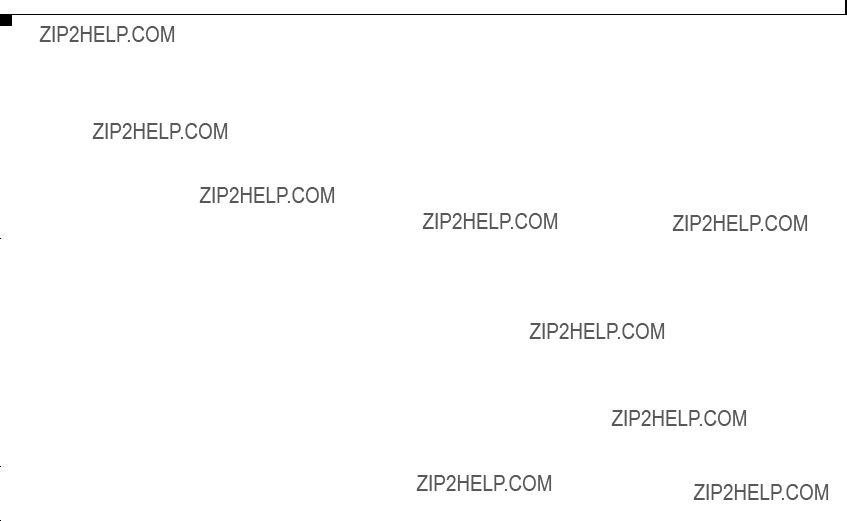
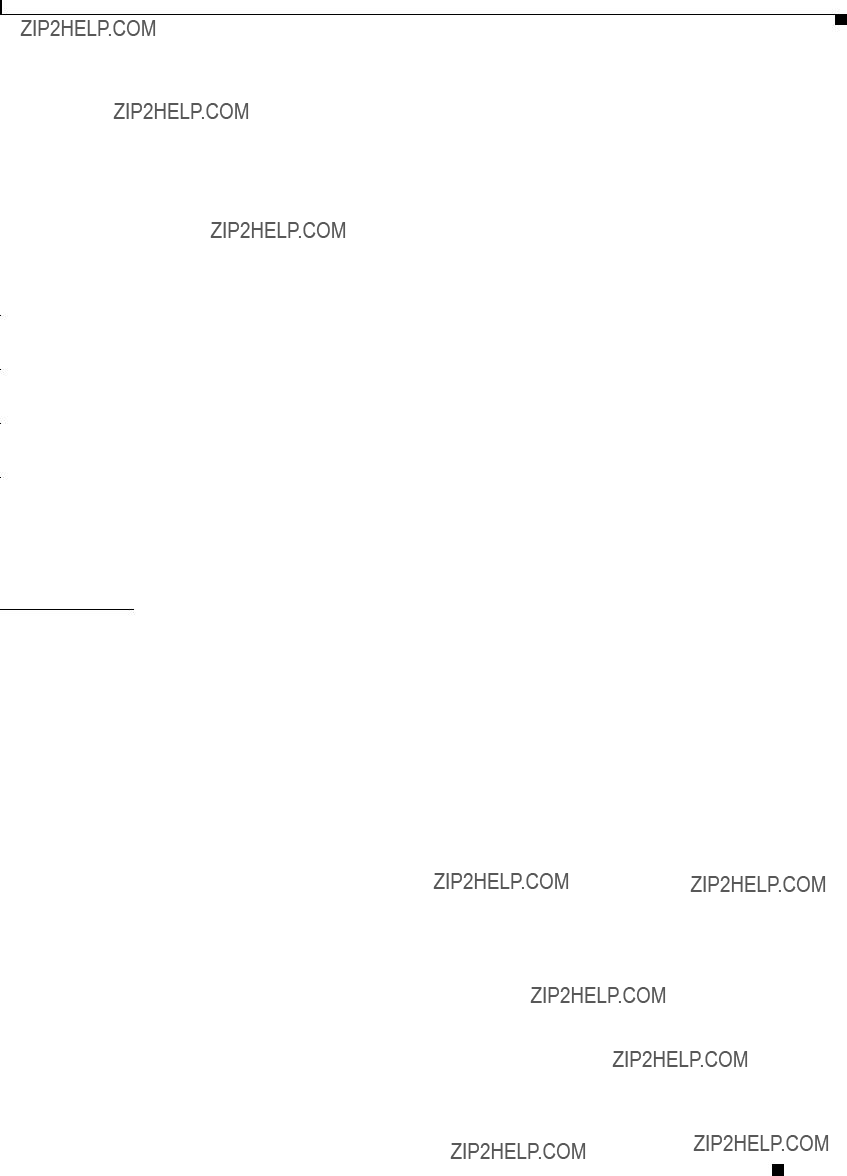



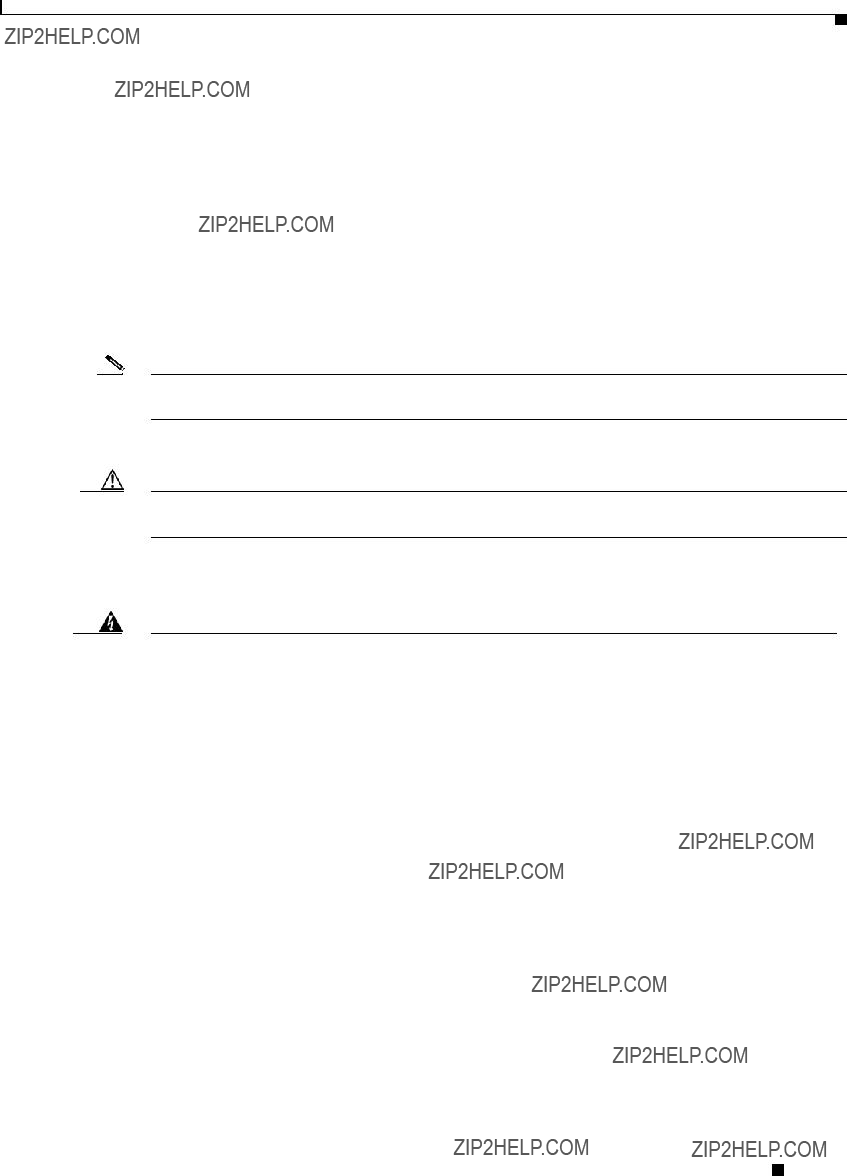


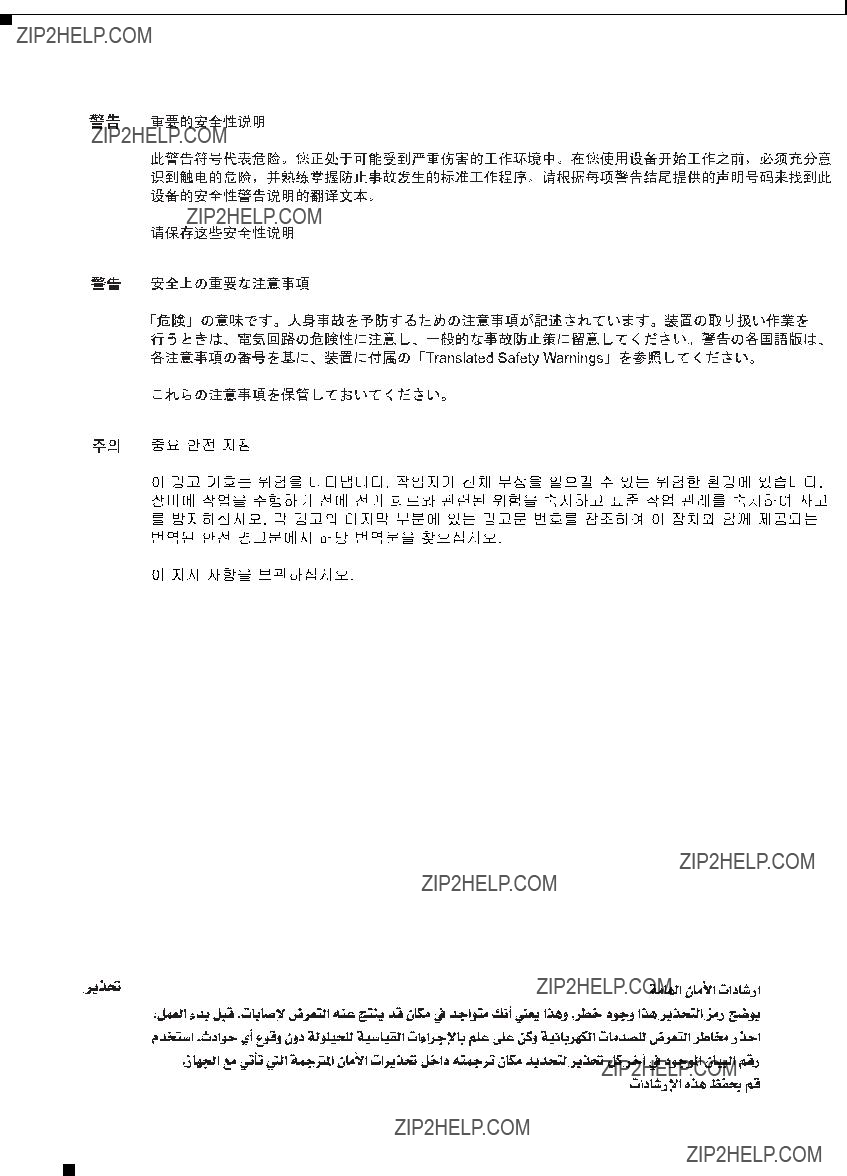









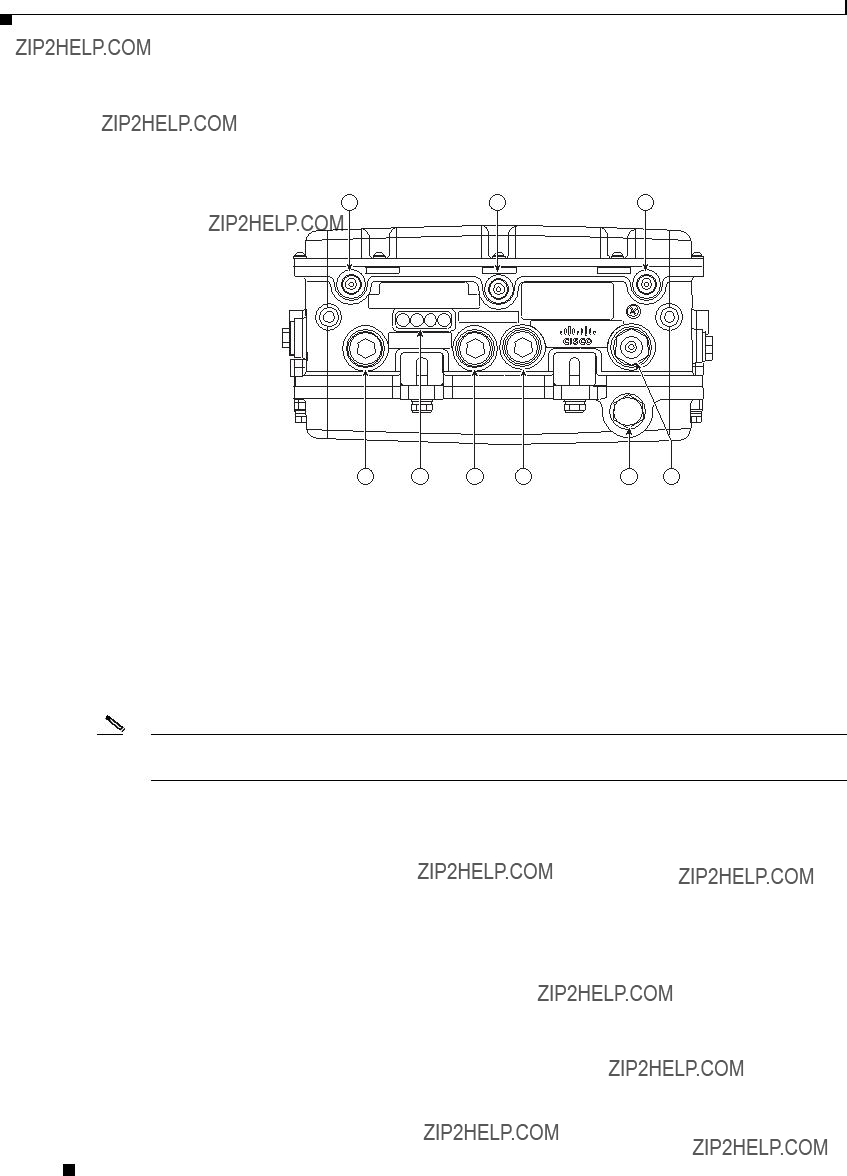


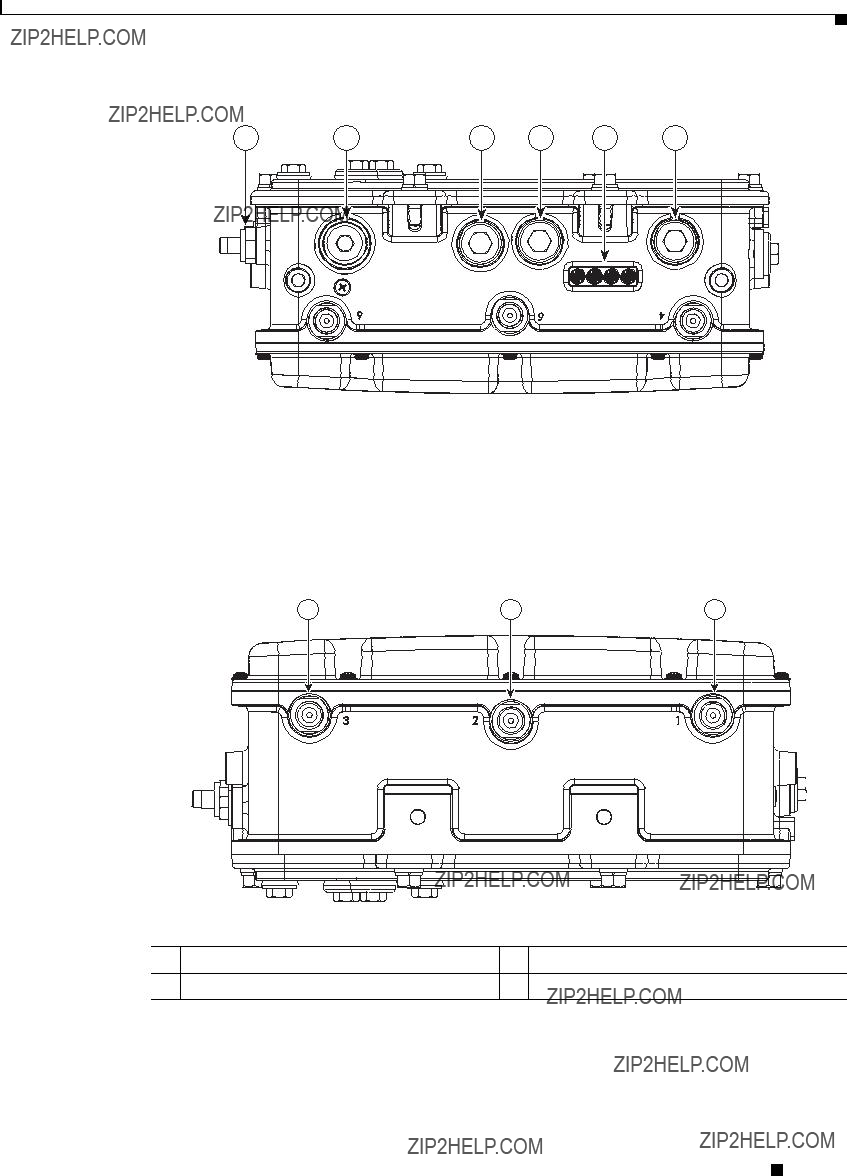
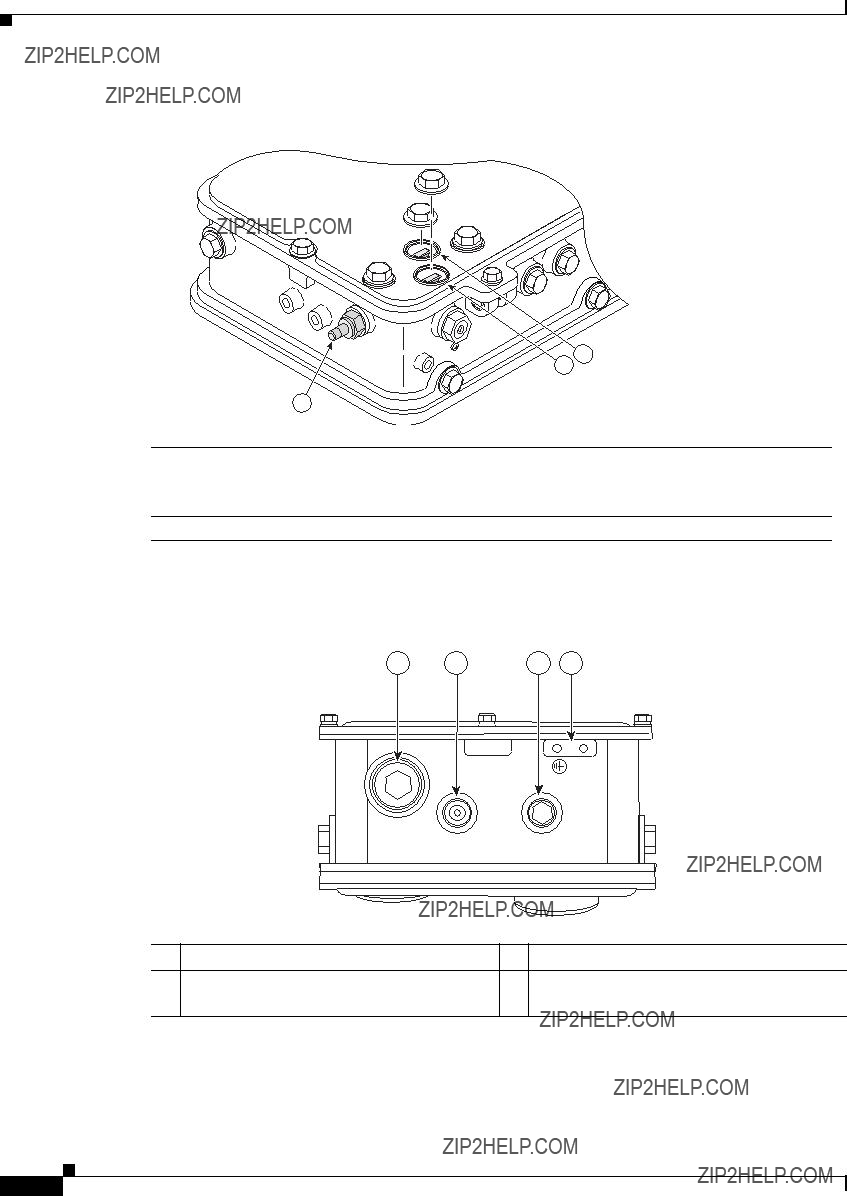







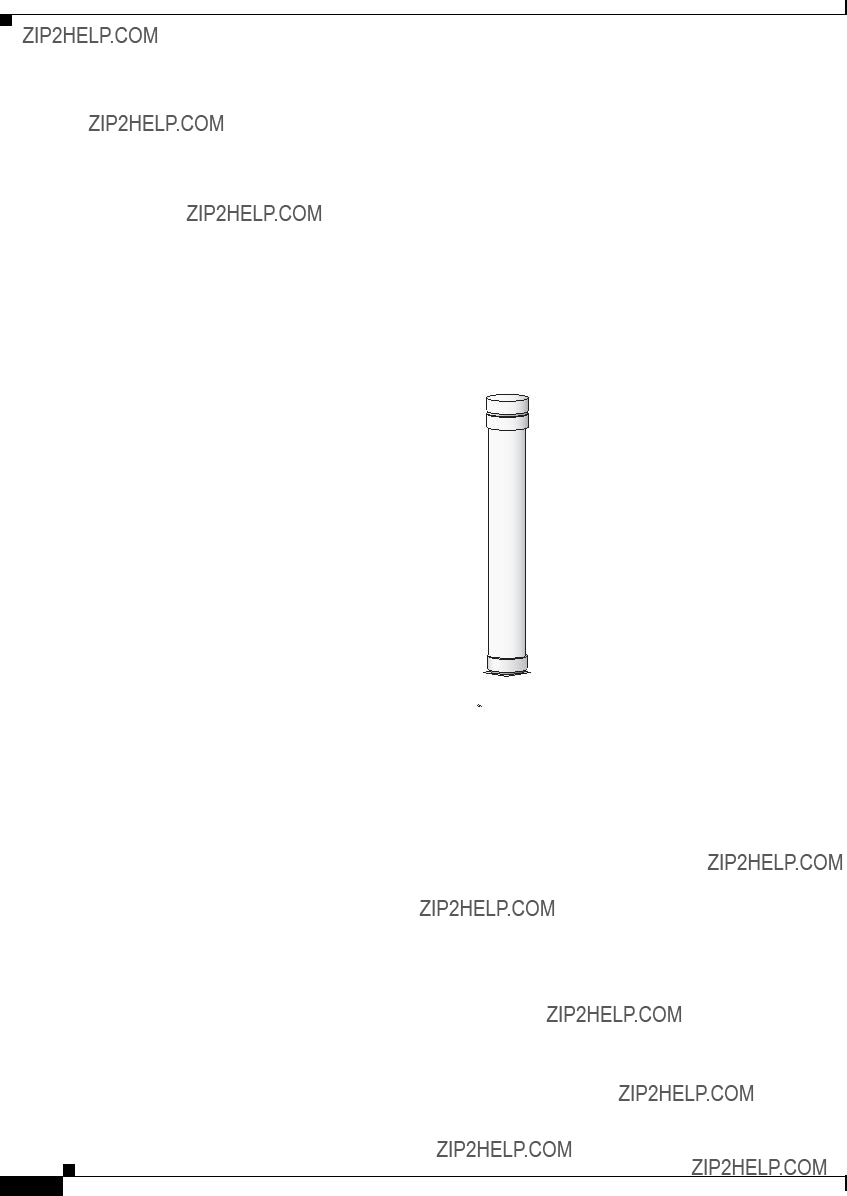


 345666
345666





 231297
231297


 345665
345665
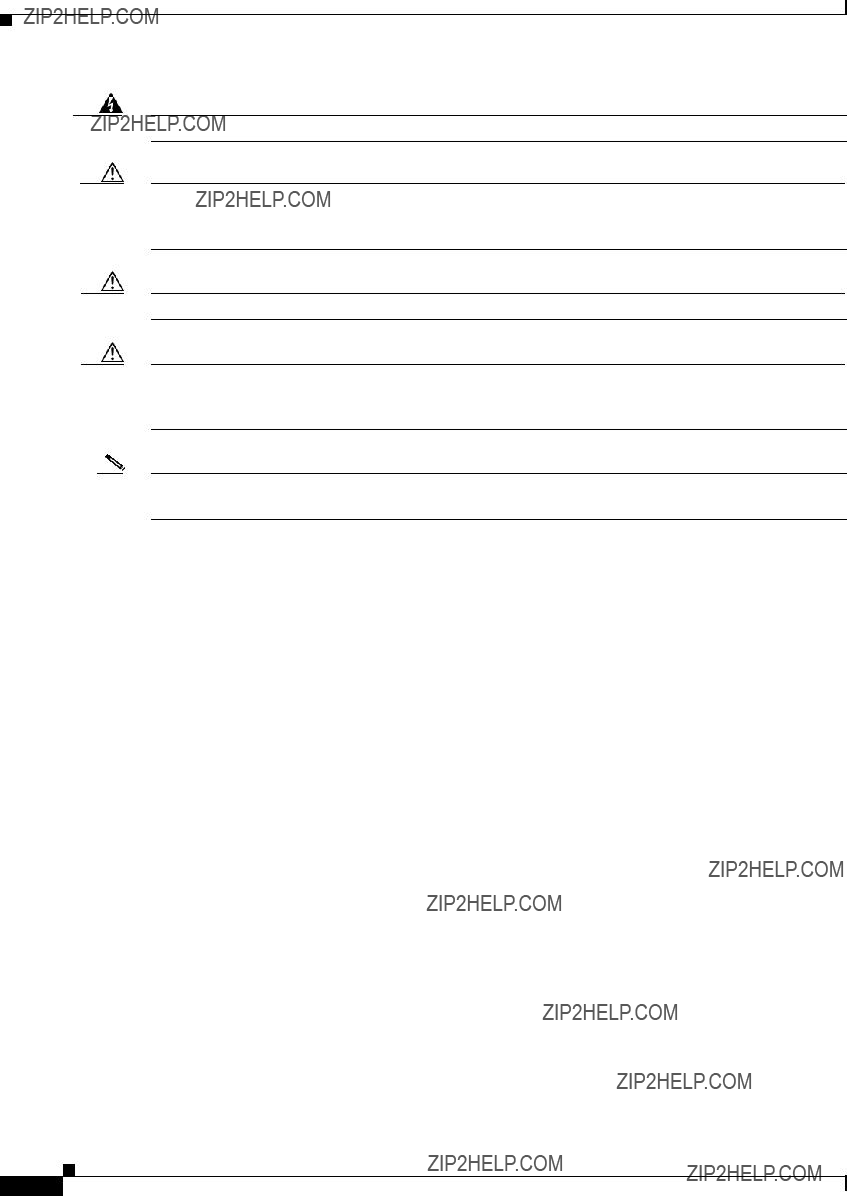


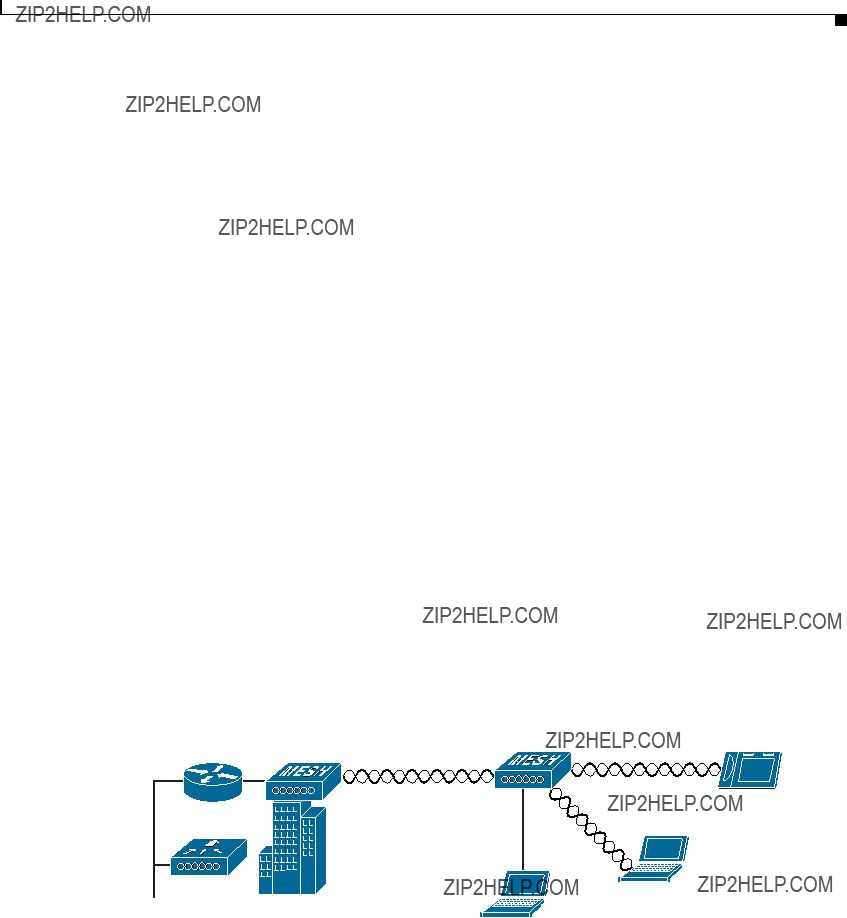


 255494
255494
 148441
148441

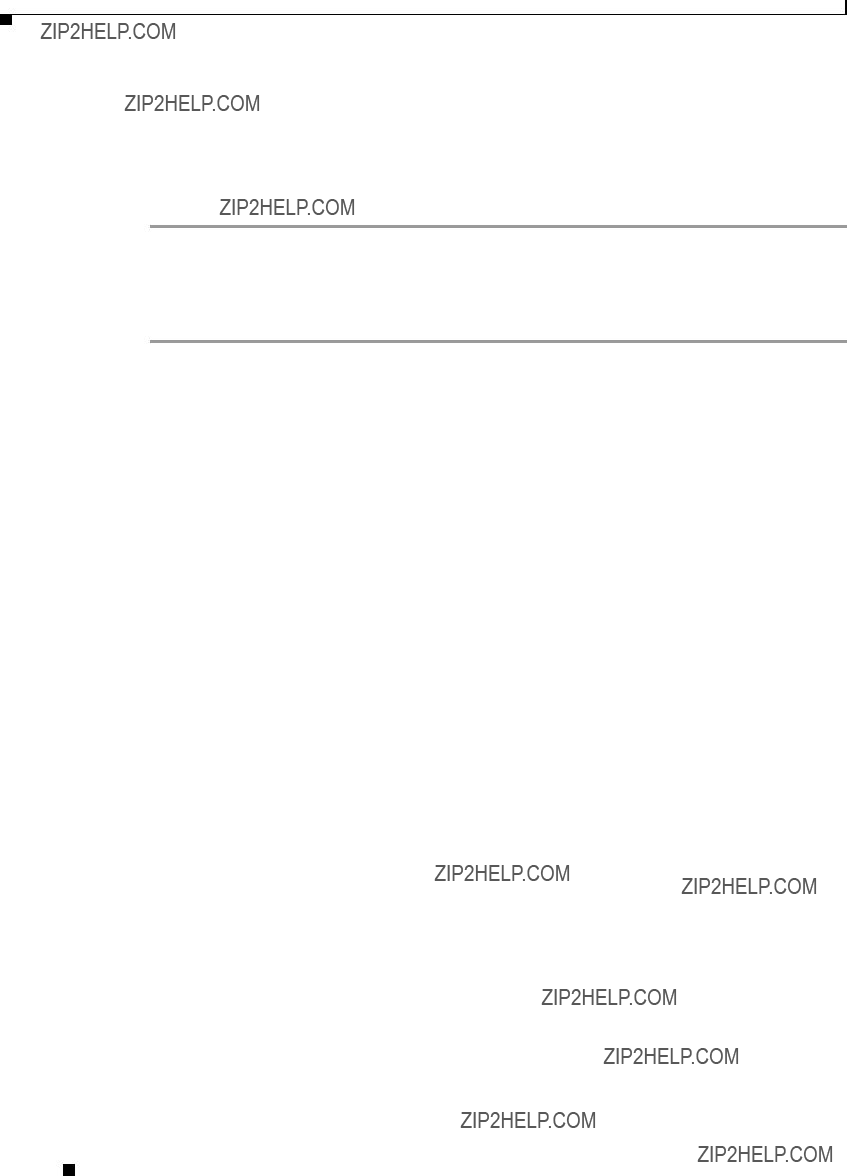






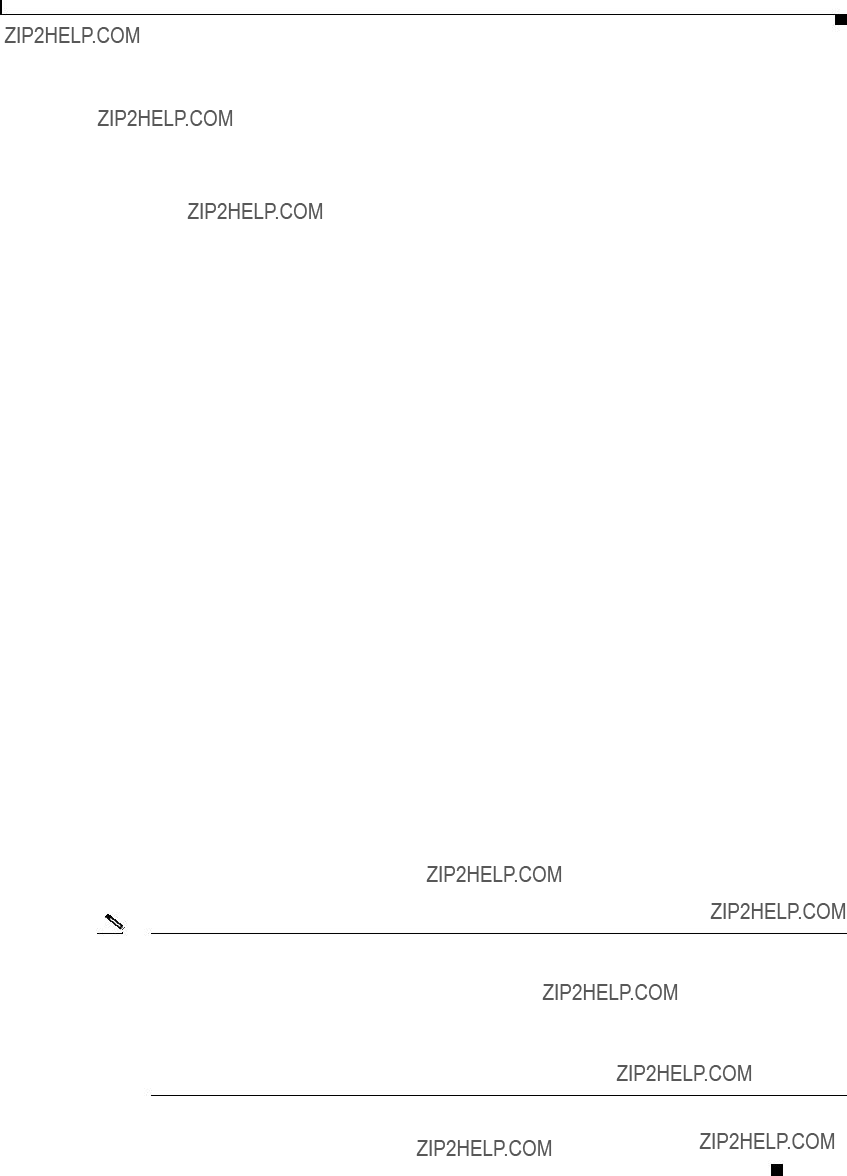


 5
5



